Kate Smith Fashion Trends of 1933
Evgeniya Porechenskaya // Shutterstock
Popular manner trends the year yous were born
If you were born in 1918, congratulations. According to the Pew Enquiry Center, you lot're one of about simply 72,000 centenarians in the U.s. and fewer than 500,000 worldwide. If yous've lived that long, you lot've seen some big changes in fashion along the mode. Some have come, gone, and come back over again. Others were regrettable fads that thankfully stayed expressionless once they went out of vogue. Others caught on quickly and never went out of fashion.
Some fashion trends are the consequence of war, others are the brainchildren of assuming, innovative designers. Some are born out of necessity, some are triggered past a single glory's sense of taste, and others arrive past accident. No matter the reason, fashion both steers and reflects the climate and culture of the time. Hither are 100 of the virtually memorable trends over the past century.
RELATED: Pop fads from the year you were born
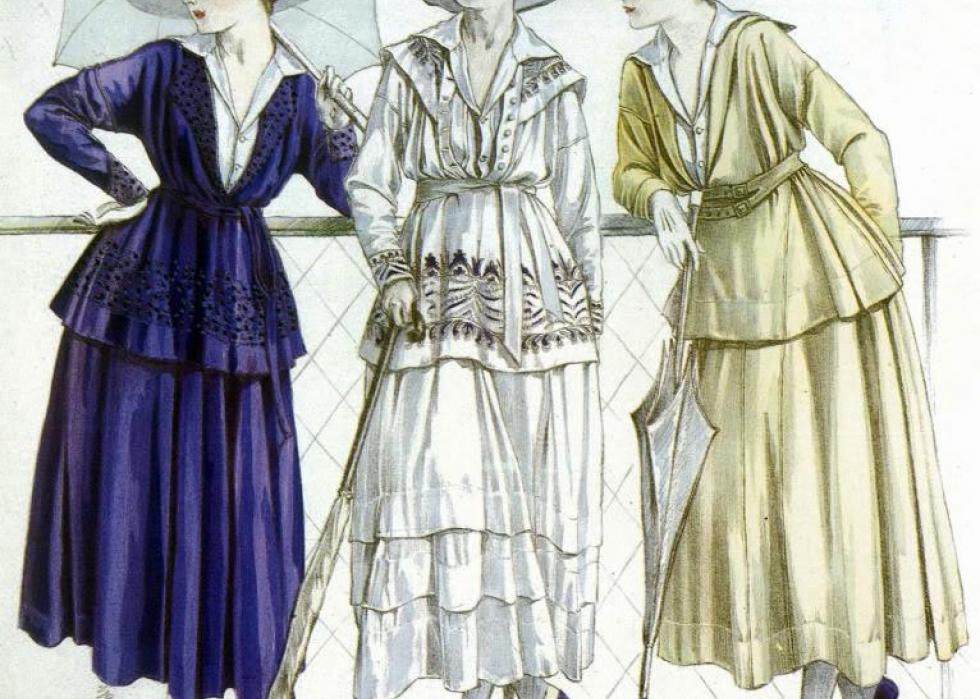
1 / 100
Les Elegances parisiennes Public Domain // Wikimedia Commons
1918: Parasols
In the 1920s, tanned skin came into vogue and by 1930, pocket-sized, frail, and decorative sun umbrellas were all but a retentiveness. In 1918, yet, parasols were however a common sight every bit women sported the accompaniment both for its part and its grade. Parasols, after all, had long been a symbol of high society.

2 / 100
Public Domain // Wikimedia Commons
1919: Trench coats
Long outerwear made from rubberized cotton had been around since the 1820s, simply what is now called a trench coat exploded in popularity after returning soldiers brought them back from World War I. Long, heavy, warm, and durable, they protected soldiers in the trenches not only from drenching rains, but too from the poison gas that has come to epitomize the conflict—the trademark wide collar was designed to tuck a gas mask into to make it airtight. Upon returning to noncombatant life, many soldiers just kept the rain jackets they were issued on the front end.
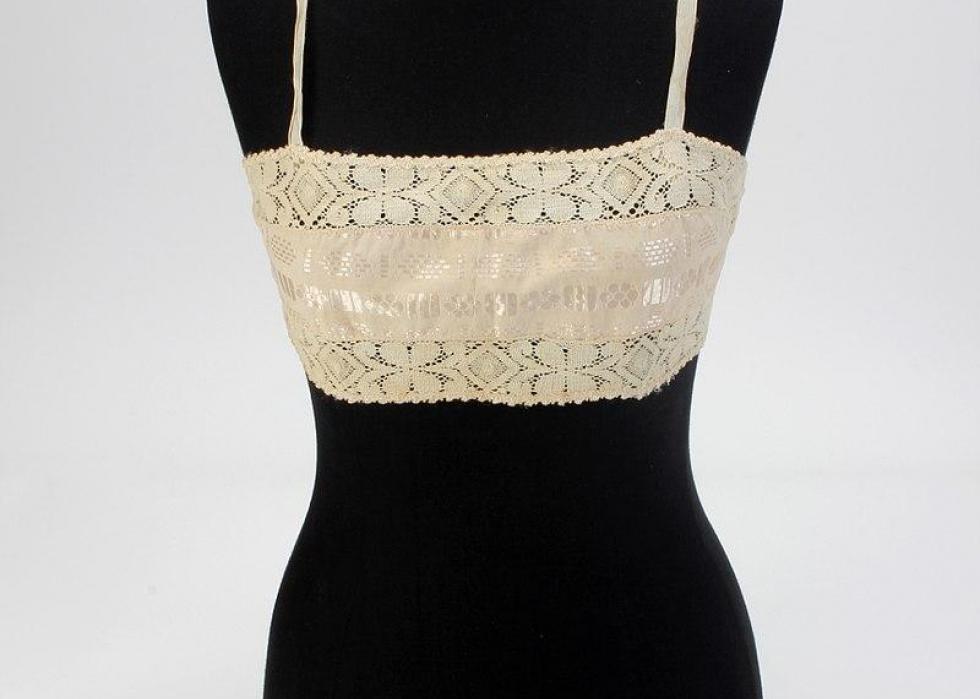
3 / 100
Auckland Museum // Wikimedia Commons
1920: Bandeau tops
By the 1920s, women had mostly abandoned the bosom-enhancing corsets and girdles of generations past. The era of the flappers was underway, and boyish bob cuts with adolescent bodies were the hot new look. Women in vogue were now sporting tight bandeau tops that intentionally flattened their breasts.
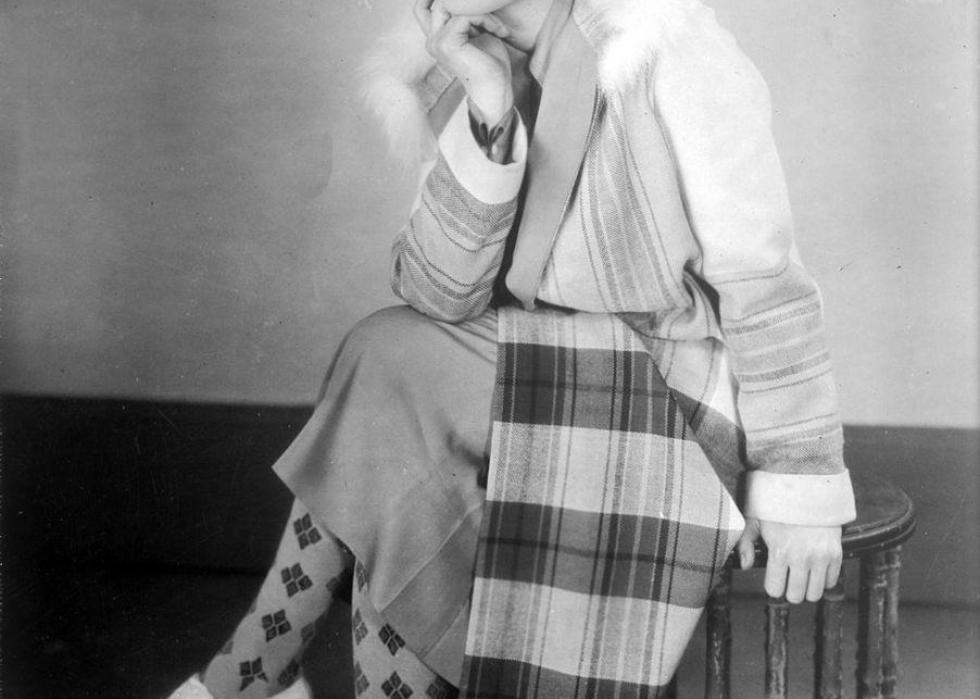
4 / 100
George Grantham BainLibrary of Congress // Wikimedia Eatables
1921: Cloche hats
Hats were a part—if not the virtually important office—of the standard compatible for men and women during the Roaring '20s, and few hats were more popular in 1921 than the extensive cloche hat. Snug and worn low over the eyebrows, cloche hats perfectly complemented the brusque bob cuts that flapper women made famous.
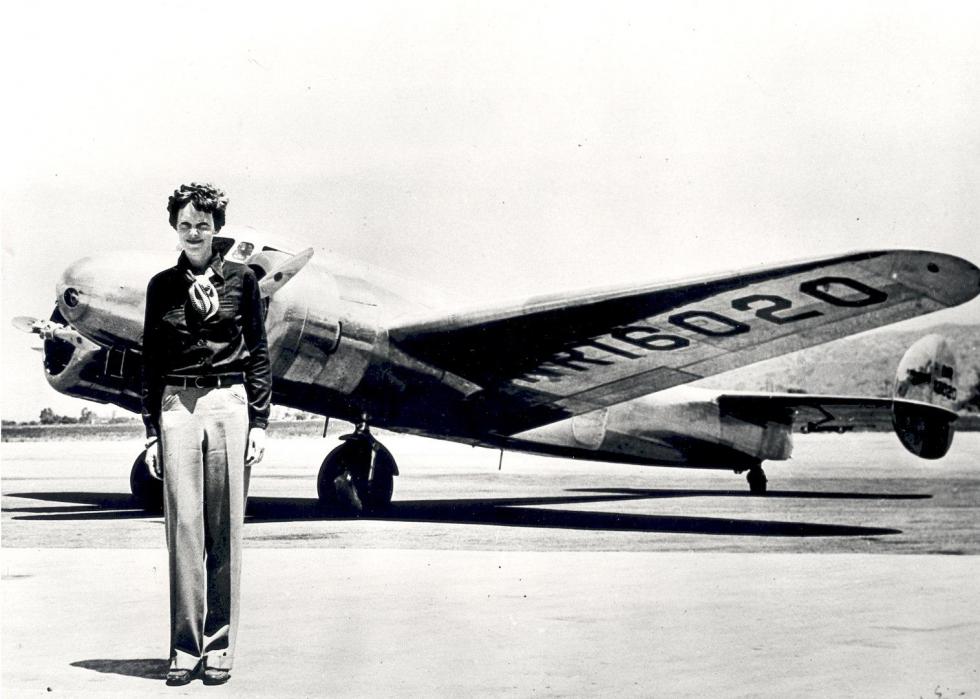
5 / 100
NASA // Wikimedia Commons
1922: Trousers for women
Few people impacted 20th-century fashion more thoroughly than Coco Chanel, and although women briefly sported trousers while working in manufacture while the men were abroad during World War I, it was Chanel who made pants a female person fashion argument. Chanel reportedly loved the wait and feel of trousers, wore them often and publicly, and by the early 1920s, she started designing them for women.
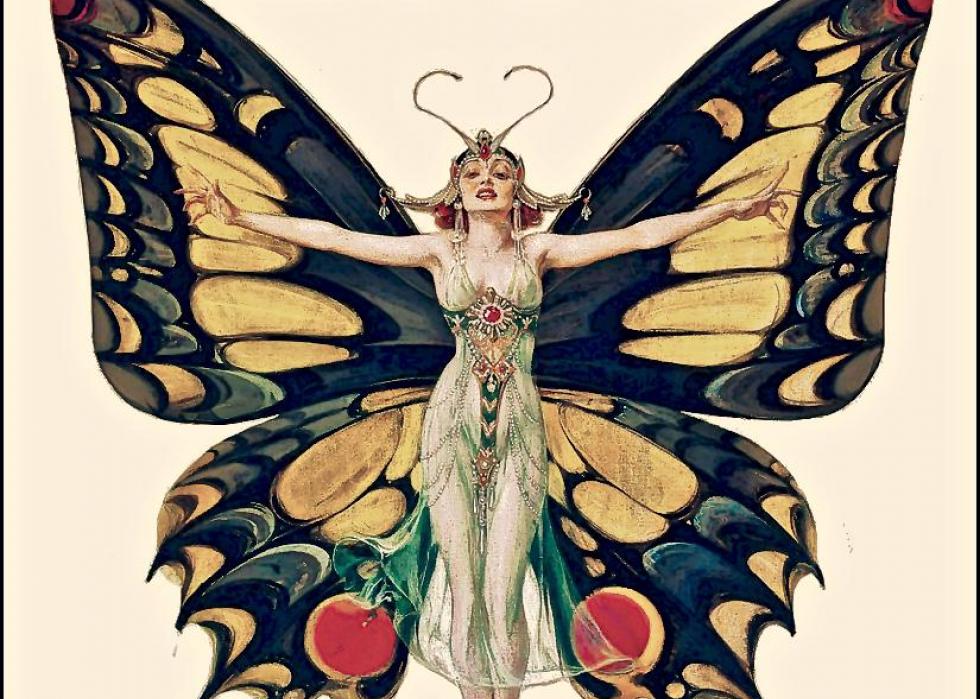
half dozen / 100
Swallowtail Garden Seeds // flickr
1923: Art deco dress
The art deco move that swept Europe and the United States in the 1910s was in full event by 1923, and the style impacted article of clothing as much equally architecture. That year, women's clothing was trending toward geometric shapes and patterns, frequently with seaming intentionally left visible to add detail, forth with surface designs and graphic embellishment.
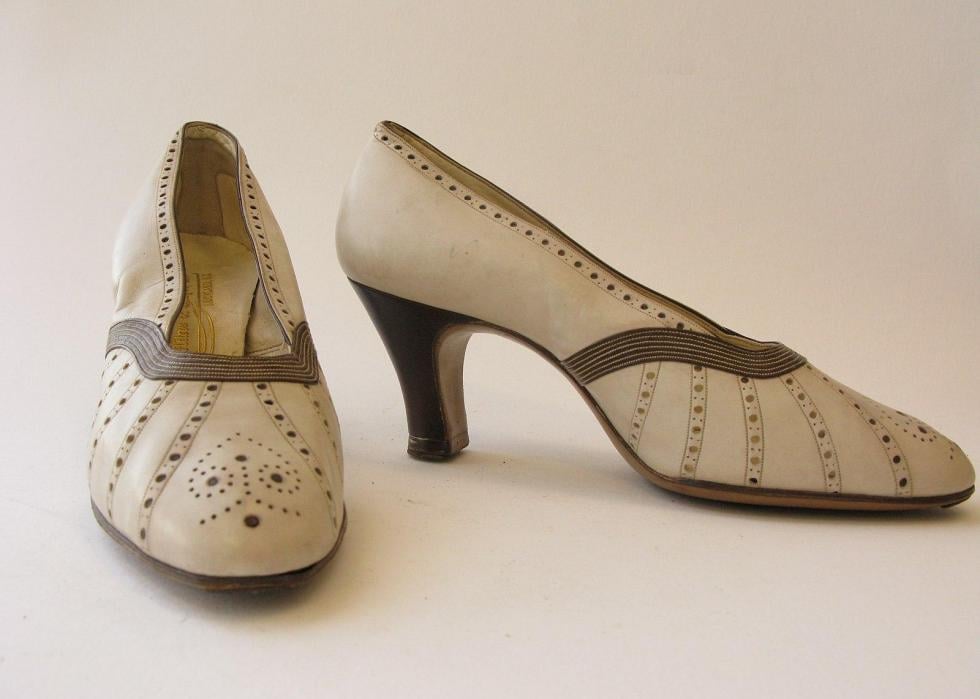
7 / 100
Auckland Museum // Wikimedia Eatables
1924: High-heeled shoes
Loftier heels had been around for centuries before the '20s roared—in fact, they were originally designed for men and were often preferred past royalty. In the 1920s, however, the modern designer high heel was born. A typical advertising from 1924 might offer heels with intricate detailing and an elongated toe with bows or crisscrossing straps, not unlike the kind you'd probable see in a catalog today.
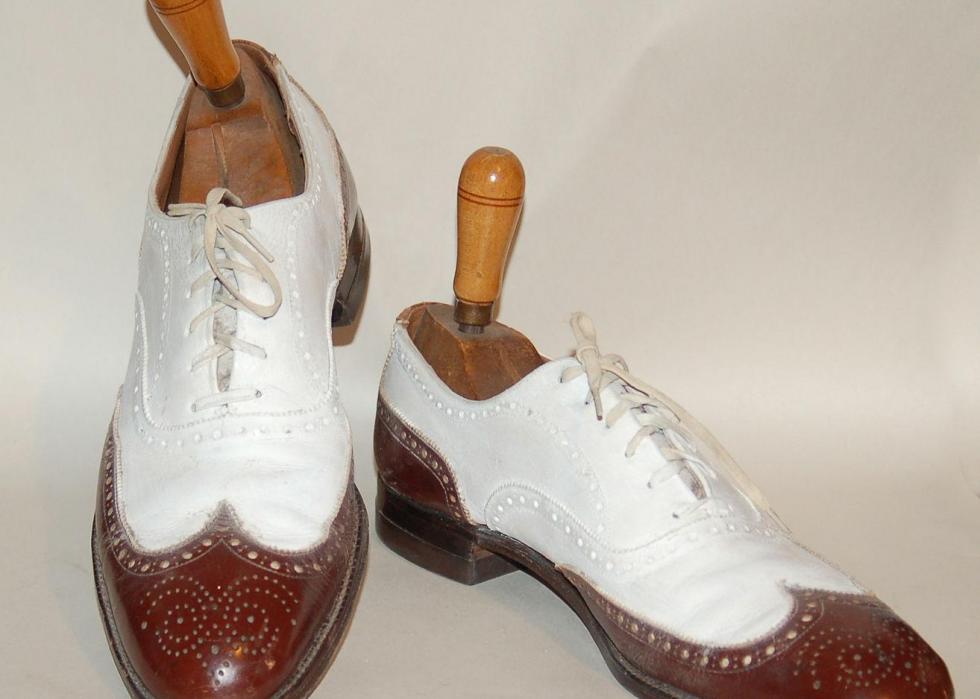
eight / 100
Sobebunny // Wikimedia Commons
1925: Wingtip shoes
Brogue-style shoes had been effectually long before the 1920s, only during the and so-unprecedented affluence of that decade, accessories like shoes and hats became more stylish to keep up with the dapper men's suits of the era. Past the mid-'20s, a brogue spinoff called wingtips emerged, and their pointing toe caps, round perforations and, of course, swooping "wings" came to define brio in footwear.
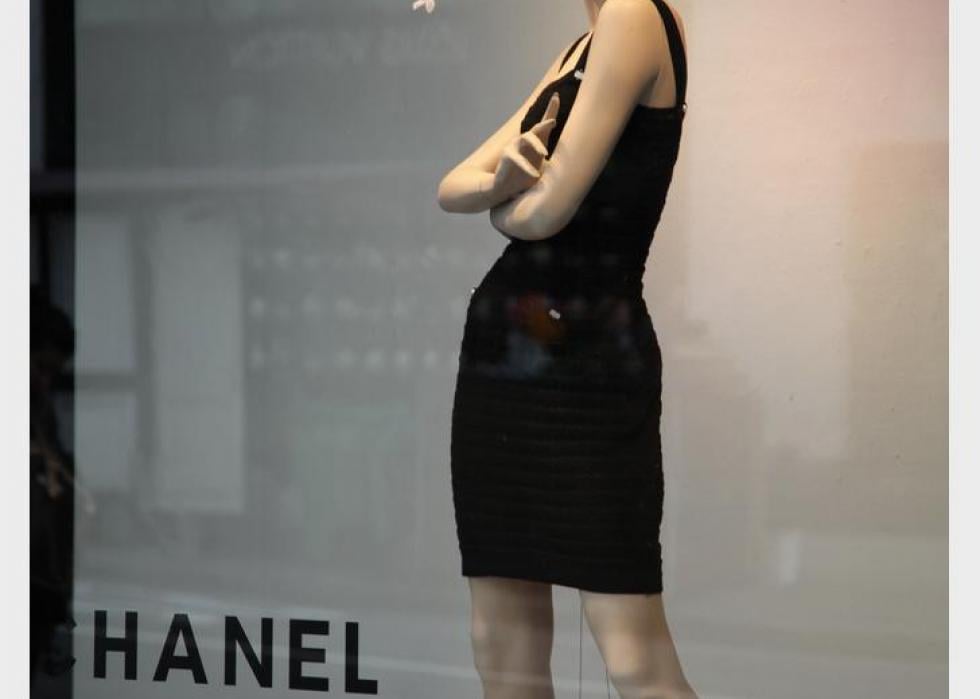
9 / 100
1926: Little blackness clothes
Few pieces of women's clothing are more ubiquitous or indelible than the versatile and reliable LBD—the little black wearing apparel. Reverse to popular conventionalities, however, it didn't starting time with Audrey Hepburn in "Breakfast at Tiffany's" in 1961. In 1926, Vogue published a cartoon of a basic, narrow-sleeved apparel designed past Coco Chanel that the publication dubbed "Chanel's Ford" because it was affordable, accessible to the masses and, of course, blackness.
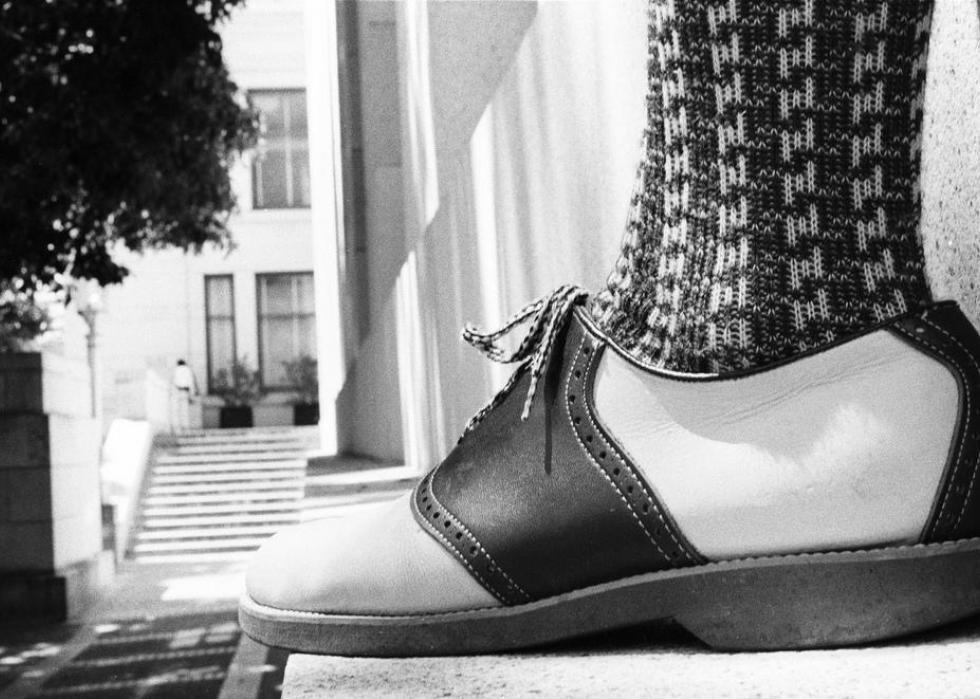
x / 100
Paul A Hernandez // Wikimedia Commons
1927: Saddle shoes
A.K. Spalding introduced the genderless saddle shoe in 1906, and by the late 1920s, they had become nearly ubiquitous—a trend that would hold for decades to come. Preferred by young people but too ofttimes seen on older Americans, saddle shoes incorporate a dissever piece of leather sewn over the waist of the shoe, frequently in a contrasting color.

xi / 100
Lewis Hine // Wikimedia Commons
1928: Newsboy cap
Kids hawking newspapers while shouting, "Extra! Extra!" were a mutual sight in U.Southward. cities in the 1920s—and their headwear of choice came to be known every bit the newsboy cap. Once pop with European elites, the iconic eight-slice cap was available to all castes in the United States, from kids in processed stores to grownup automobile enthusiasts.
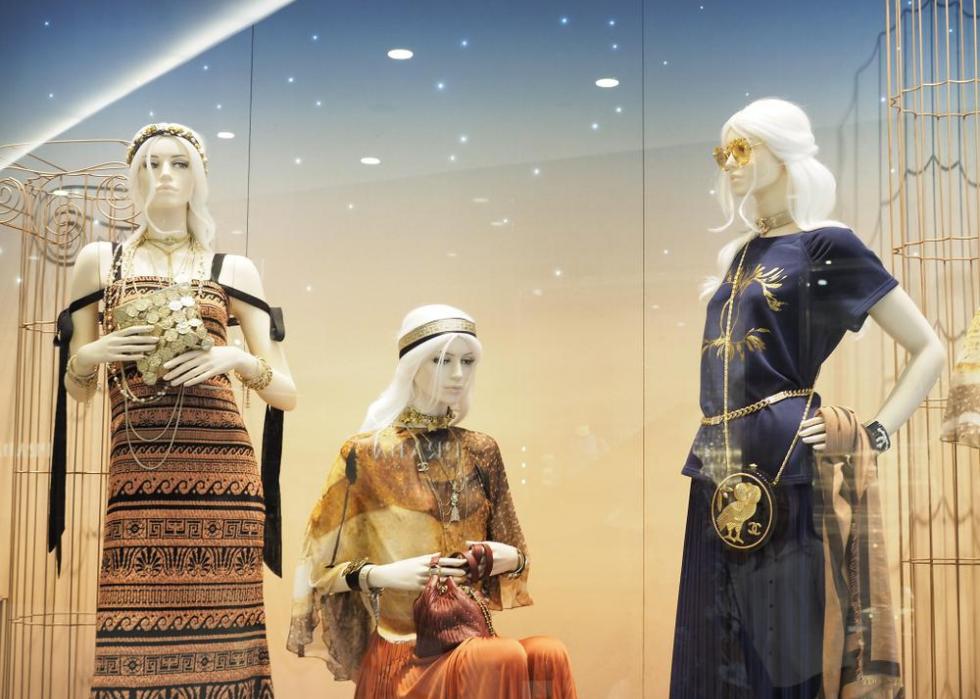
12 / 100
Ding Photo Studio // Shutterstock
1929: A purse with straps
In 1929, groundbreaking designer Coco Chanel did what groundbreaking designers do: she broke new ground. That year, she designed a new kind of handbag inspired by the shoulder slings she saw war machine men utilise to comfortably carry their gear. According to Glamour, she said in a biography years later, "I got fed up with holding my purses in my hands and losing them, so I added a strap and carried them over my shoulder."
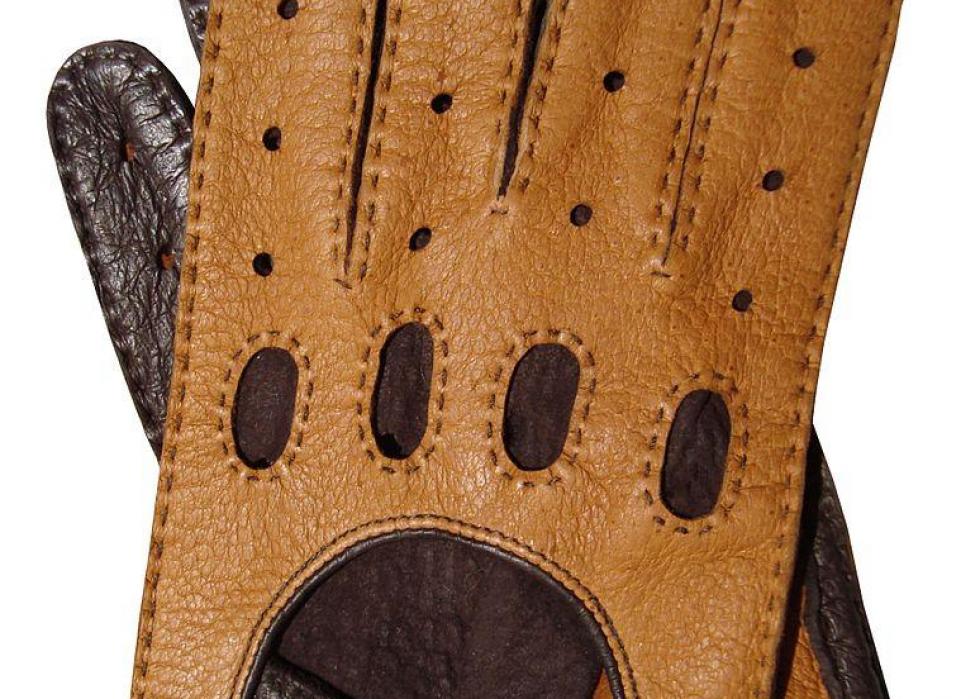
13 / 100
-oo0(GoldTrader)0oo- // Wikimedia Commons
1930: Driving gloves
Past 1930, cars were cheaper and more than accessible than they'd ever been before, and the fashion of the era shifted to reflect America's booming car culture. By 1930, both men and women sported driving gloves, which by that yr had become shorter, thinner, tighter, and unlined to requite the fingers a tighter grip on the cycle.
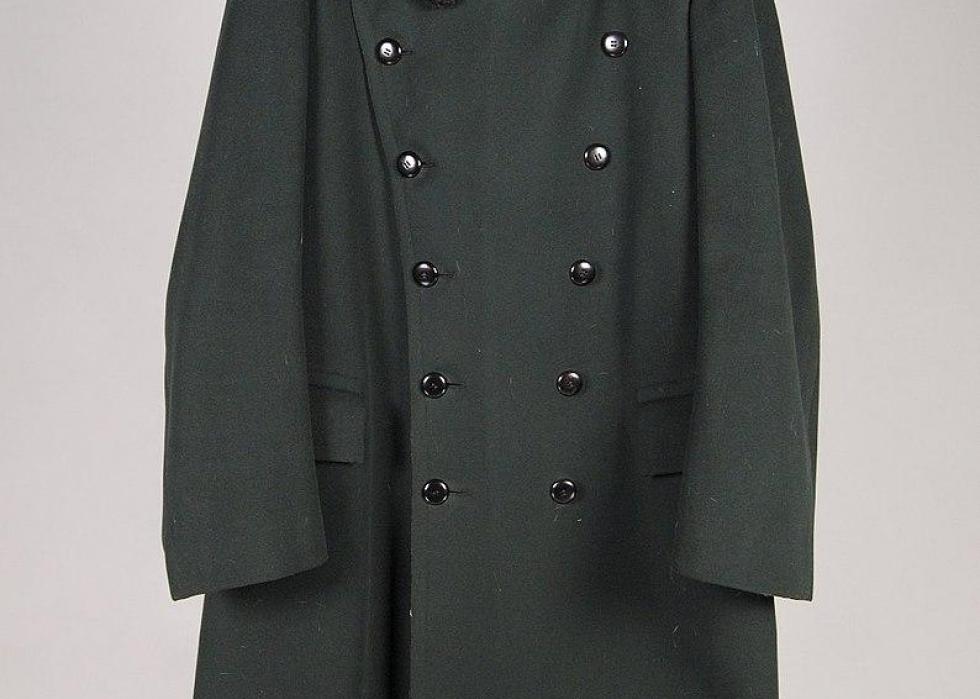
fourteen / 100
Brooklyn Museum Costume Collection at The Metropolitan Museum of Fine art // Wikimedia Commons
1931: Car coats
In 1931, driving was part of the American experience—but the first in-dash car heater was still years away. Car coats, therefore, were a style tendency born out of necessity. Both men and women wore them, and they were fabricated for different seasons, in different styles, and from unlike fabrics. It was common to run into people wearing them even when they weren't in their cars.
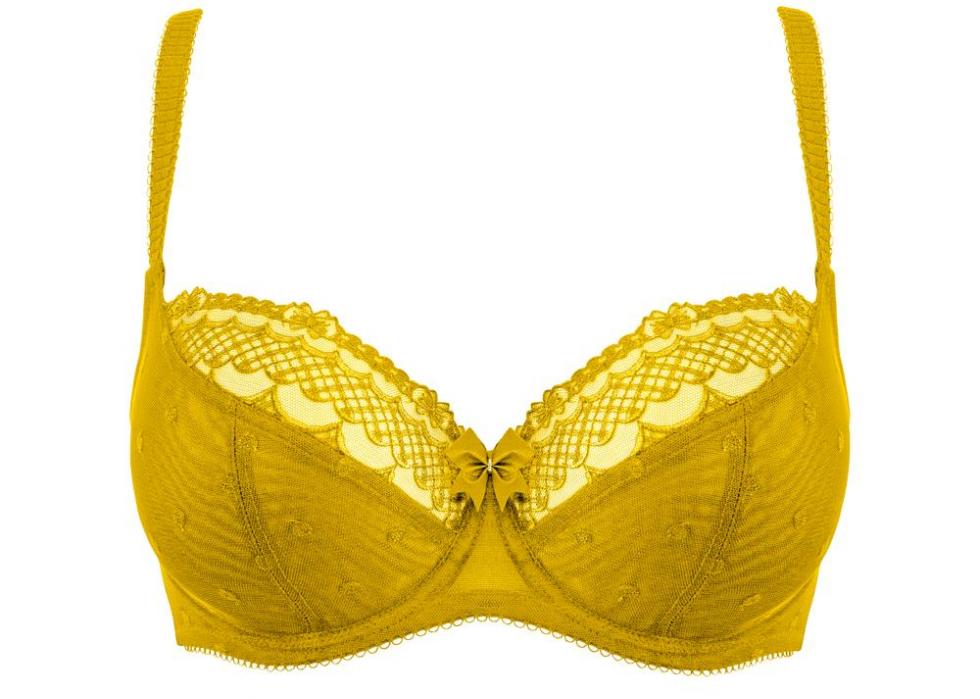
15 / 100
Artem Avetisyan // Shutterstock
1932: Modern bras
In the tardily 19th century, primitive Victorian corsets gave style to girdles, which shortly gave way to divide top-and-bottom women's underwear, which was followed by the brassiere. In 1932, nevertheless, iii things happened that ushered in the modernistic era. "Brassiere" was shortened to "bra," bras got eyehooks and adaptable bands, and the alphabet-based cup-size system was born.
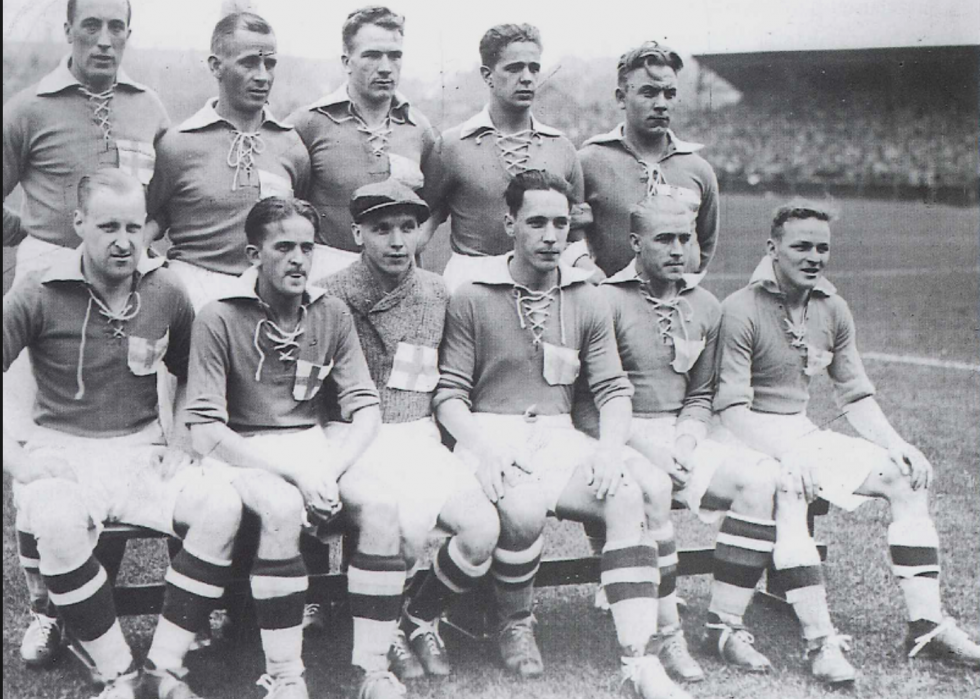
xvi / 100
Unknown // Wikimedia Commons
1933: Sport shirts
While formal habiliment is perhaps the well-nigh remembered way for men in the 1930s, multiple leisure looks began to take off during the Depression and by 1933, sport shirts were in faddy. Men flocked to purchase bush shirts, polo shirts, and button-downs with broad, open collars.

17 / 100
T. Eaton Co. Limited // Wikimedia Commons
1934: Gear up-to-article of clothing designer clothes
Designer apparel had long been the exclusive rule of women who could afford to have each piece individually tailored to her body, but all that inverse in 1934. Cheers largely to Chanel'due south collections and those offered past her imitators, heart-form women were now sporting the high-fashion tailored looks long seen in magazines.
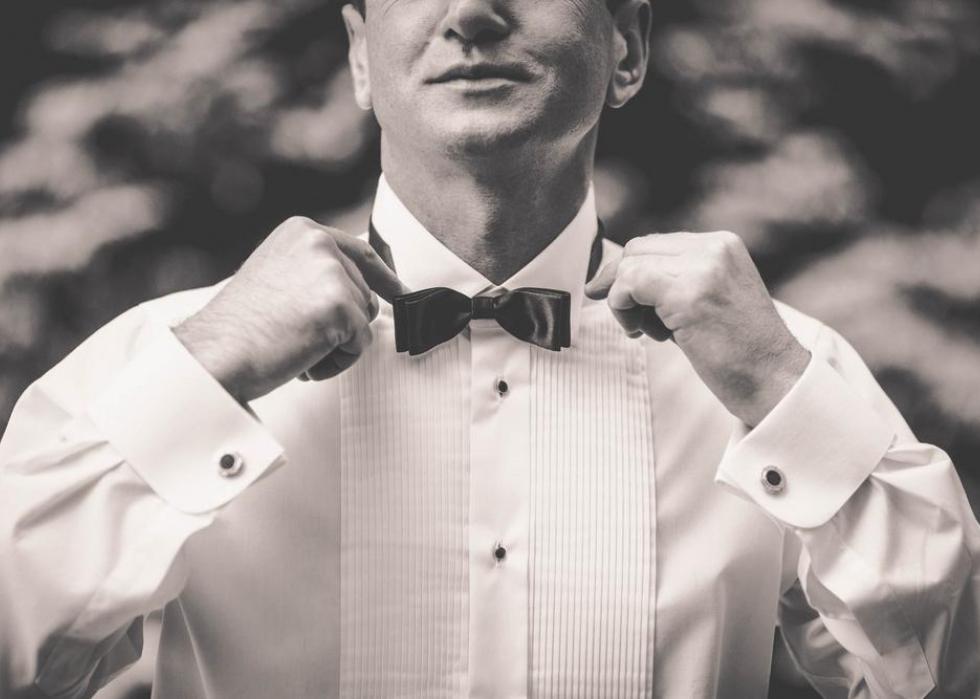
18 / 100
IVASHstudio // Shutterstock
1935: Tuxedos
Tuxedos arrived in Europe in 1865 as a regal culling to formal tailcoats, and by the early on 20th century, America had adopted the tuxedo every bit the male formal vesture of choice. The tuxedo's popularity waned in the '20s, just came back in a large style in the 1930s. By 1935, bluish wool was more than popular than black wool, double-breasted tuxes—which would previously have been too informal—were the preferred look and black-tie was back in vogue as white-necktie past that point was generally left to special occasions.
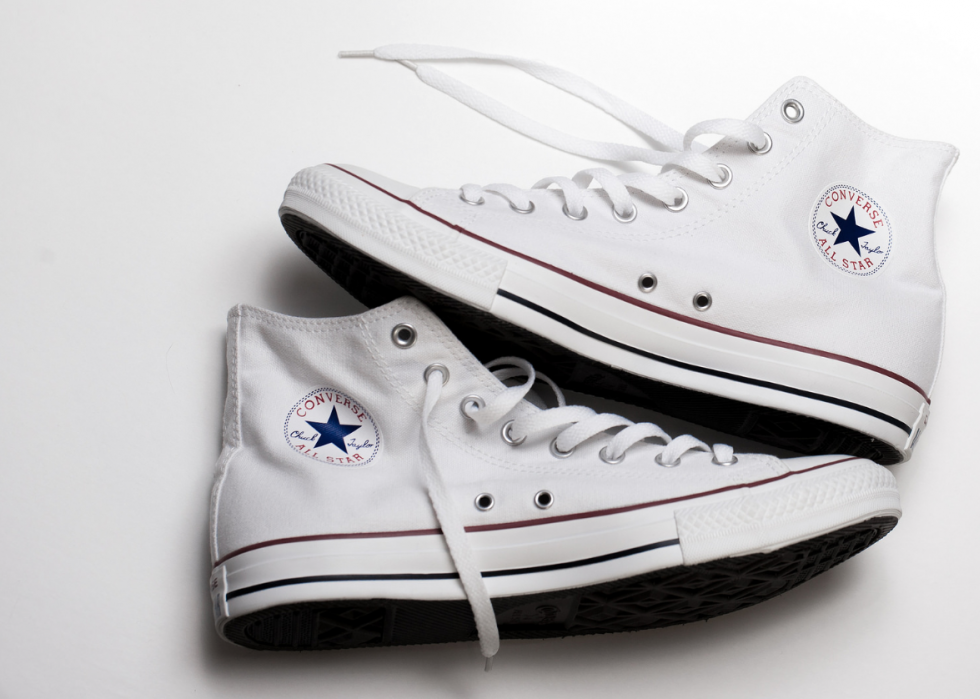
19 / 100
Tlc3707 // Wikimedia Commons
1936: Chuck Taylor All Stars
Although the Converse Rubber Corporation unveiled the All Star basketball game shoe in 1917, everything changed in 1936. That yr, the familiar canvas shoe—the oldest and best-selling basketball sneaker in history—debuted in a white high-top model during that year'southward Olympic Games, making information technology an instant sensation.
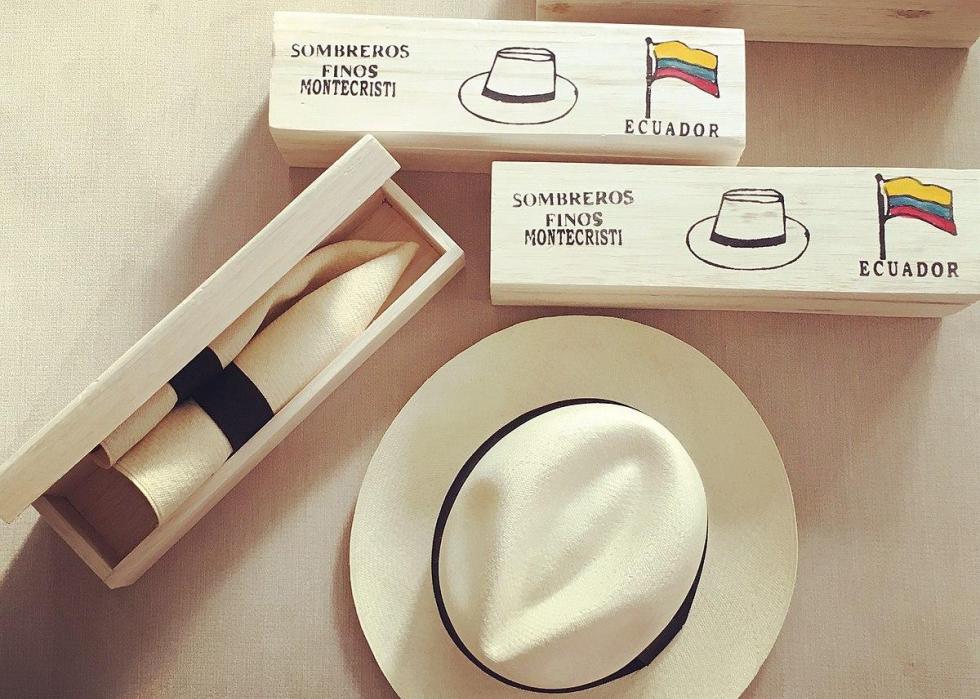
20 / 100
Lamarquezahats // Wikimedia Commons
1937: Panama hats
Panama hats take gone in and out of vogue from the early 1500s all the mode up to the nowadays twenty-four hours. The brimmed straw hats enjoyed a massive resurgence in popularity in the belatedly 1930s, withal, cheers to stars like Gary Cooper and Orson Welles, who wore them both on screen and in real life. By 1944, hats were Ecuador's principal export, topping fifty-fifty bananas.
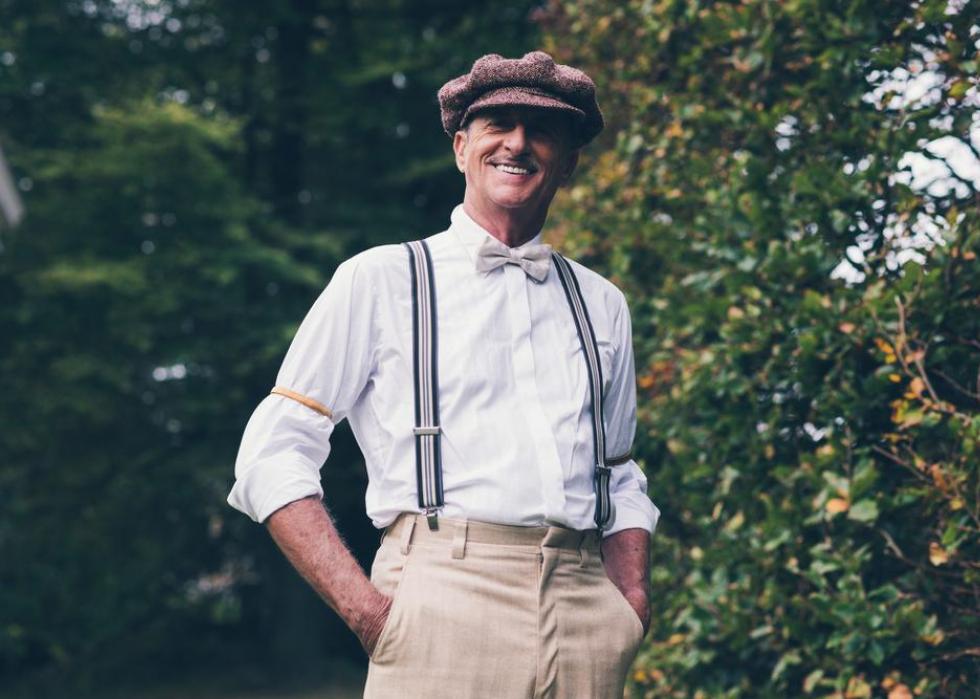
21 / 100
Ysbrand Cosijn // Shutterstock
1938: Suspenders
By 1938, the trend of men wearing visible suspenders was growing, but information technology was notwithstanding considered so risque that 1 town on Long Island, Due north.Y., tried to ban men from wearing suspenders without a coat. The ban failed, the tendency was set, and actors like Humphrey Bogart would enshrine the look by wearing visible suspenders on the big screen.

22 / 100
Arnold T. Palmer / Library of Congress // Wikimedia Eatables
1939: Snoods
Knitted or crocheted hairnets have kept women'southward hair out of their faces since time immemorial. In the 1940s, even so, snoods soared in popularity—primarily cheers to something that happened in 1939. That twelvemonth, Vivien Leigh's character Scarlett O'Hara burned them into the American imagination with her functioning in "Gone With the Wind."

23 / 100
Lubbock Evening Periodical // Wikimedia Commons
1940: Fedoras
Fedoras take gone in and out of style from the fourth dimension they arrived at the turn of the 20th century until the present day. The lid'due south heydey, nevertheless, was a vast period betwixt the late 1920s and early 1950s when the functional chapeau was the finishing touch the formal attire that men wore in that era—although fedoras take long been popular with women, as well. By 1940, the human who would come up to define the hat, Frank Sinatra, striking the radio.
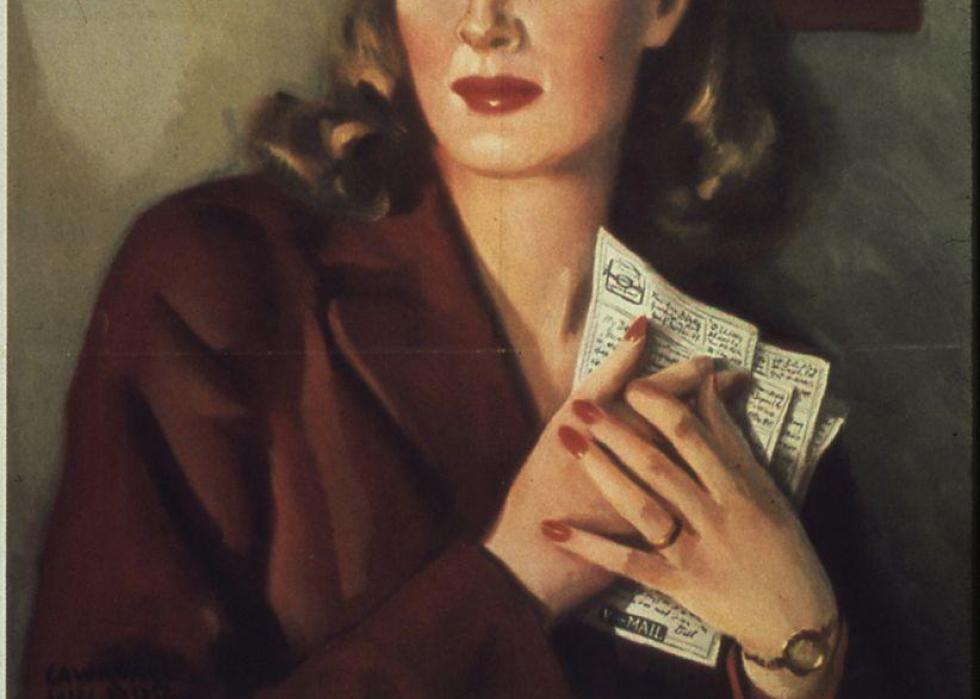
24 / 100
U.S. National Archives and Records Administration // Wikimedia Commons
1941: Propaganda scarves
In 1941, the United States entered World War 2, and by that time, head scarves had already gone from functional garment to loftier-fashion accessory. That year, several companies cashed in on the patriotic fervor sweeping the nation by offering and then-called propaganda scarves, which were emblazoned with slogans similar "Into Battle" and "Salvage Your Rubber."
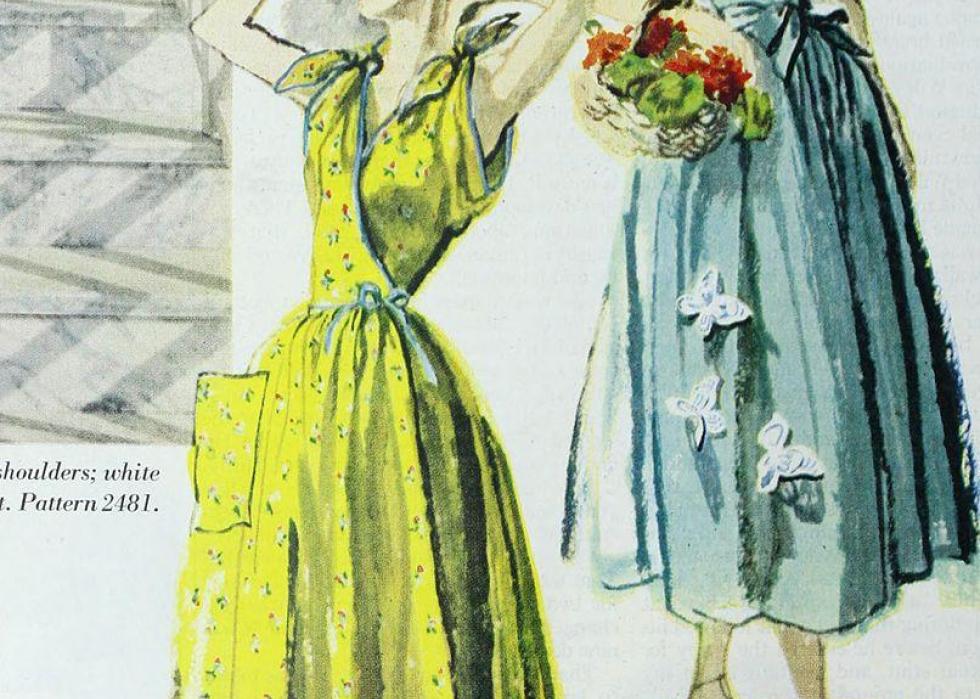
25 / 100
Ladies Home Journal // Wikimedia Eatables
1942: Wrap dresses
In the early 1940s, a fancier version of the common day dress came into style—the wrap dress. Commonly worn to Sunday brunches or while entertaining guests, wrap dresses had gathers and pleats that wrapped around the forepart.
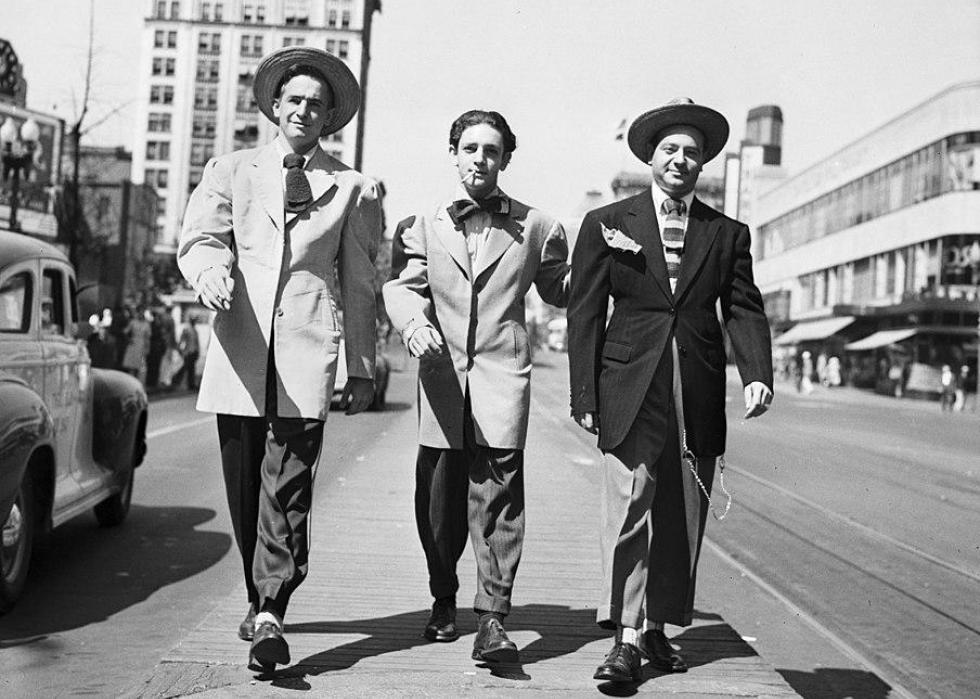
26 / 100
Ollie Atkins // Wikimedia Commons
1943: Zoot suits
The Zoot Adapt Riots were a series of attacks in 1943 by white policemen and American service members on immature Latinos and other minorities in their ain Los Angeles neighborhoods. Although racial tension and not fashion was the source of the mele, the zoot adapt became a symbol of the conflict. The amorphous suits—which were the preferred manner for black musicians in New York and Latinos in California—were viewed with suspicion as a "badge of delinquency" by much of flush white America, just equally the hoodie would be seventy years later.
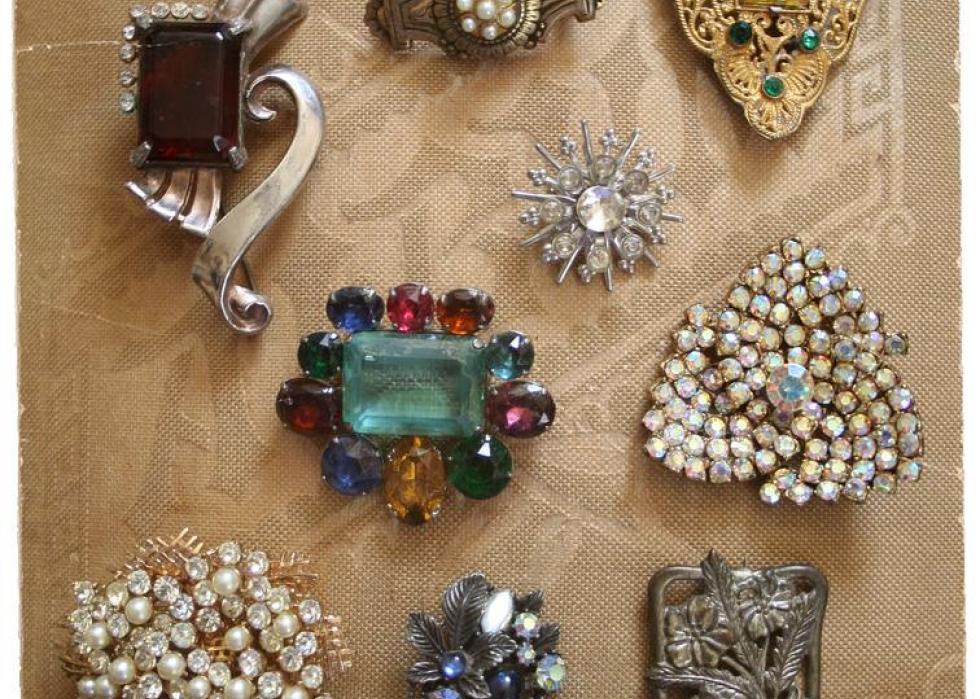
27 / 100
Playingwithbrushes' // Wikimedia Commons
1944: Brooch
Past the mid-1940s, a detail kind of jewelry was condign a common sight. Information technology wasn't worn around the neck, on the fingers, or in the earlobes, but on the lapel. They were brooches, and although they weren't invented at the finish of World War Two, that'southward when they enjoyed a keen of popularity as designer accessories.
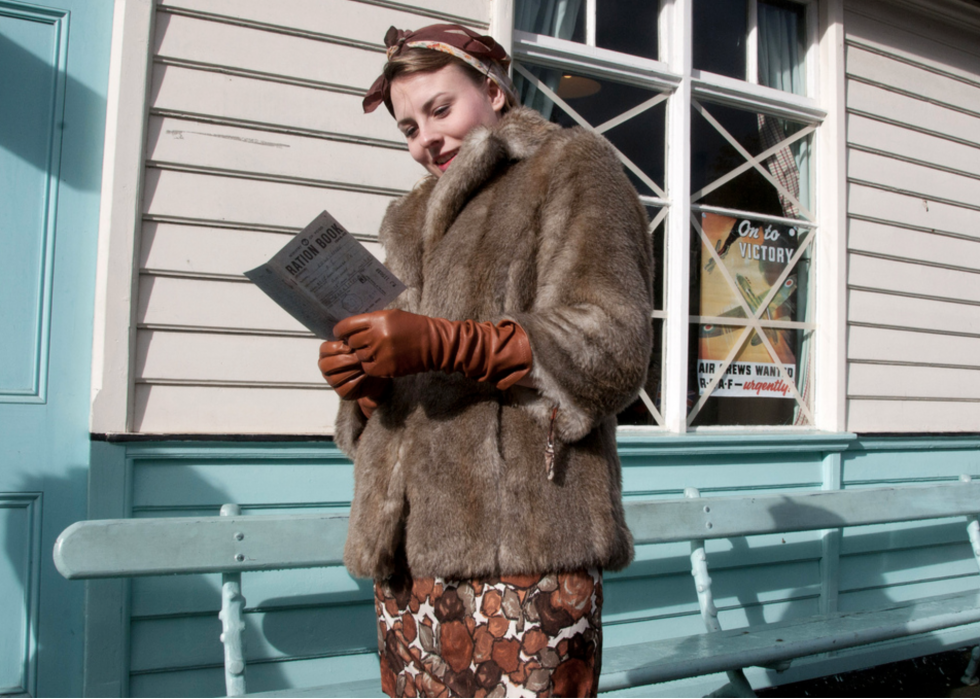
28 / 100
1945: Fur coats
Fur coats have been around for as long equally humans have been killing animals for their skins—sometimes for part, only often for fashion. Fur every bit fashion was, in fact, crucial to mid-1940s way. From muskrat to mink, leopard-stenciled Coney to fitted princess, fur coats were the physical embodiment of elegance in that era.
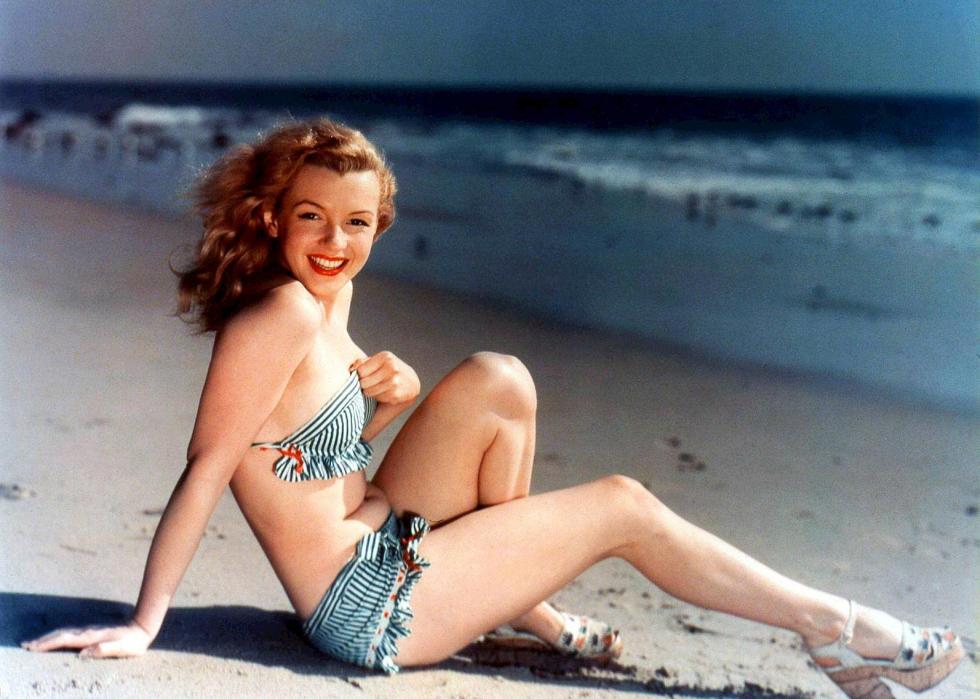
29 / 100
Teichnor Bros., Boston // Wikimedia Commons
1946: Bikinis
Few moments in mode history have been more world-shatteringly scandalous than the one that took place in 1946. That year, the globe'south showtime bikini made its debut at a poolside prove in Paris, but the revealing cut was and then risque that many French models refused to display it. The designer instead hired a nude dancer named Micheline Bernardini, who was the showtime woman ever photographed wearing one, but certainly not the last. Bikinis would presently take over the beaches of the United States and the western world.
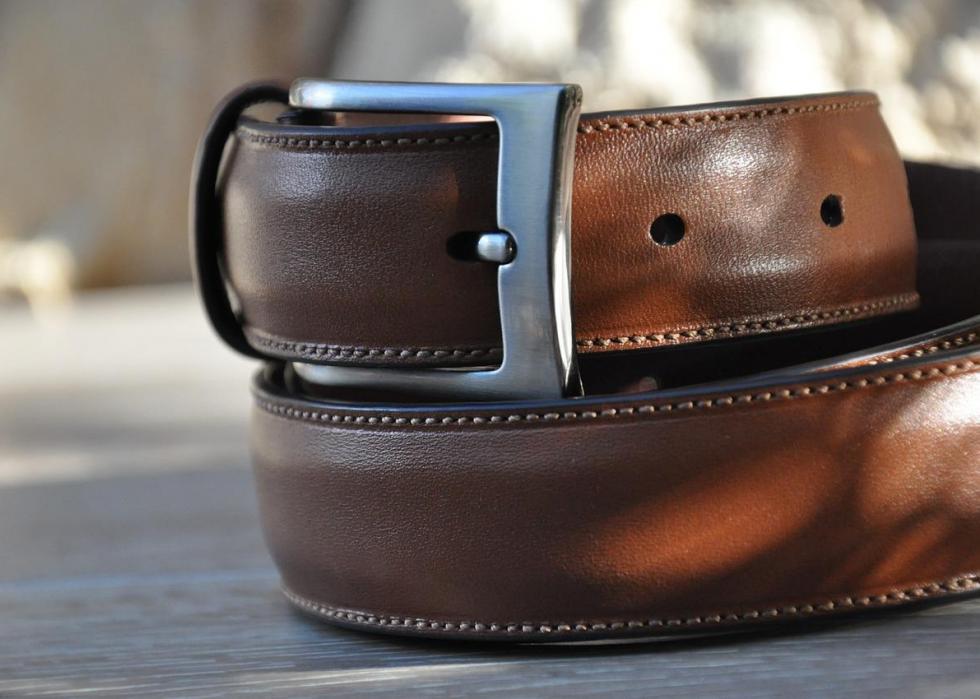
30 / 100
insidehenderson // Pixabay
1947: Belts
By the end of the 1940s, belts had largely replaced suspenders because by that fourth dimension, pants were more than fitted at the waist. Men flocked to stock upwardly on the accessory, which was both functional and fashionable, even though the options were limited by and large to tan, brown, or black leather with small buckles.
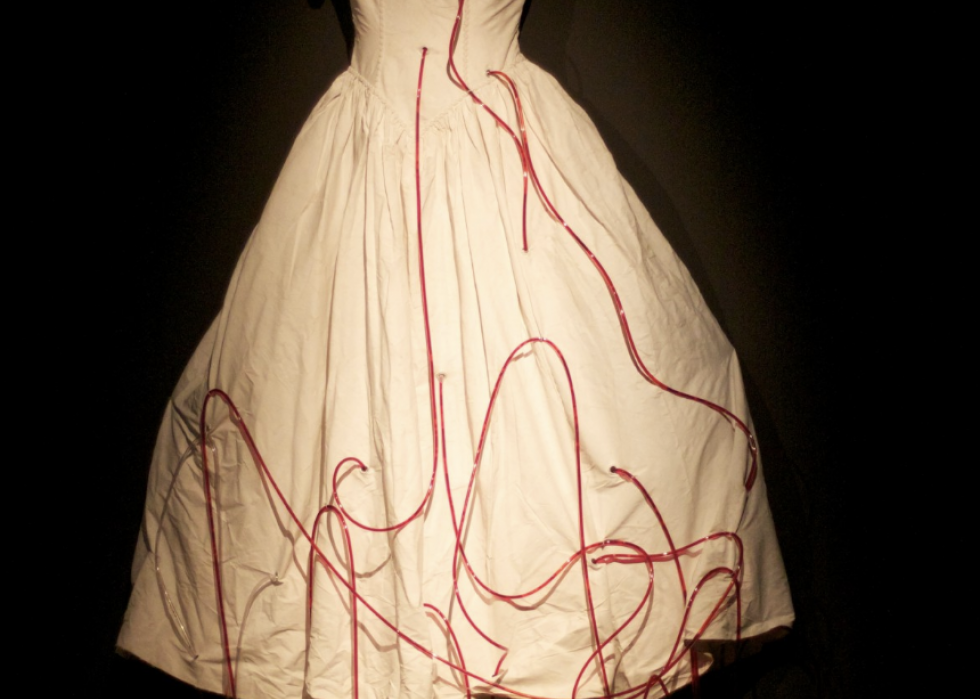
31 / 100
1948: Lampshade dresses

32 / 100
Erik Holmén, Nordiska museet // Wikimedia Commons
1949: Peep-toe shoes
By the end of the 1940s, peep-toe shoes were a pop footwear pick. They exposed just plenty to be dishy without breaching the conservative standards that governed the era.
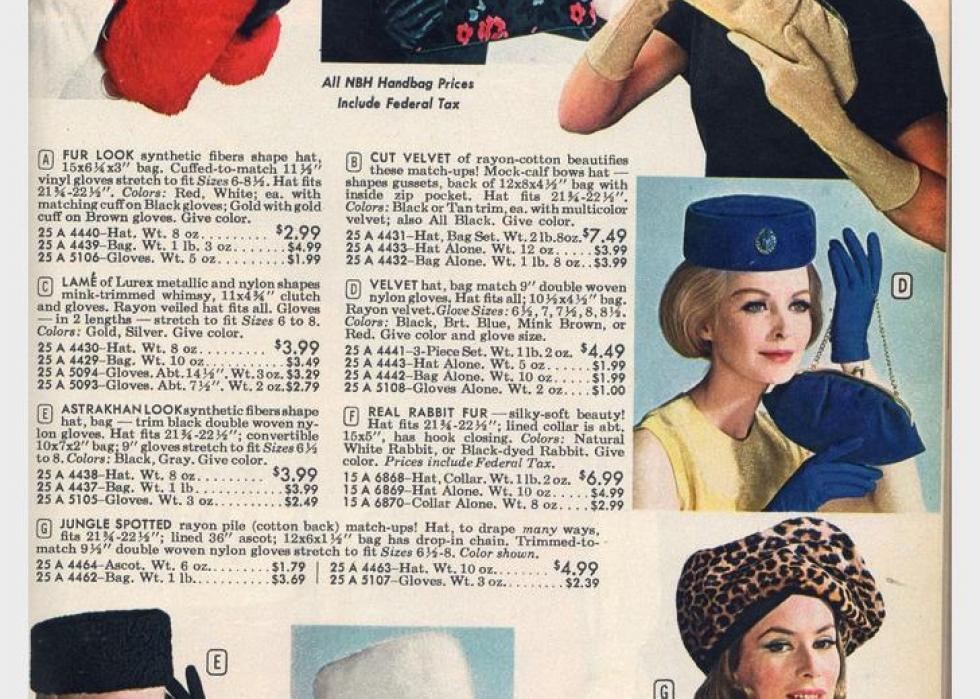
33 / 100
1950: Pillbox hats
As the 1940s transitioned to the '50s, there were lots of advances in the globe of fashion, but some things didn't change. I of those things was the pillbox hat, a minor, circular, straight-sided hat that sometimes included cyberspace veils. It grew past several inches over the years, but remained largely the same. It also became 1 of the but hats that endured from the 1940s into the 1960s, thanks in part to Jackie Kennedy.
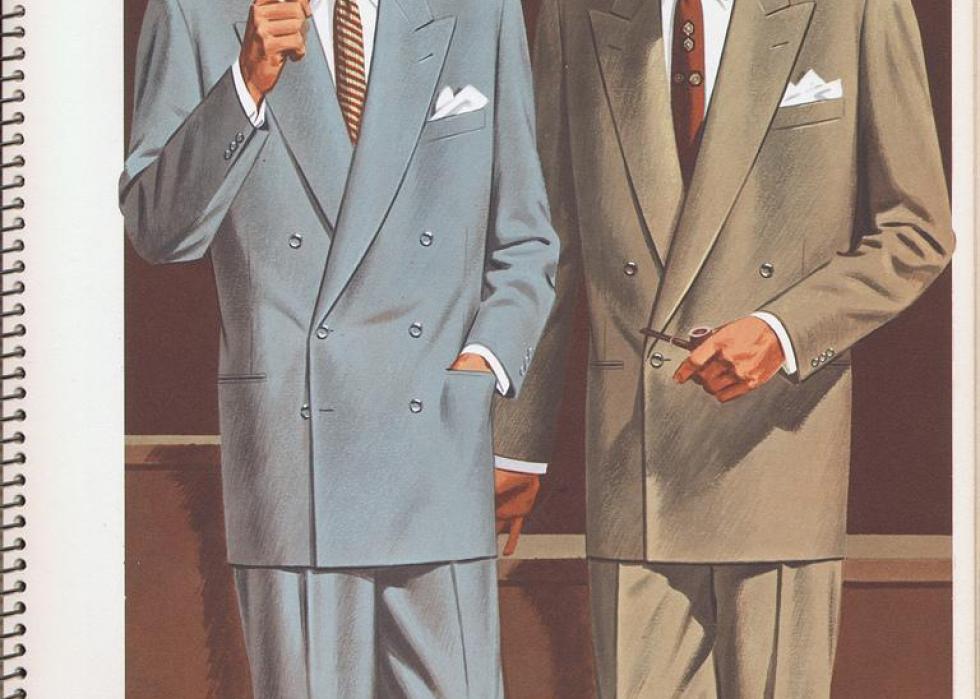
34 / 100
1951: Full suits
The early on 1950s signaled the beginning of an unprecedented rise in wealth and employment every bit the U.South. economy boomed. Legions of men moved their families to the suburbs and took upwardly white-neckband jobs—and those jobs required suits. Dark, full, conservative suits became so ubiquitous, in fact, that they were worn en masse even to the most coincidental events. When Bobby Thompson hit the "shot heard circular the world" home run in the 1951 New York Giants pennant game and a crush of fans rushed the field, virtually all of the men were dressed in full suits.
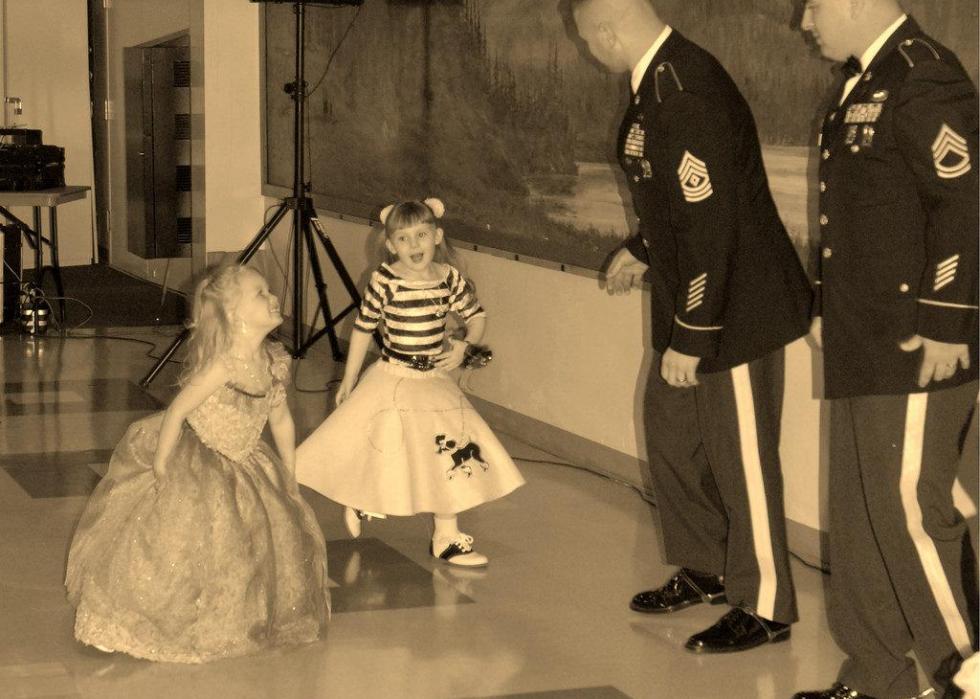
35 / 100
U.S. Army Alaska // Flickr
1952: Poodle skirts
Poodle skirts now serve every bit a symbol of the innocence of the post-World War II era. In the 1950s, notwithstanding, they were a style statement for girls and women across America. The full-length, swinging skirts were adorned with handmade embellishments, stitching, designs, and patches, oftentimes sewn on by the wearer or her mother. Among the nigh famous embellishments was, of course, a poodle on a ternion.
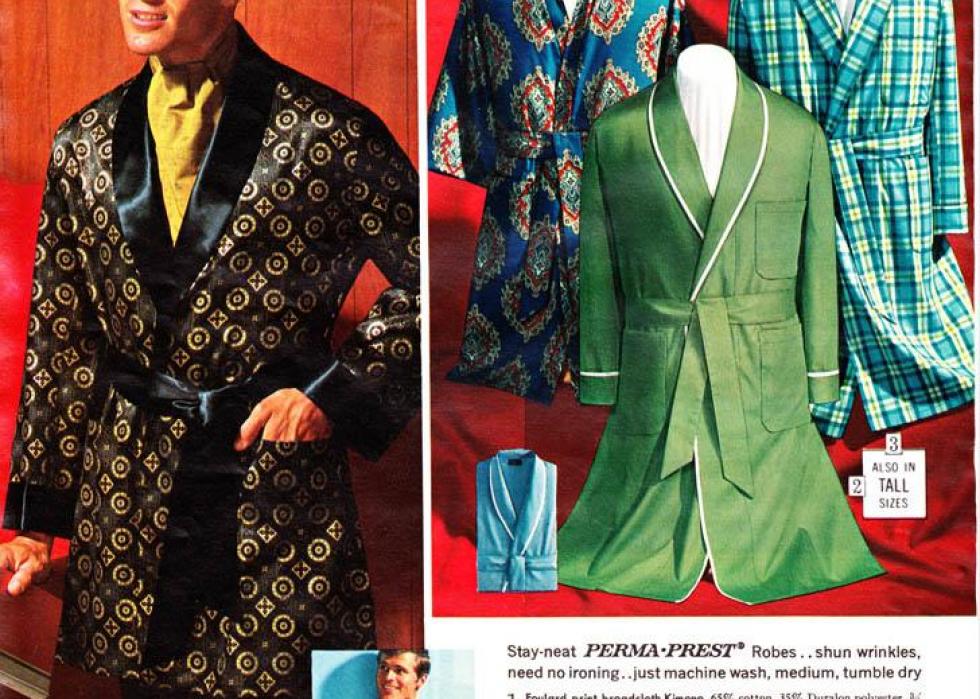
36 / 100
1953: Smoking jackets
Smoking jackets have a long and storied history, first as leisure wear designed but for relaxing at habitation then as formal wear that was appropriate for high-end public gatherings. The twelvemonth 1953, notwithstanding, was a watershed moment for the velvet and silk shawl-collared garments. That yr, the starting time effect of "Playboy" came off the presses and Hugh Hefner—and his trademark smoking jacket—became a household name.
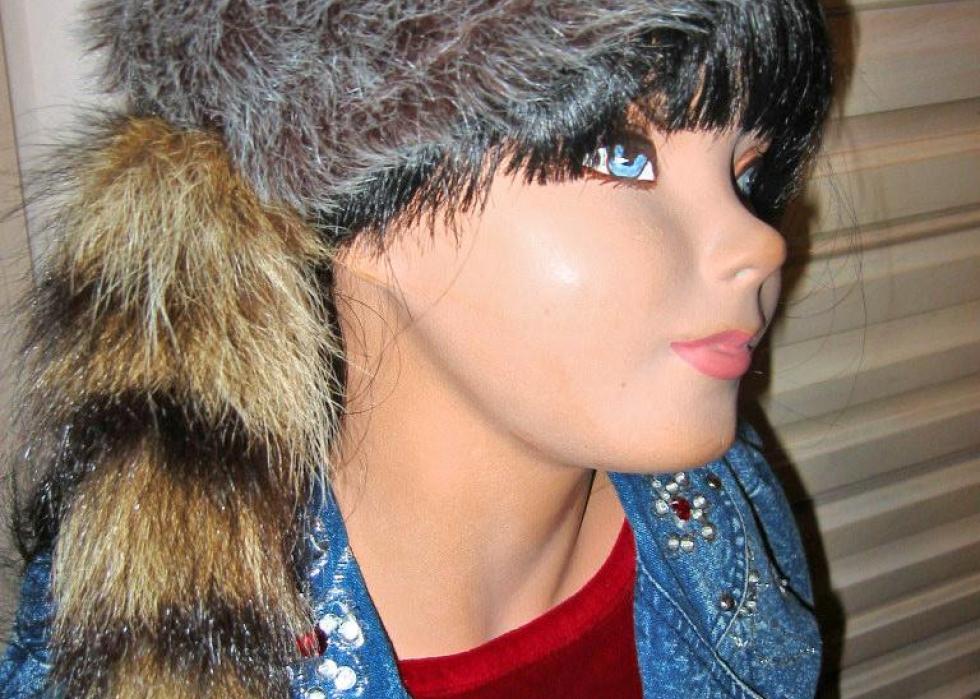
37 / 100
YourCastlesDecor // Flickr
1954: The pioneer look
Ruffled buckskin jackets and coonskin caps were functional clothing worn by Native Americans and pioneers for practical reasons, not because they were winning any fashion awards. The expect largely disappeared right along with the borderland—until 1954. On Dec. fifteen of that year, Disney presented "Davy Crockett: Indian Fighter," a one-hr segment that was part of the "Disneyland" television serial, and all of a sudden, boys beyond America were begging for classic frontier clothes.
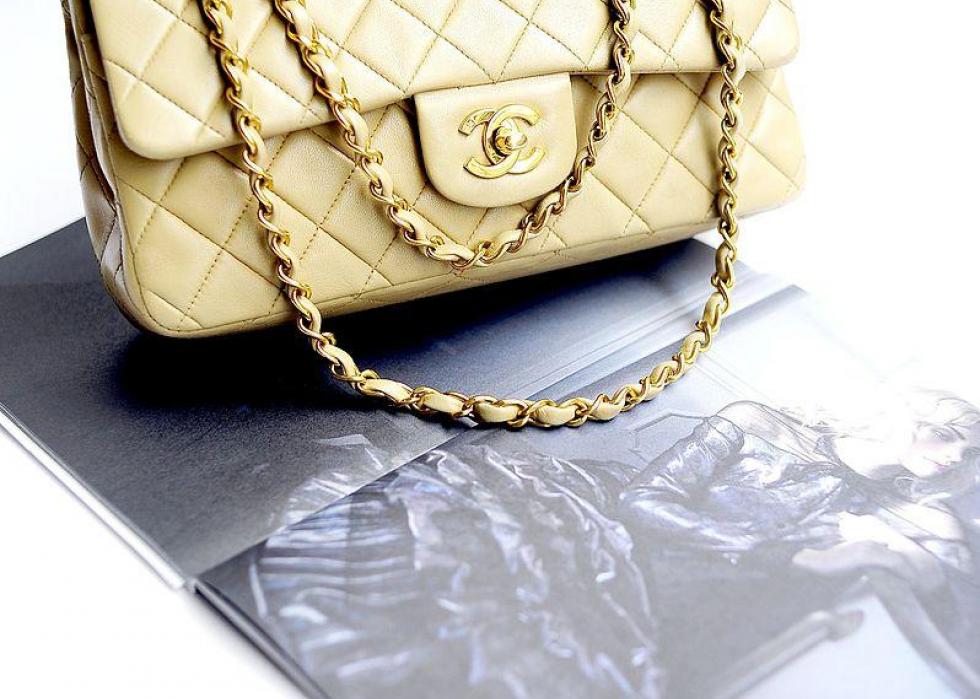
38 / 100
Liu Wen Cheng 我希望成為 // Wikimedia Commons
1955: 2.55 handbags
The iconic Chanel two.55 handbag remains among the well-nigh popular high-end purses in the entire Chanel collection—the cheap ones currently start at $2,500. The 2.55 stands for February 1955, the yr designer Coco Chanel released the original, which was loosely modeled after the first purse she designed in 1929. It was a watershed month in the history of designer women's accessories.
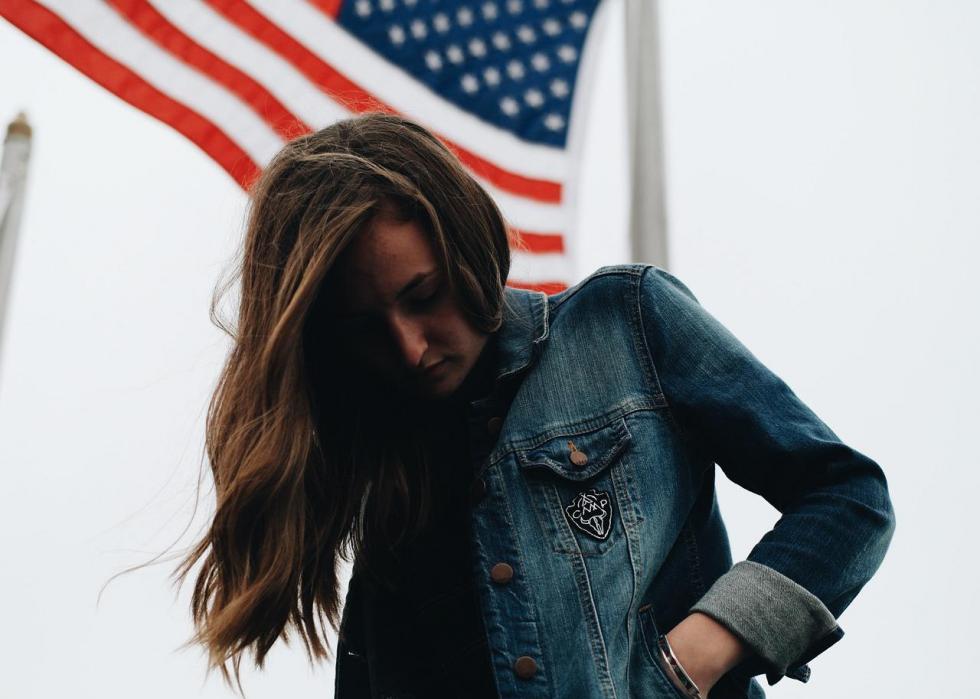
39 / 100
1956: Denim jackets
From the Beatles to Bruce Springsteen, Marilyn Monroe to Beyonce, the classic American denim jacket has literally never gone out of mode since Levi Strauss designed the original in 1870. In the mid-1950s, however, it became the embodiment of cool youth culture. The New York Times ran sewing patterns for denim jackets for girls and boys, while Levi's unveiled its Type Ii trucker jacket to the masses.
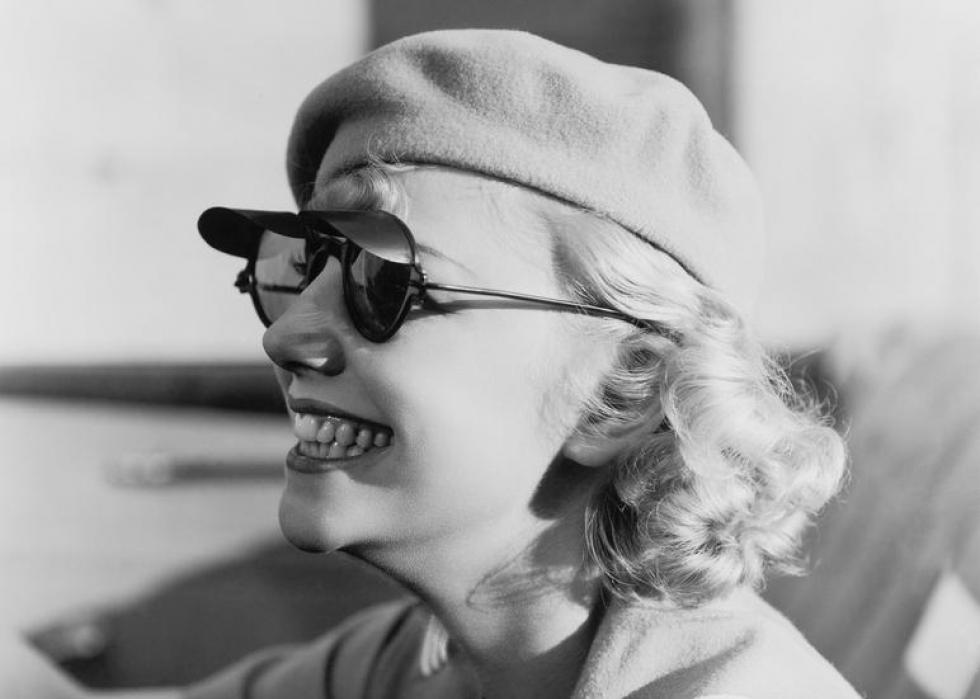
40 / 100
Everett Collection // Shutterstock
1957: Berets
Exemplified past Jack Kerouac, Allen Ginsberg, and William Burroughs, the crush movement immortalized the kind of coffee store cool portrayed in the movie "Funny Face up" and in Kerouac'due south classic novel "On the Road," both of which debuted in 1957. If you were enamored of the culture that year, chances are adept you owned a blackness beret, which was a trademark of crackpot stylings.
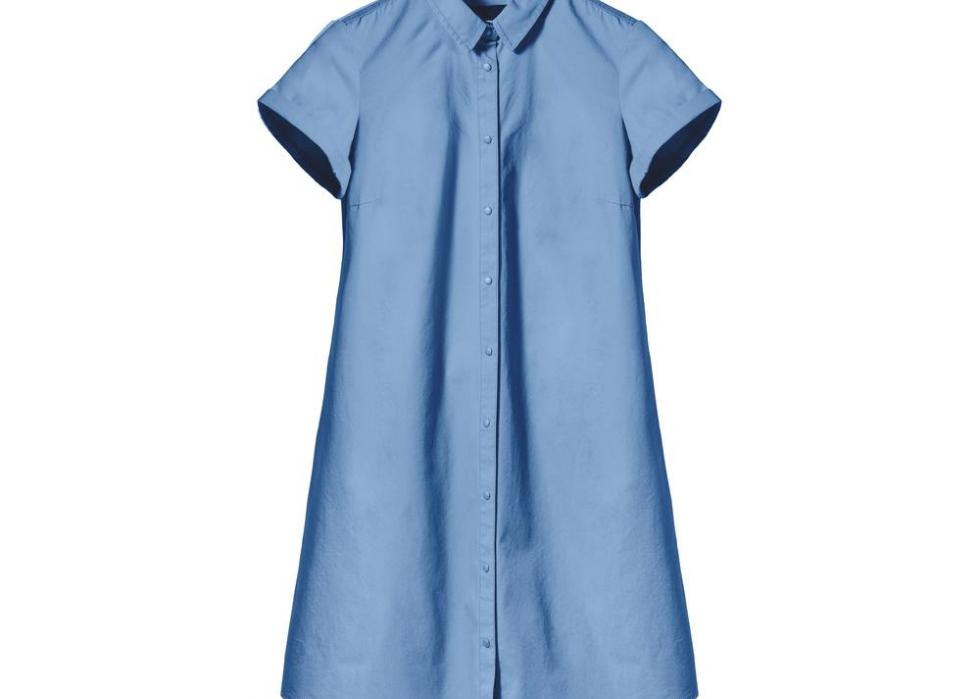
41 / 100
Magdalena Wielobob // Shutterstock
1958: Chemise
In 1958, women beyond America were wearing dresses that were spitting images of what the French queen Marie Antoinette popularized as undergarments in the 1780s: the chemise. Direct cut and unfitted at the waist, the chemise had long been a staple of women's underwear and night wear, but that all changed in 1957. That year, Parisian designers Christian Dior and Cristóbal Balenciaga unveiled straight, unbelted chemise dresses, and past 1958, the figure-concealing game-changers had gone mainstream.
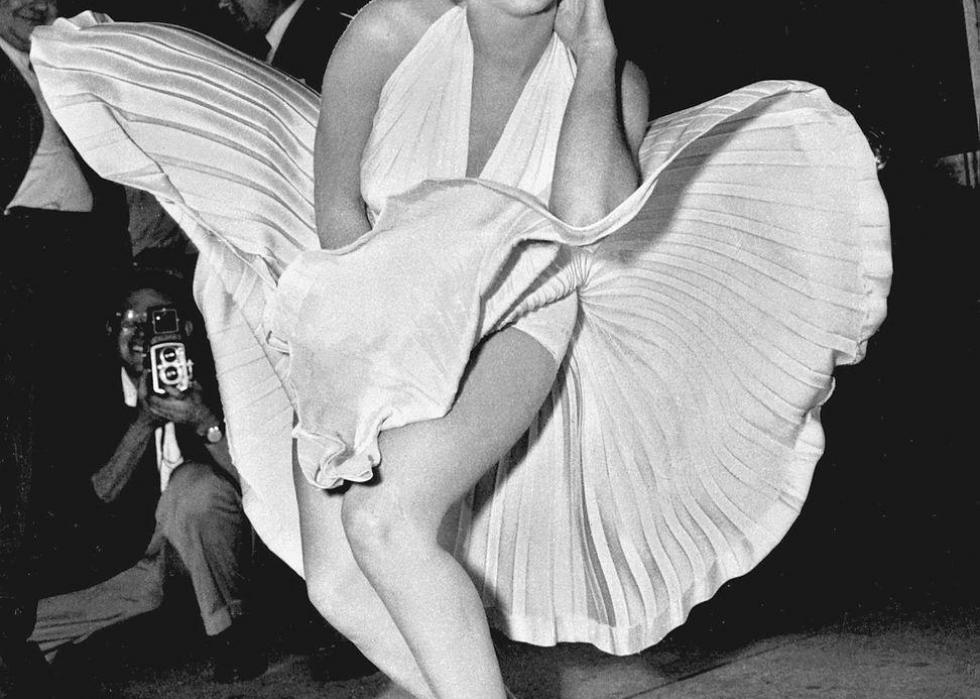
42 / 100
Public Domain // Wikimedia Commons
1959: Halter apparel
The most famous halter dress in history is the one Marilyn Monroe wore in "The Seven Year Itch," which the starlet coyly struggled to keep in place after a blast of air from a street grate. The pic came out in 1955, merely halter dresses were popular throughout the decade.
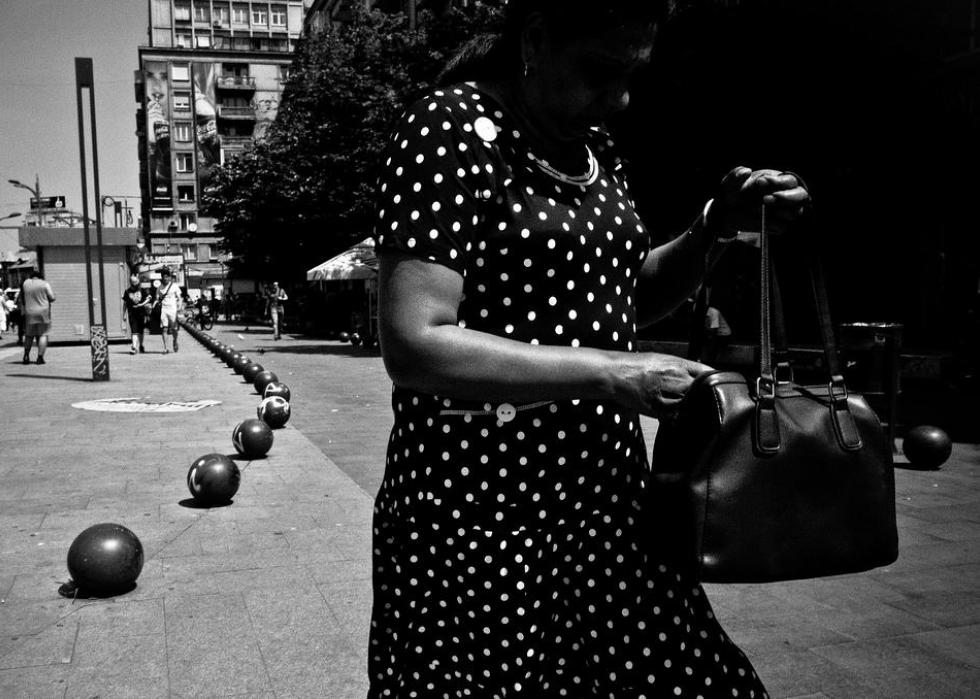
43 / 100
1960: Polka dots
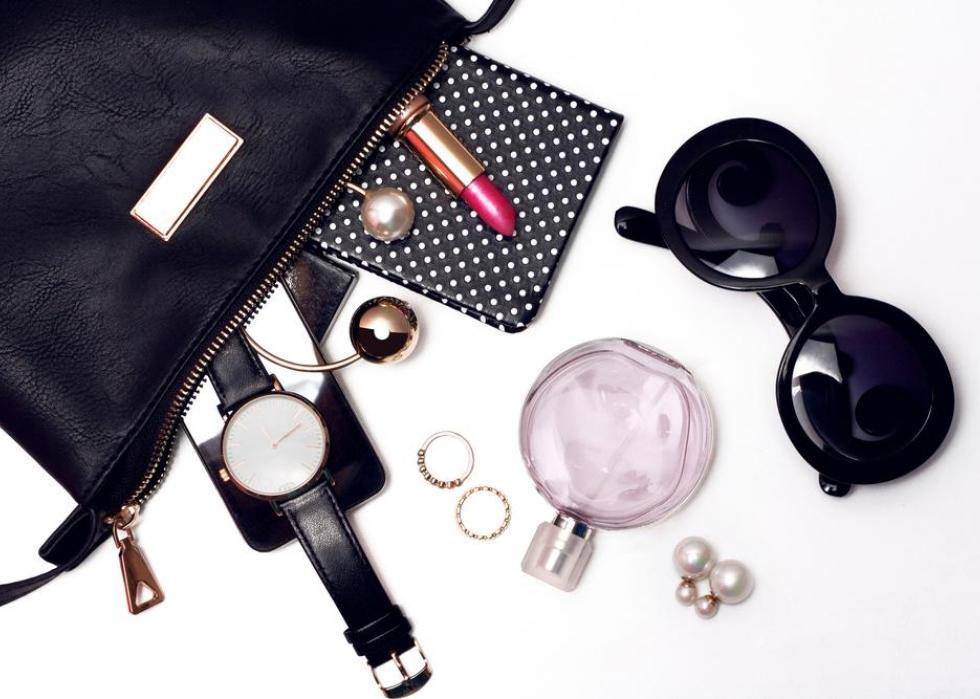
44 / 100
Viktoria Minkova // Shutterstock
1961: Bug-eye sunglasses
In 1960, John F. Kennedy was elected president and he, along with his wife Jackie, would become the apotheosis of high social fashion and graceful elegance. The commencement lady'south trademark oversized "bug-eye" sunglasses would prove to be a trendsetter, and past the following year, women everywhere were hiding backside them.
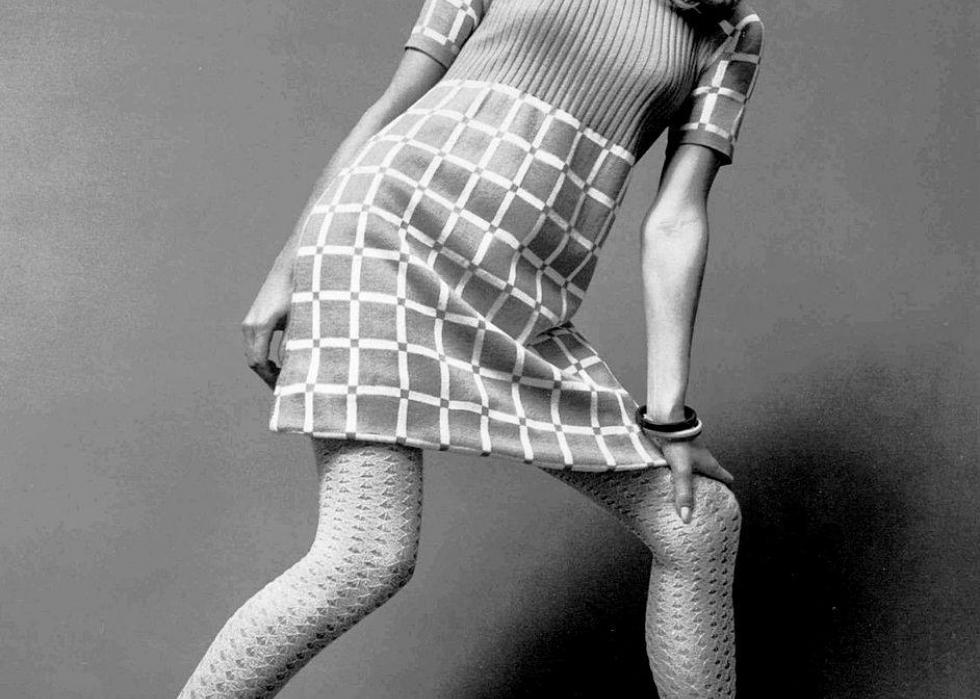
45 / 100
Durene Association of America, New York // Wikimedia Commons
1962: Miniskirts
Although versions of it existed throughout history, a certain fashion staple didn't hitting the mainstream until 1962. That yr, a newspaper in Montana made the kickoff known reference to the world's most controversial hemline: the mini-skirt.
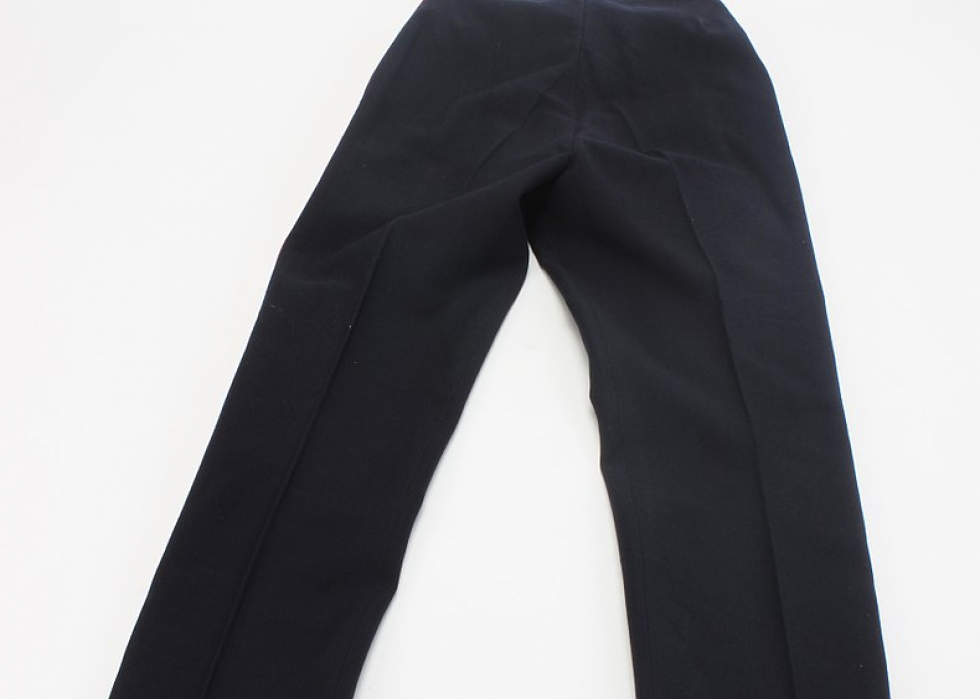
46 / 100
1963: Pleatless pants
The 1960s were an uneven decade in terms of manner, and pre-British Invasion 1963 looked much more similar the '50s than the latter part of the '60s. There was one shift, even so, that signaled a dramatic sea change in conceptions about formality. That twelvemonth, it became widely acceptable for men to wearable pants without pleats.
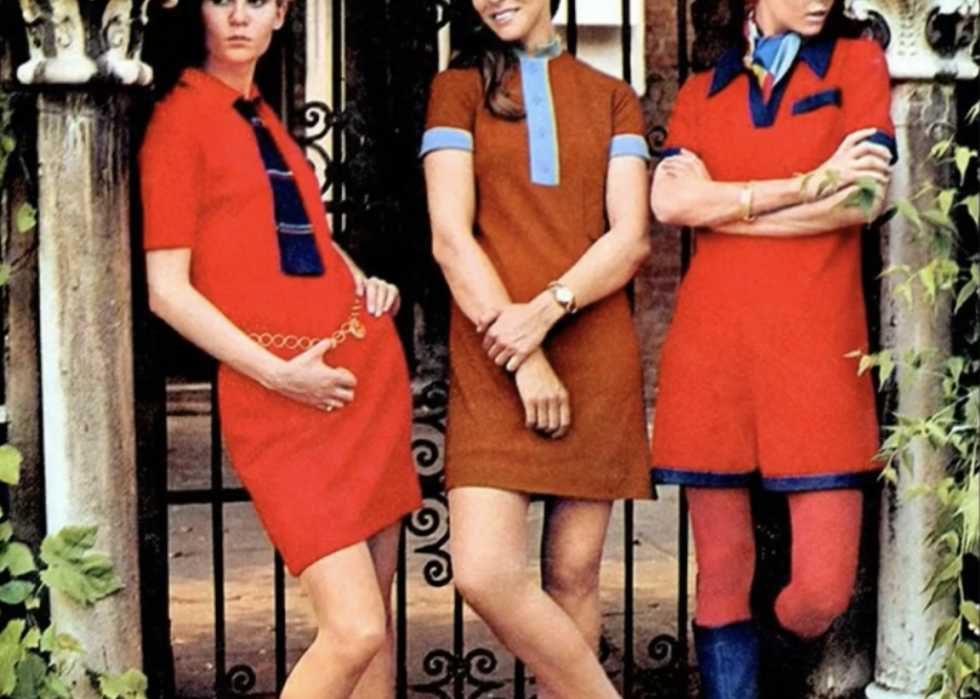
47 / 100
Yesterday Today // YouTube
1964: Get-go boots
Earlier the 1960s, boots were mainly designed for office, not form. That all changed, however, in 1964 when André Courrèges unveiled a new kind of women'south kick in his fall 1964 drove. The white, plastic, calf-loftier boots were function of his Moon Girl look— go-go boots had arrived.
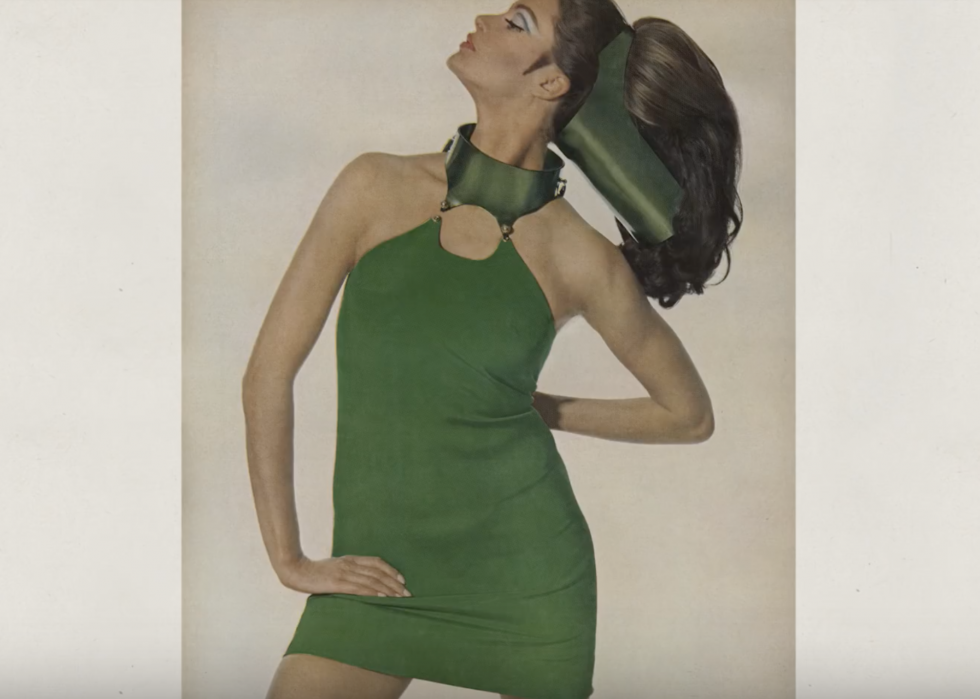
48 / 100
1965: Cutouts
In the mid-1960s, it wasn't at all unusual to see women with a chunk of their clothes missing—don't worry, it was on purpose. The look was called the cutout, and windows through article of clothing could exist minor or sizable, circular or square. They could be plant on the backs of dresses or on the bellies, on the sleeves, on the neckline, or even on get-become boots.
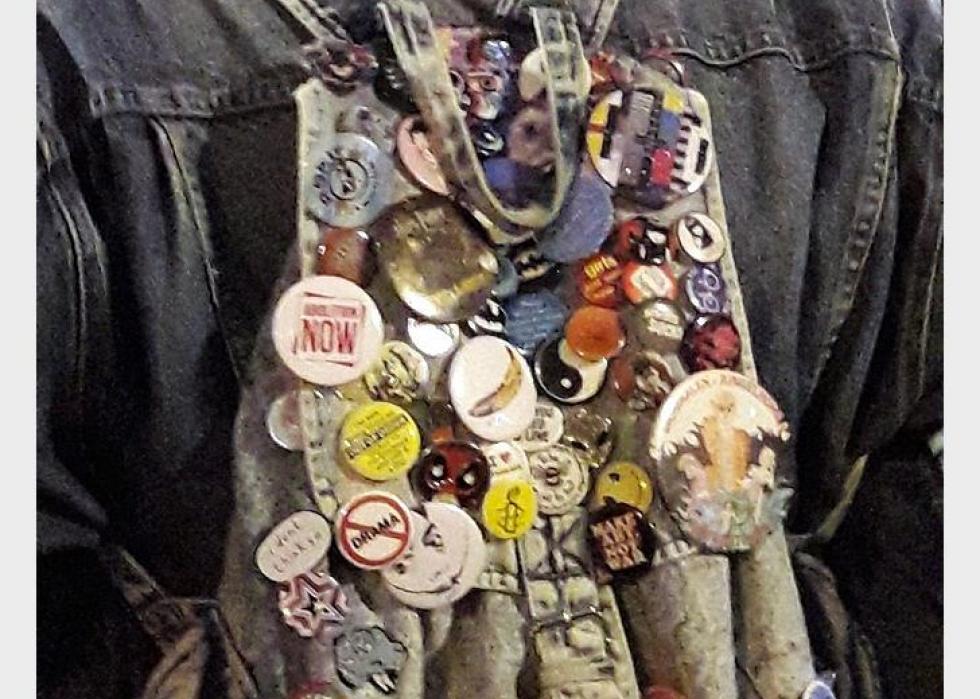
49 / 100
Ida Tolgensbakk // Wikimedia Commons
1966: Slogan buttons
Little buttons safety pinned onto wear had long been a staple of political campaigns, with "I like Ike" and other slogans serving as personal statements for those who wore them. By 1966, however, the Vietnam War was raging and social turmoil was engulfing the land dorsum home. Slogan-pasted buttons pinned onto shirts, pants, backpacks, and jackets became a staple of the counterculture wardrobe, with familiar messages including "Hell no, nosotros won't become," "Ban the flop," and just "Peace."
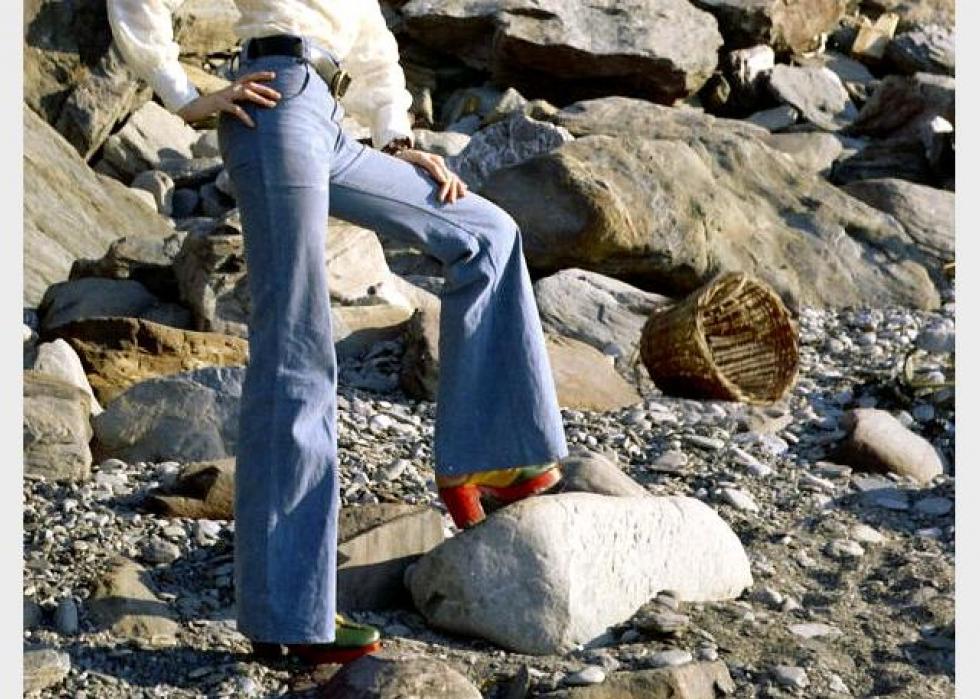
l / 100
Andrzej 22 // Wikimedia Commons
1967: Bell-bottoms
Though they're more commonly associated with the 1970s, bell-bottoms got their start in the late 1960s, as cultural icons hit the boondocks with flared pants. Jimi Hendrix, Sonny and Cher, and Twiggy all promoted the expect. So did Nancy Sinatra, who wore an especially memorable set of bedazzled white flared pants on her 1967 television special Movin' with Nancy. No wonder Vanity Fair later on called bell-bottoms 1 of the fashion revolutions of 1967.
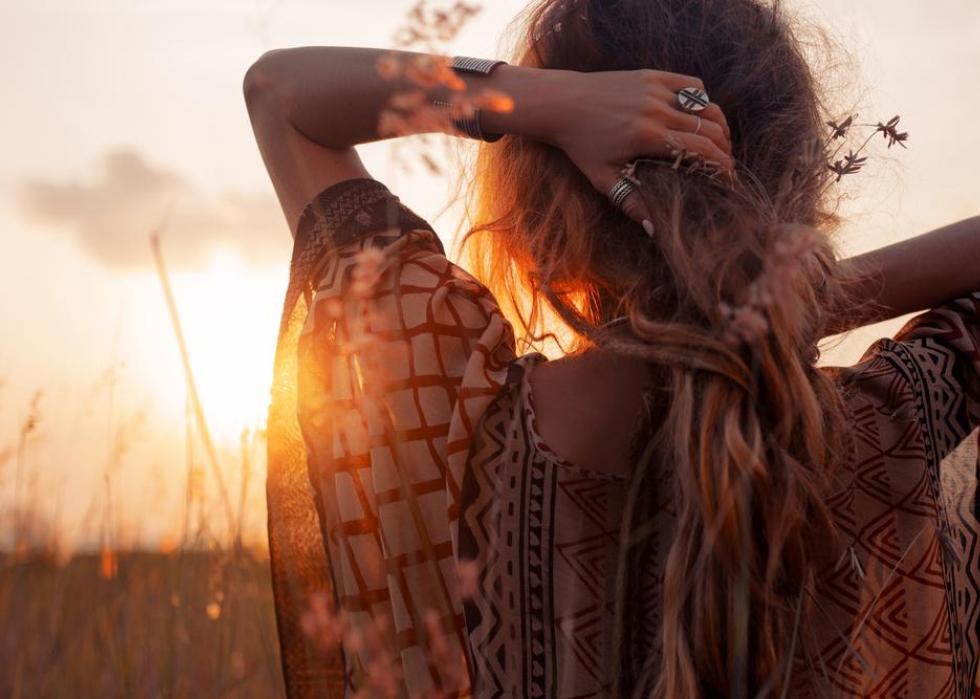
51 / 100
Zolotarevs // Shutterstock
1968: Maverick chic
Many young people in 1968 weren't hippies, simply hardcore-hippie vesture rubbed off on mainstream club in the course of a tendency that historic hippie civilization without fully embracing it—bohemian chic. That year, peasant blouses, decorative handwork, and ruffles upon ruffles could be found far beyond Greenwich Hamlet and Haight-Ashbury.
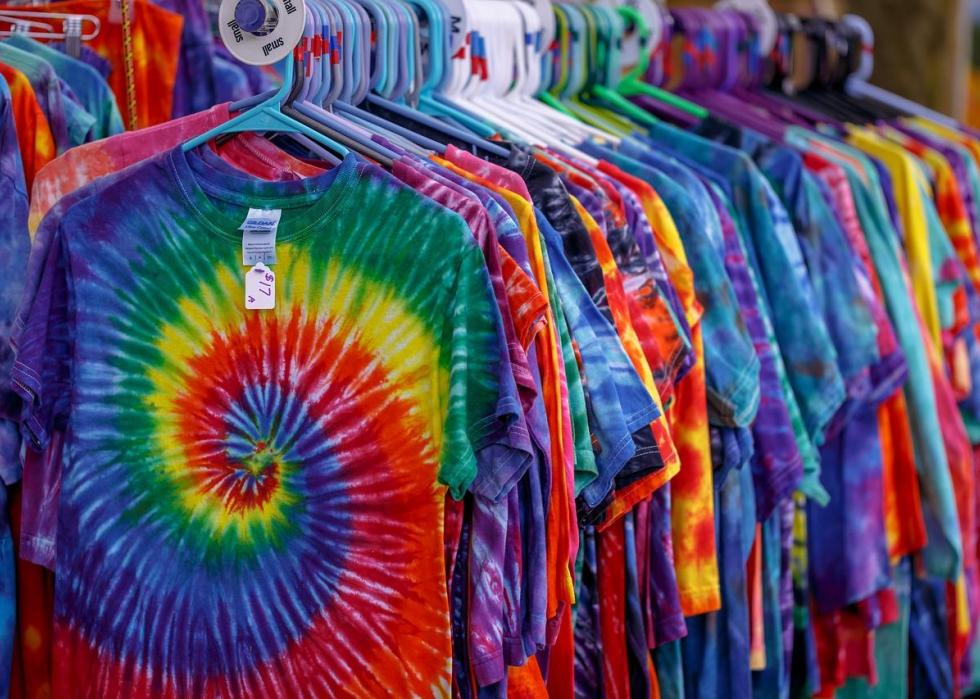
52 / 100
1969: Tie-dye
If the radical 1960s counterculture movement had a compatible, information technology would have to include tie-dye. Handmade rainbow vesture had defined the era's youth movement for several years, merely in 1969, in that location was no doubt that tie-dye was male monarch. That year, a one-half-million people gathered for a music festival in Woodstock, N.Y., and both on stage and in the sea of humanity in the crowd, tie-dye could exist seen—at to the lowest degree on those whose wearing apparel weren't covered in mud or who weren't wearing clothes at all.
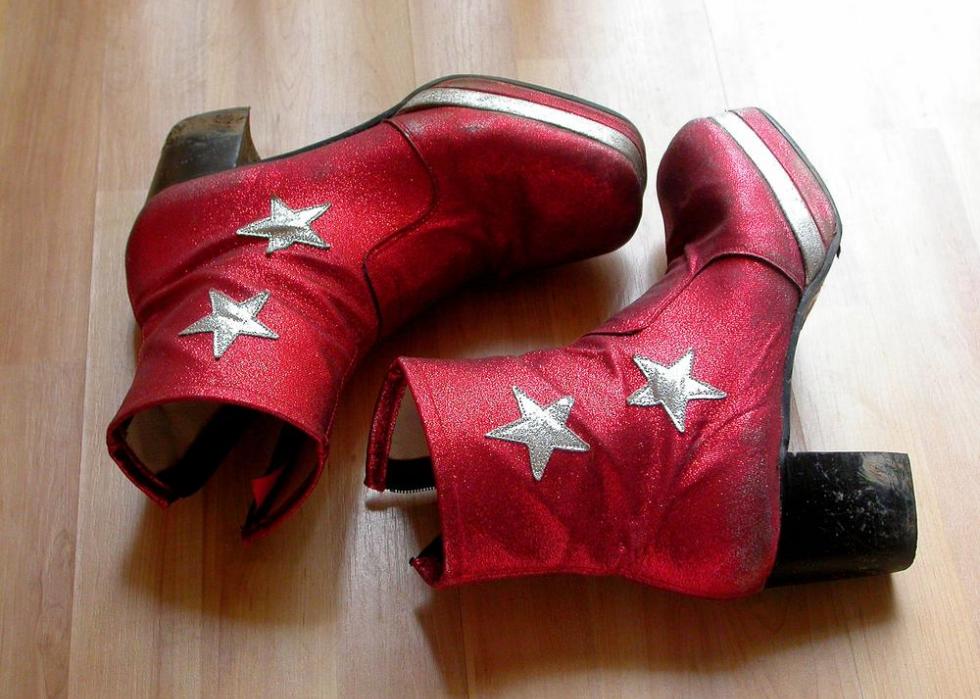
53 / 100
Lenscap Photography // Shutterstock
1970: Platform shoes
In the 1970s, people everywhere suddenly got taller. Although Salvatore Ferragamo famously designed a pair of rainbow platform sandals for Judy Garland in 1938, platform shoes truly emerged in the 1970s. Men and women embraced the rise, and the trend would endure for the unabridged decade.
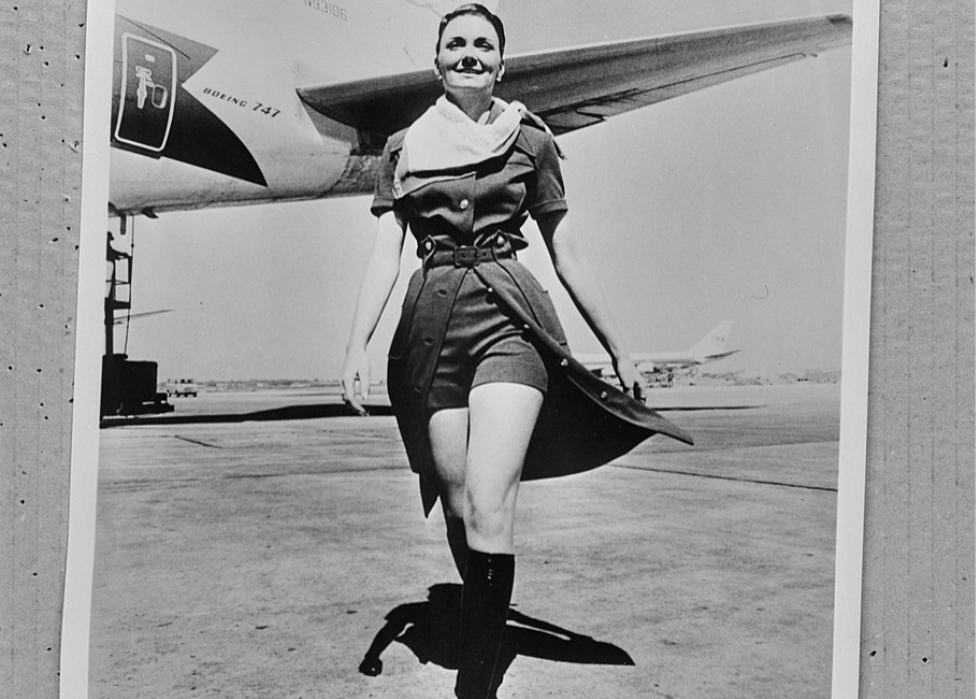
54 / 100
Anefo // Wikimedia Commons
1971: Hot pants
The loose, draping ruffles of the bohemian chic movement weren't dead in 1971, but they were starting to take a back seat to a more than revealing and course-fitting style. That style was exemplified by hot pants. James Brown dedicated an entire song to the hip-hugging garment in 1971's "Hot Pants (She Got to Apply What She Got to Become What She Wants)." Meanwhile, women ranging from Elizabeth Taylor to Raquel Welch proudly donned the curt shorts.
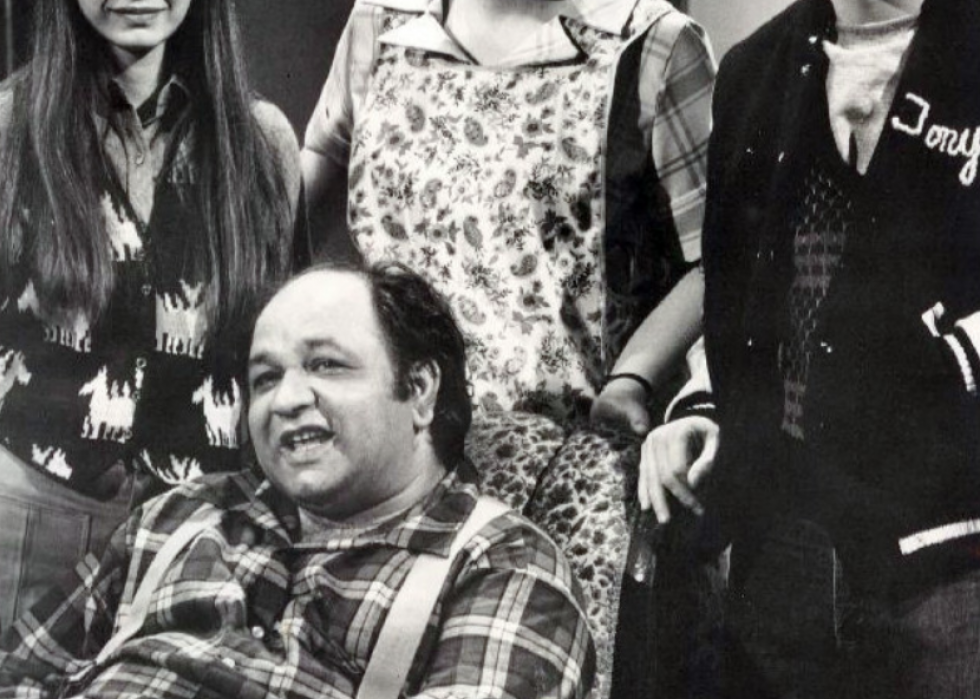
55 / 100
ABC Tv set // Wikimedia Eatables
1972: Plaid
By 1972, the '70s were truly the '70s, and department stores had the plaid to prove it. The crisp, linear look of plaid would have likely turned off counter-culture fashionistas in the '60s—plaid, after all, is fabricated entirely of squares. By the '70s, however, plaid was acceptable—encouraged, even—on merely most any type of fabric and all types of habiliment, from hats to socks to jackets to shirts to pants and across.
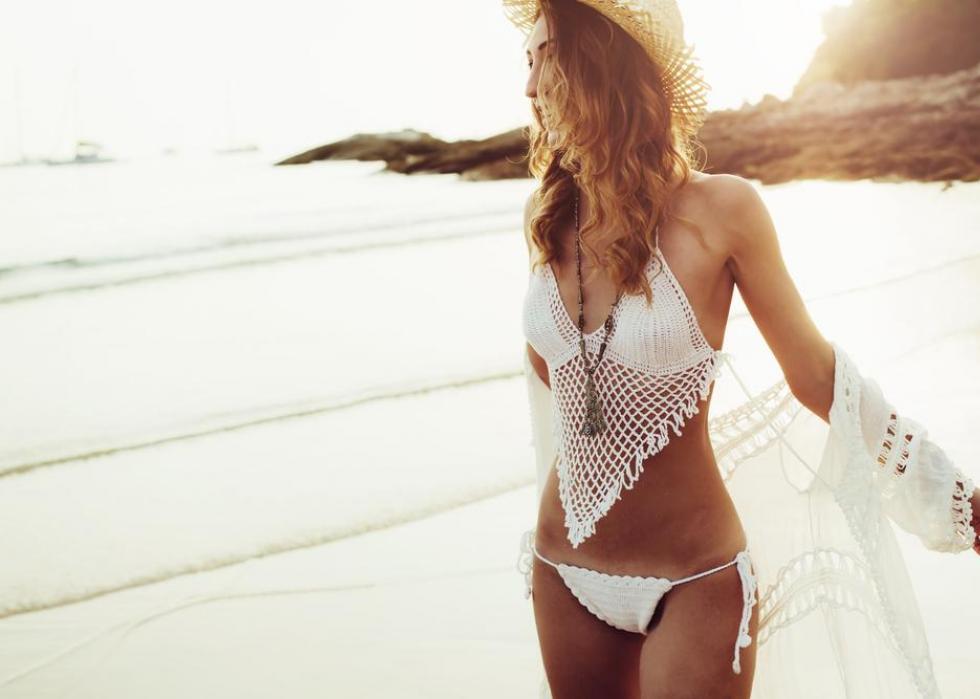
56 / 100
Alena Ozerova // Shutterstock
1973: Crocheted bikinis
Past the early 1970s, crochet bikinis were in. The woven swimsuits got their starting time big break in 1969, whenCosmopolitan put its covergirl in a light-green crochet bikini. The New York Times called the swimwear a "favorite" of boutique designers in 1971, and pretty soon Pam Grier was lounging poolside in a white knit two-piece.
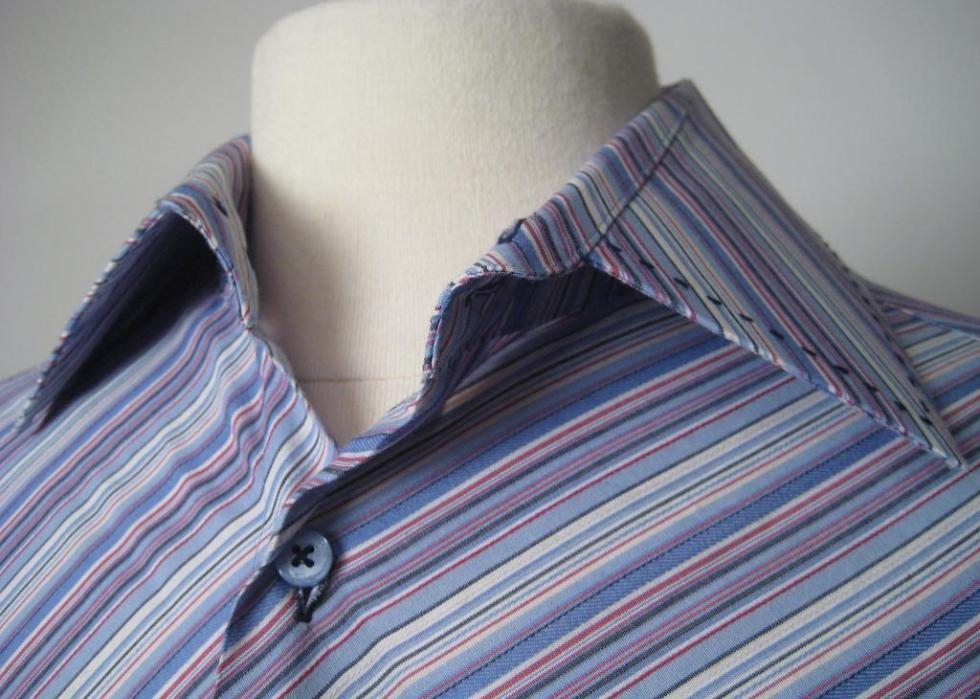
57 / 100
HousingWorksPhotos // Flickr
1974: Polyester
If platform shoes were the footwear that defined the 1970s, polyester was the textile. The 1974 Sears itemize was an homage to the synthetic material, which was spun into shirts, dresses, pants, jackets and, after, entire suits, many of which were topped off with cartoonishly massive collars.
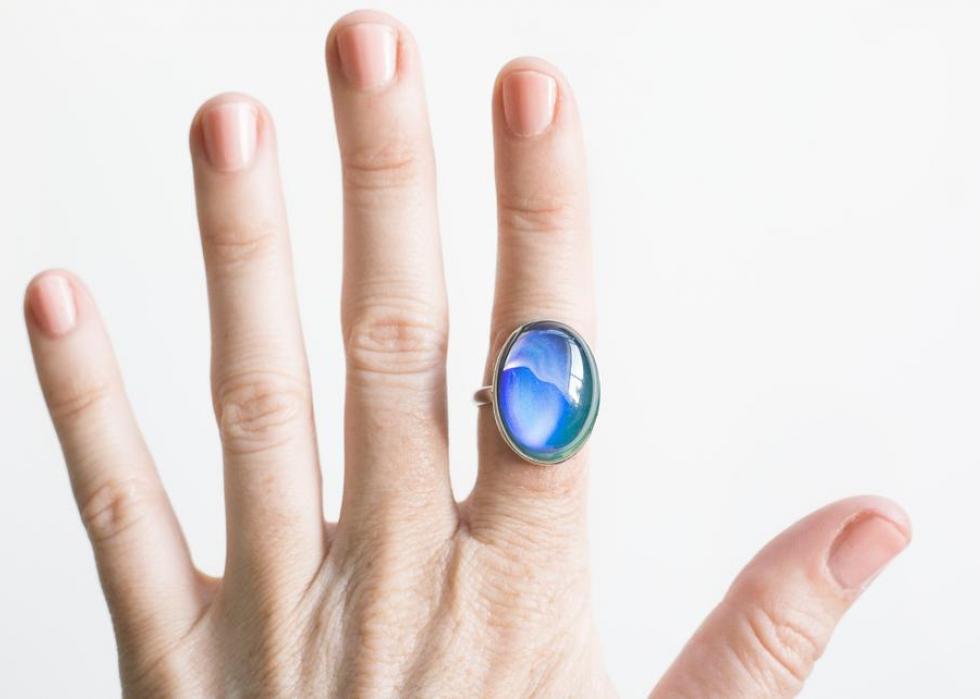
58 / 100
Shannon West // Shutterstock
1975: Mood rings
In 1975, '60s mysticism collided with '70s commercialism in one of the most successful way fads in history: the mood ring. Similar so many other fads, the color-shifting jewelry first found popularity in New York City but quickly spread equally introspective soul searchers hoped to become a deeper understanding of their inner selves past peering into estrus-sensitive crystals worn on their fingers.
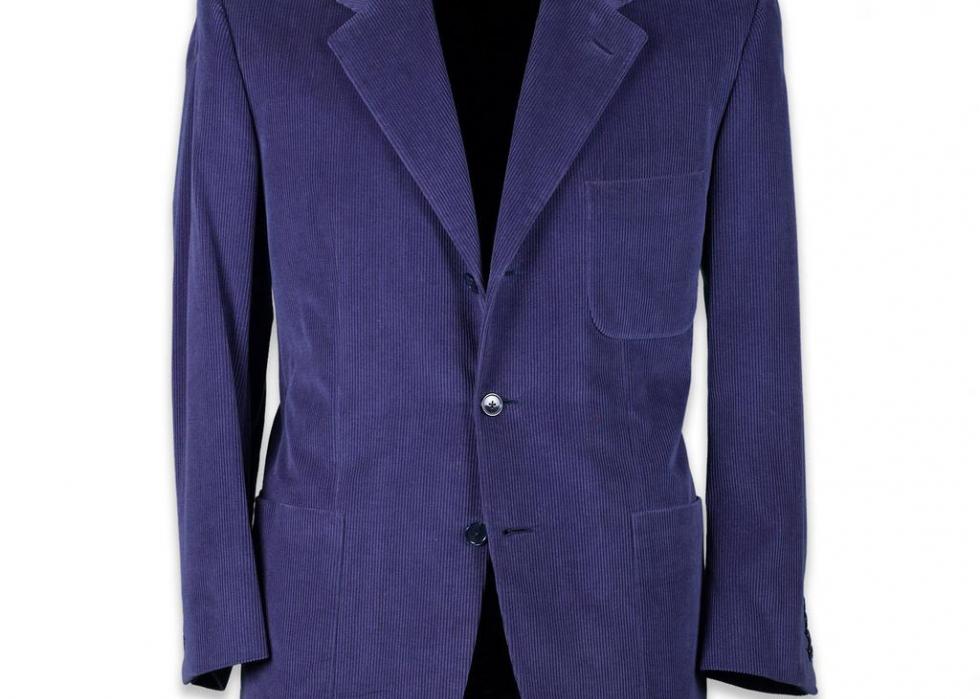
59 / 100
menswear-market place.com // Flickr
1976: Corduroy suits
If your legs make a swooshing sound when you walk, chances are good you're wearing corduroy pants. The corded woolen fabric dates dorsum thousands of years, and it remains a fall staple for some to this solar day. Past 1976, however, the heavy fabric was a sign of the times every bit unabridged suits were fabricated from the ribbed, un-wrinkleable cloth, which was sometimes worn head to toe.
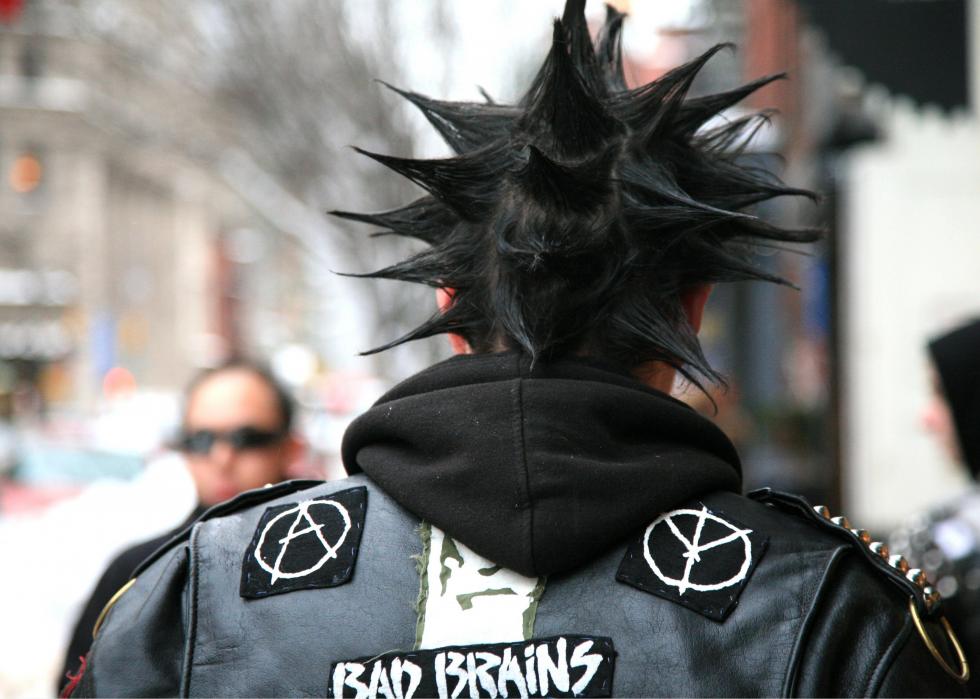
lx / 100
vincent desjardins // pxhere
1977: Punk jackets
Sometimes denim, sometimes leather, ever daring, punk jackets were a visible symbol of youthful rebellion in 1977. As cities decayed, ghettos widened, and crime and unemployment soared, punk rock emerged to embody the spirit of youthful malaise and, of course, to terrify parents. Designed to offend, punk jackets could exist studded, bedazzled, torn or spiked, just all were required to be adorned with a message—the more combative, the better.
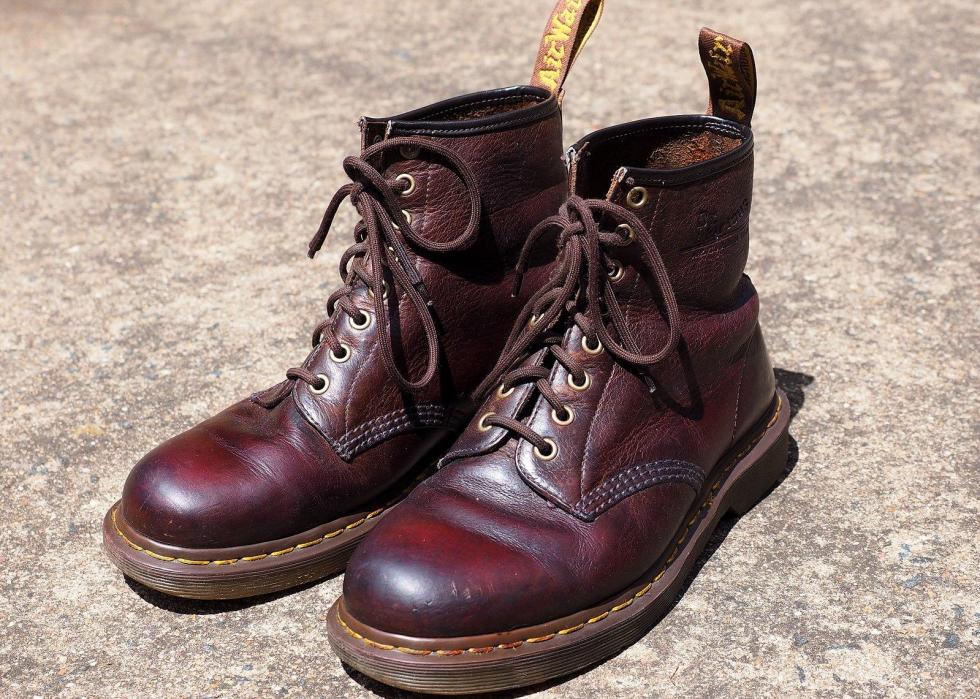
61 / 100
Nick-D // Wikimedia Eatables
1978: Doc Martens
Similar so many fashion trends, Doc Marten boots and shoes were built-in out of necessity—the heavy footwear was originally designed to protect the feet of blueish-collar workers who labored in dangerous industries. In the 1970s, however, they were a direct expression of the anarchic rebellion that divers the times. What started with punk would re-sally over and over once more with different musical movements: metal, pop, emo, alt, grunge, rave, and beyond.
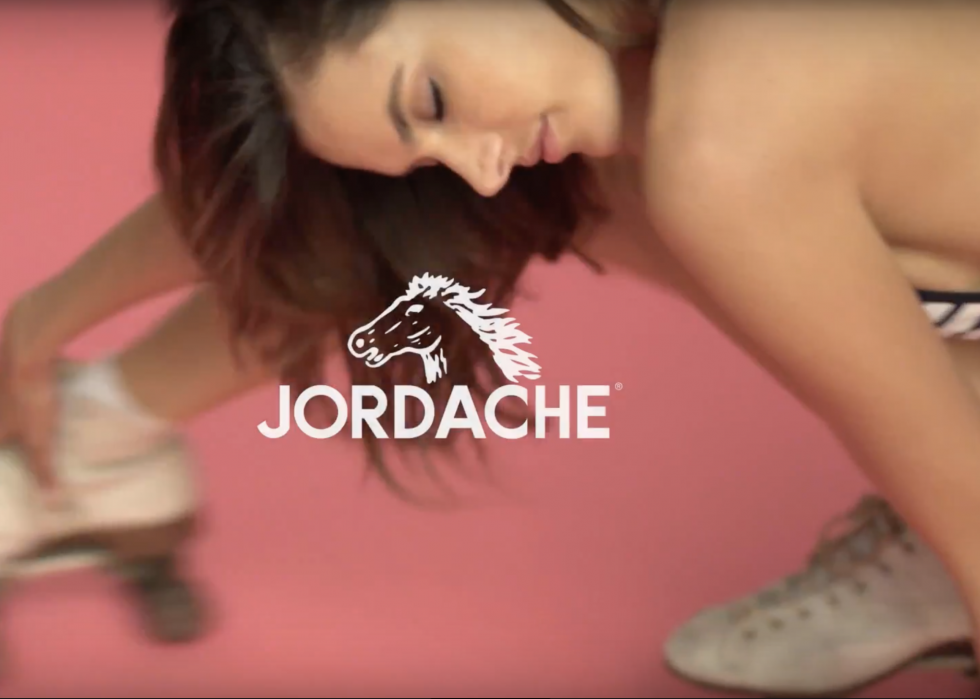
62 / 100
1979: Jordache jeans
By the time Jordache stormed the way earth in 1979, the company had already been in business organization for 17 years. But the company's meteoric rising tin be traced to an ingenious ad entrada that featured a seemingly topless woman wearing skin-tight Jordache jeans, and aught else, while riding a equus caballus. She was soon joined by a shirtless man, as well clad but in Jordache denim. The networks refused to air the ad but a few New York stations picked information technology upwardly, which stirred controversy—and overnight success for Jordache.
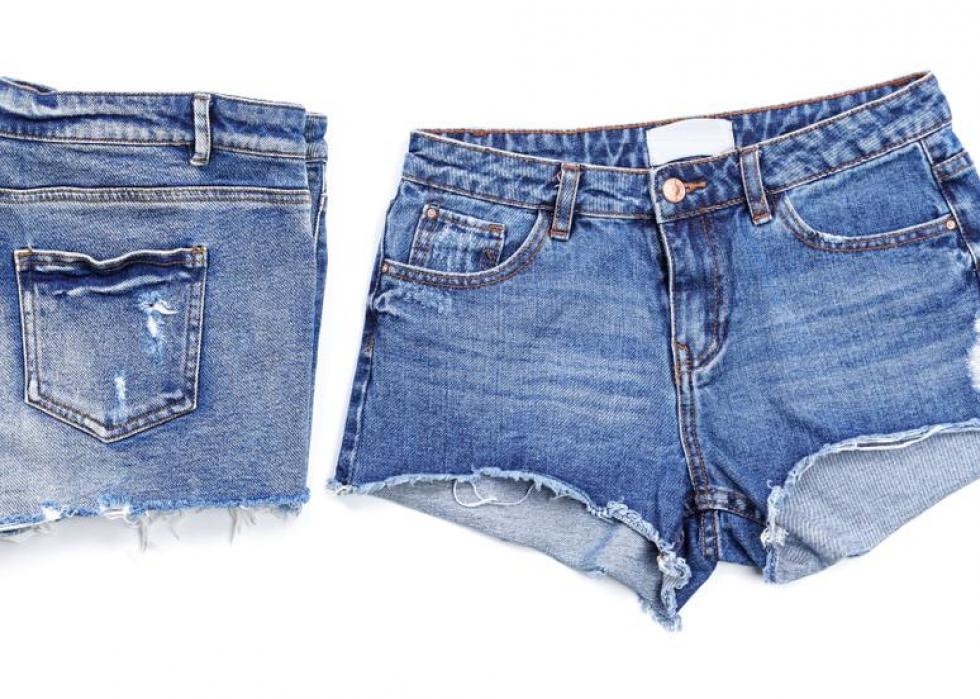
63 / 100
New Africa // Shutterstock
1980: Daisy Dukes
Offset, there were miniskirts, then there were hot pants, only 1979 launched what just might be the well-nigh iconic tendency in the history of ogle-inducing, leg-revealing style. That year, "The Dukes of Hazzard" debuted, starring Catherine Bach as Daisy Knuckles. She was an instant sex symbol, the denim cutoffs she wore became synonymous with her character's proper noun, and past 1980, brusk shorts got just a little bit shorter.
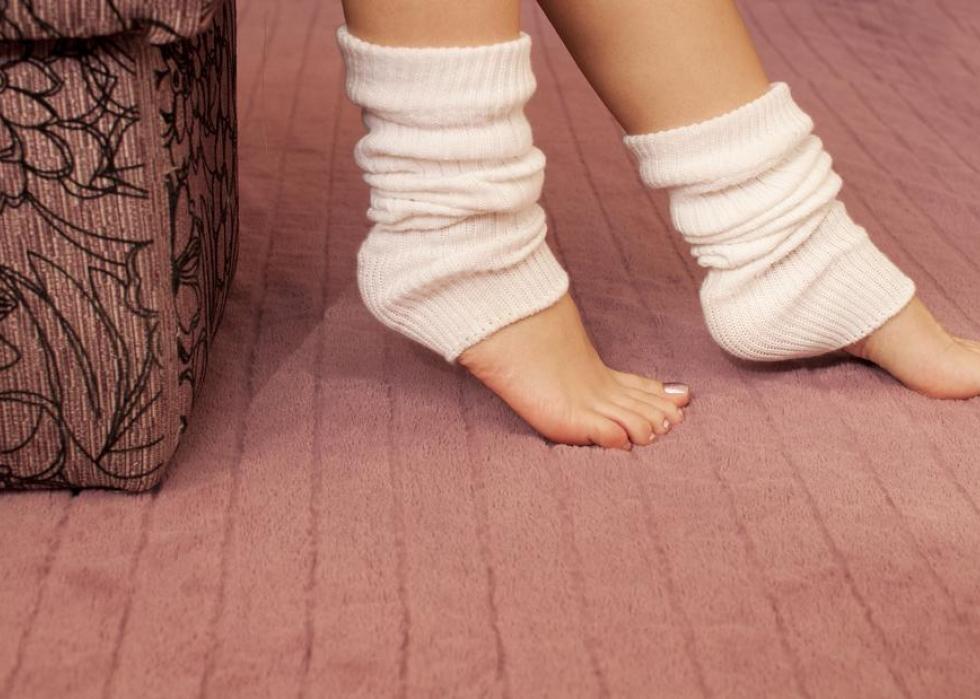
64 / 100
1981: Leg warmers
In the early 1980s, the aerobics craze took off, and there was patently widespread fearfulness that the exercise fad could somehow freeze the legs of its practitioners—merely merely beneath the knee joint. Thick, footless socks—often colored in brilliant neon—began appearing en masse on shins and calves both inside exercise classes and out. The era of leg warmers had arrived.
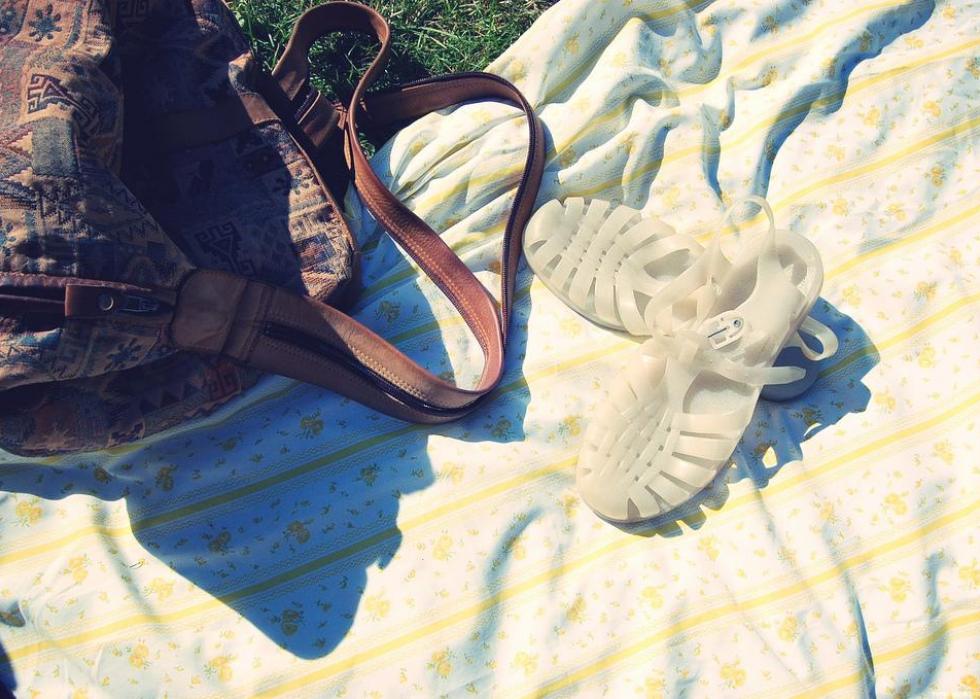
65 / 100
king of beasts middle vintage // Flickr
1982: Jelly sandals
Rubberized plastic shoes were the footwear of option for girls and women akin all across America in the early 1980s. They've gone in and out of fashion in the ensuing years, merely jelly sandals enjoyed their true heydey starting effectually 1982, when Grendene Shoes claims to have introduced them.
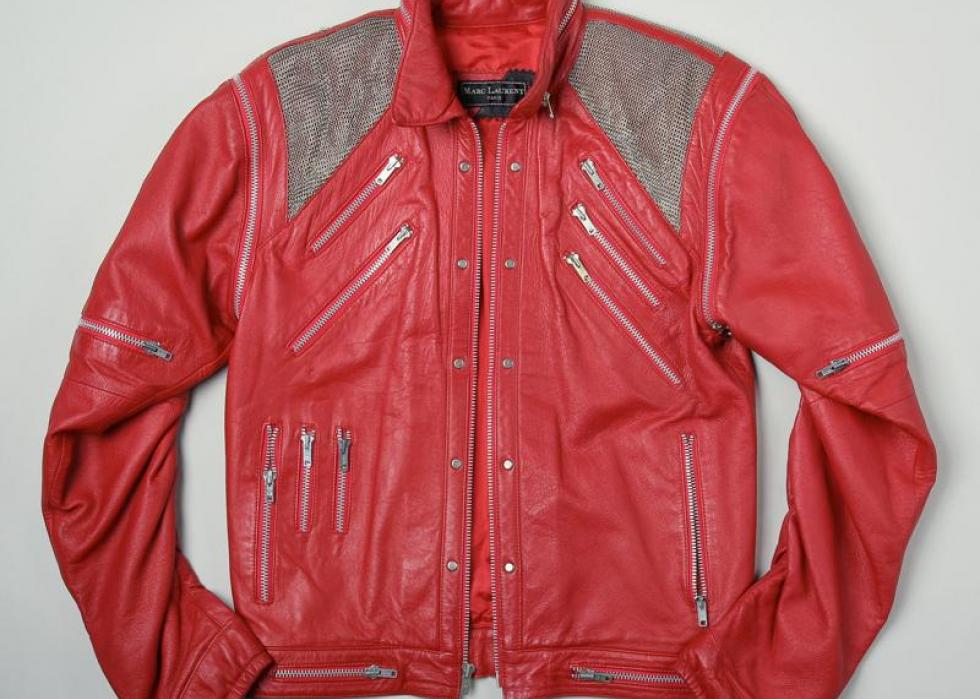
66 / 100
Schröder+Schömbs PR _ Brands // Flickr
1983: Thriller jacket
On Dec. 2, 1983, xiii minutes changed the earth. That was the duration of Michael Jackson's "Thriller" video, the MTV masterpiece that both launched the music video era and at the aforementioned time represented its zenith. The iconic reddish jacket with V-shaped red stripes that the King of Pop wore in the video was an instant phenomenon. When the original sold for $1.eight 1000000 in 2011, the heir-apparent reportedly chosen it "the greatest piece of rock and ringlet memorabilia in history."
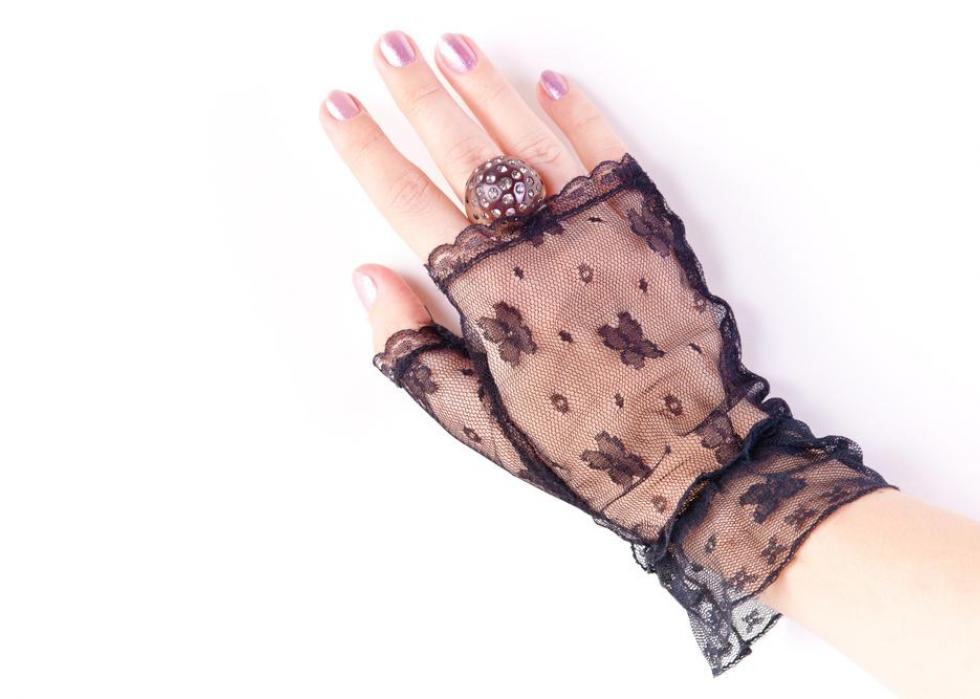
67 / 100
1984: Fingerless gloves
Madonna was not the simply tendency-setting glory whose ensemble included cut-off gloves, but she was one of the most visible. On the edge of punk and pop, fingerless gloves shortly found their way from the hands of Madonna to legions of her fans who copied her conformity-shattering style.
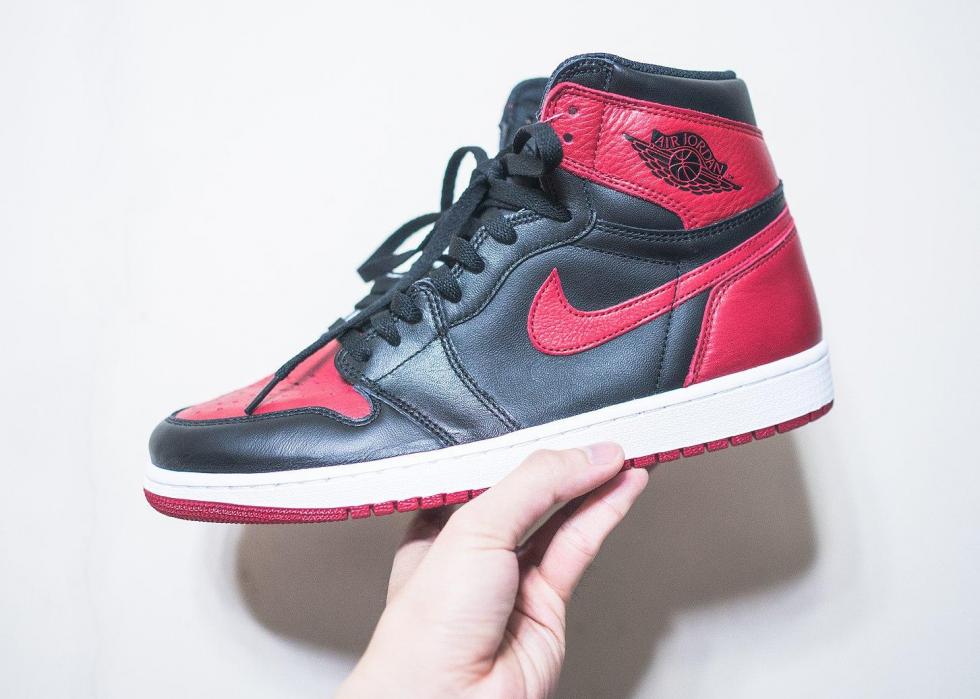
68 / 100
Ting Him Mak // Wikimedia Commons
1985: Air Jordans
While Michael Jackson was busy owning the pop culture space of music, some other Michael was setting red-and-black leather trends of his own. In 1985, the original Air Jordan sneaker was released—and the era of loftier-end luxury athletic sneakers had begun. That twelvemonth, Jordan made the jump from basketball great to global entrepreneur and way mogul, and fans all over the earth rushed to the local shoe store to encounter if they could afford a pair of his sneakers for themselves.
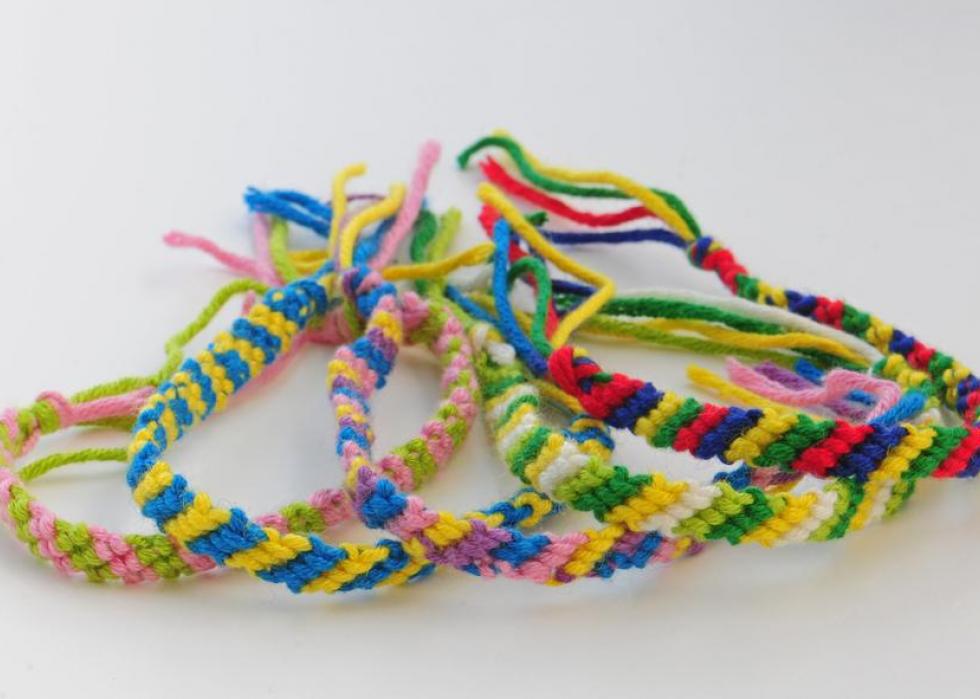
69 / 100
Nancy Bauer // shutterstock
1986: Friendship bracelets
From bell-bottoms to peasant blouses, the trends that divers the hippie era of the 1960s have resurfaced from fourth dimension to time. The mid-to-late 80s were i of those times, as countless brightly colored, handmade bracelets crafted from thread or yarn were woven, exchanged, and worn as symbols of friendship, often until close to the point of decay.
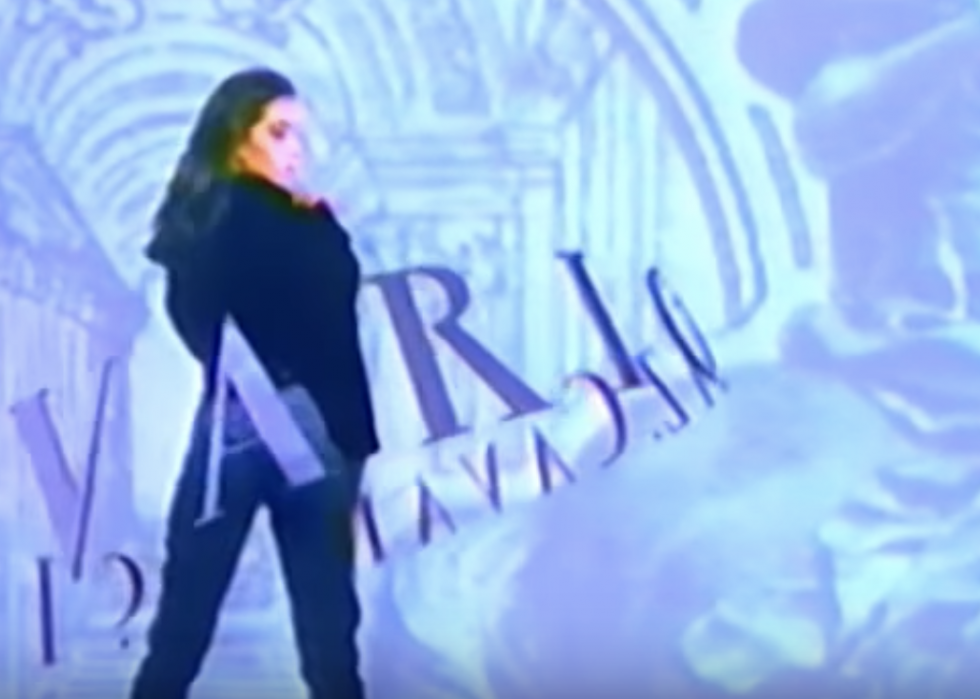
70 / 100
Keith Richardson // YouTube
1987: Z Cavaricci pants
Z. Cavaricci launched in 1982, but when the brand's blockbuster Cateye pants striking stores in 1987, customers flocked to those stores to snag a pair for themselves. Like Air Jordans before them, Z. Cavs were pricey, but if you had the cash, that little white tab in on the fly gained you instant access to the in-crowd.
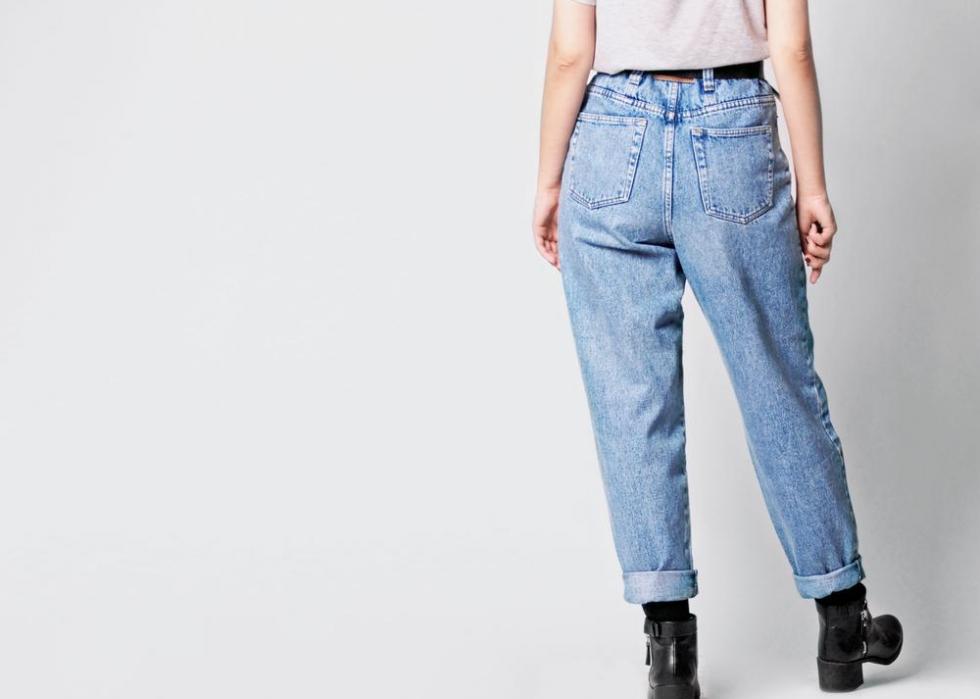
71 / 100
o.przybysz // Shutterstock
1988: Pinch-rolled jeans
In 1988, information technology wasn't and so much the brand of jeans that mattered, merely what was going on at the cuff around the ankle. The trend of pinching and rolling pant bottoms into ankle-hugging cuffs took off in the '80s, becoming standard operating procedure by the shut of the decade. In 1990, "Beverly Hills 90210" would immortalize the look every bit a required element of the standard suburban prep compatible.
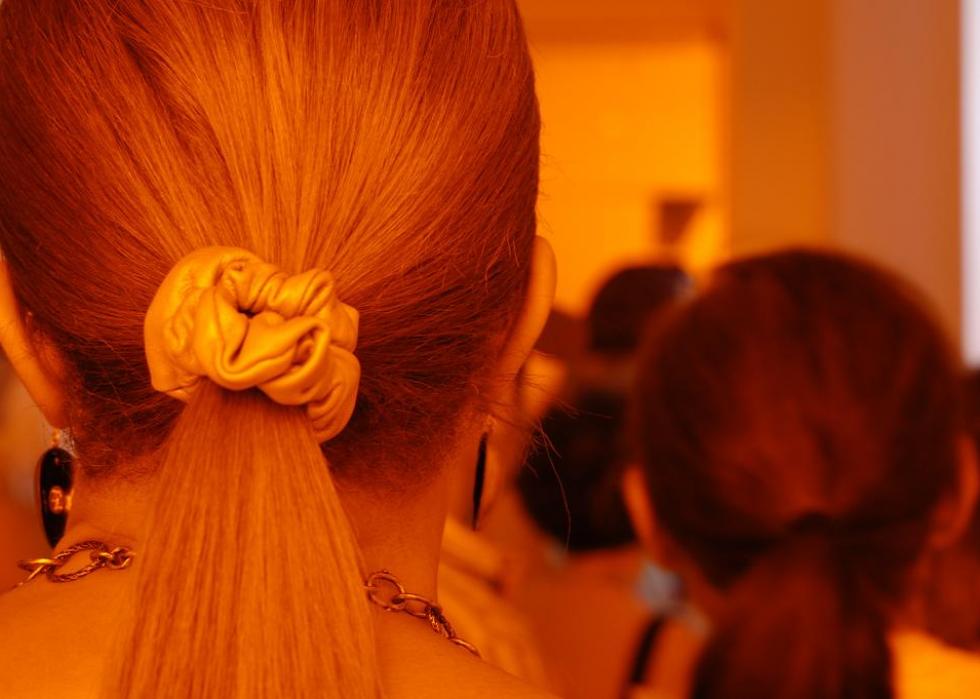
72 / 100
1989: Scrunchies
In 1989, standard hair ties would no longer suffice for pulling dorsum ponytails. Scrunchies, a riff on the make proper name Scunci, were the must-have rubberband material bands that became all the rage in 1989 and endured well into the '90s.
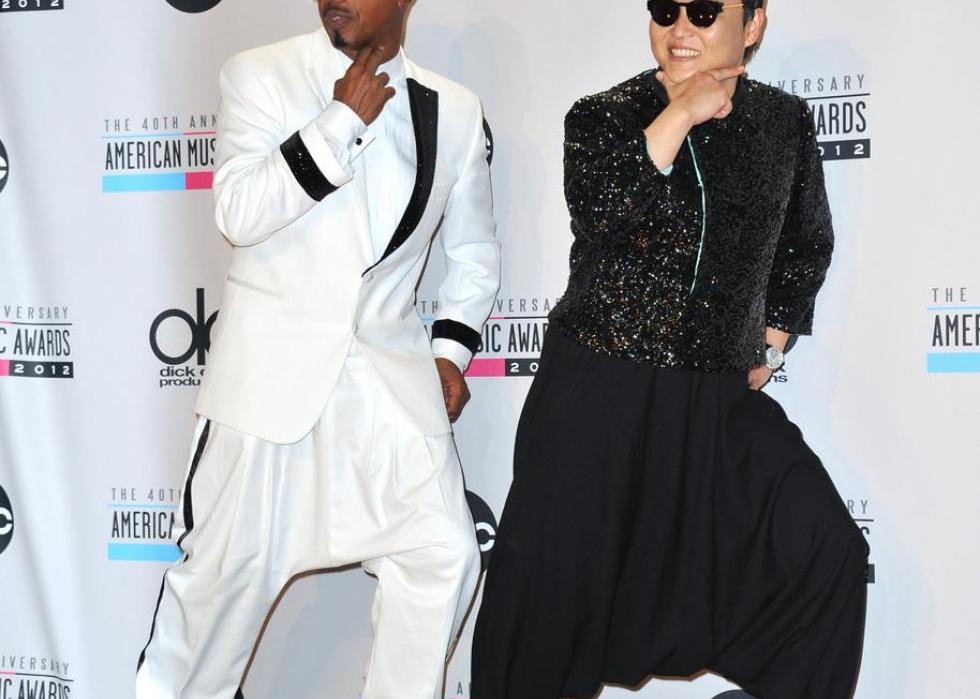
73 / 100
Jaguar PS // Shutterstock
1990: Hammer pants
Before 1990, puffy pants that taper from the low crotch to the bottom of the leg were associated with mid-19th century feminists. That year, even so, 1000.C. Hammer released the smash hit single "U Tin't Touch on This." From that moment on, what had been called "parachute pants" or "harem pants" would exist forever known as Hammer pants.
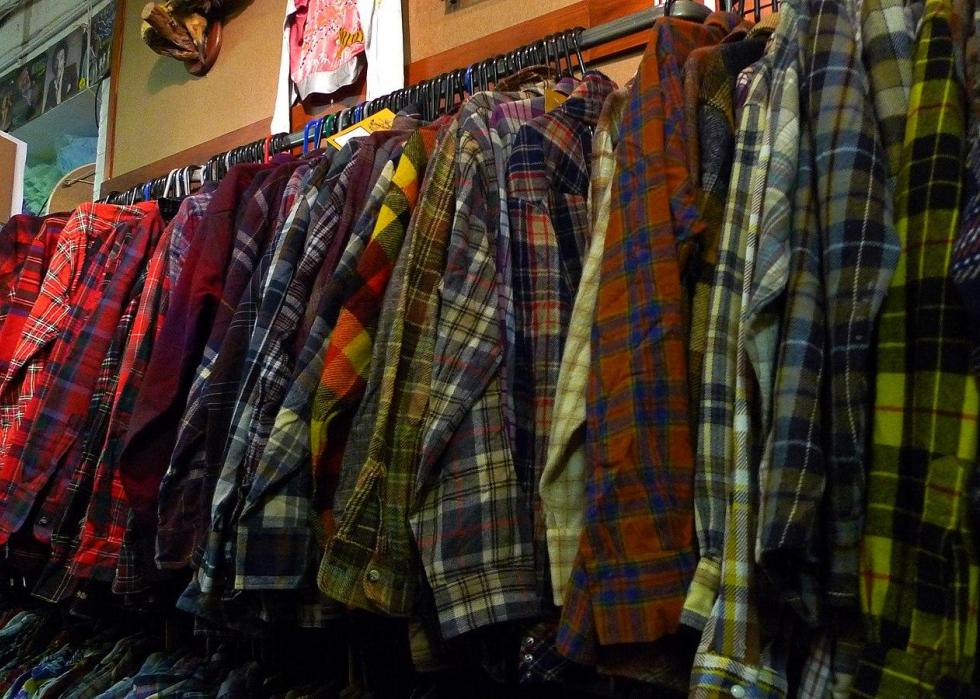
74 / 100
Ewan Munro // Wikimedia Commons
1991: Flannel shirts
Past 1991, the bars and coffee shops of Seattle could no longer comprise the grunge music movement that was born in the city. That yr served as a seismic shift in American music as iii seminal albums were released within the span of a single month: "Ten" past Pearl Jam, "Badmotorfinger" by Soundgarden and "Nevermind" by Nirvana. Grunge had gone national and and then, too, had its Pacific Northwest stylings, which were defined by the centerpiece of the grunge uniform: the flannel shirt.
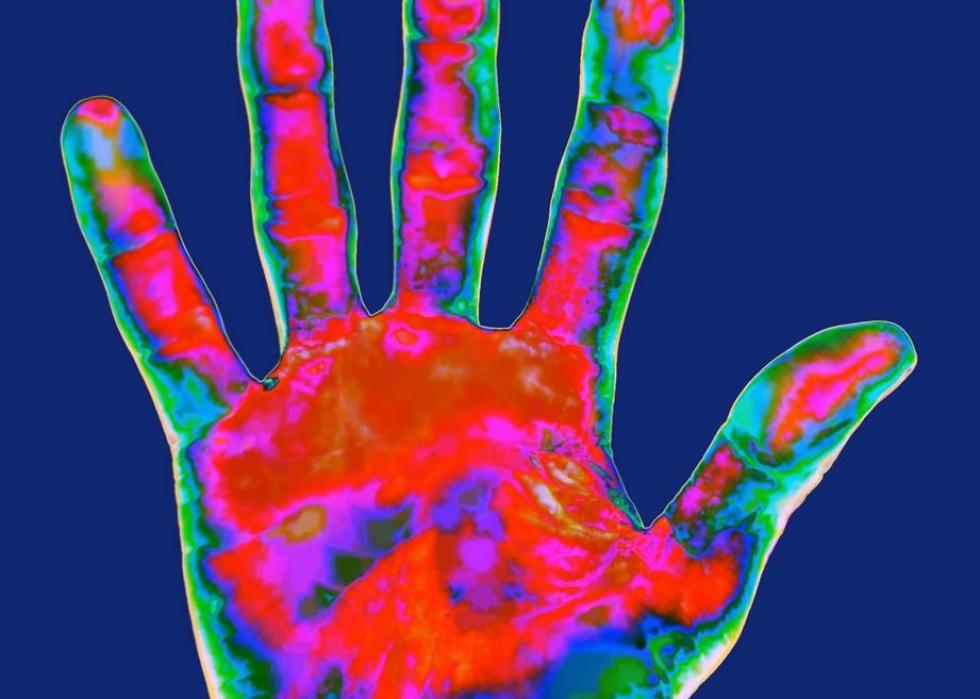
75 / 100
James Doss // Shutterstock
1992: Hypercolor
Put your mitt on a purple shirt and almost instantly a perfect bright pinkish handprint is left behind. That was the magic of Hypercolor, a rut-sensitive clothing fad that won over much of America'due south youth in the early 1990s.
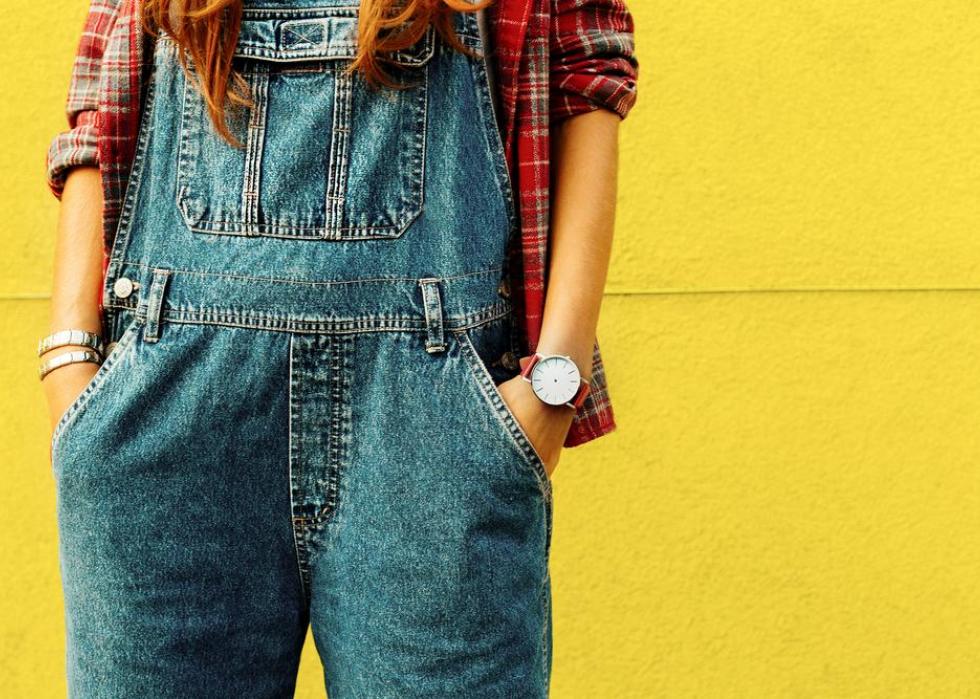
76 / 100
Evgeniya Porechenskaya // Flickr
1993: Overalls
Overalls are currently experiencing a moment of resurgence, but nothing like the farmer-chic craze that swept American eye and high schools in the early 1990s. If you wore them, hopefully you had the good sense to leave one strap unbottoned like Volition Smith.
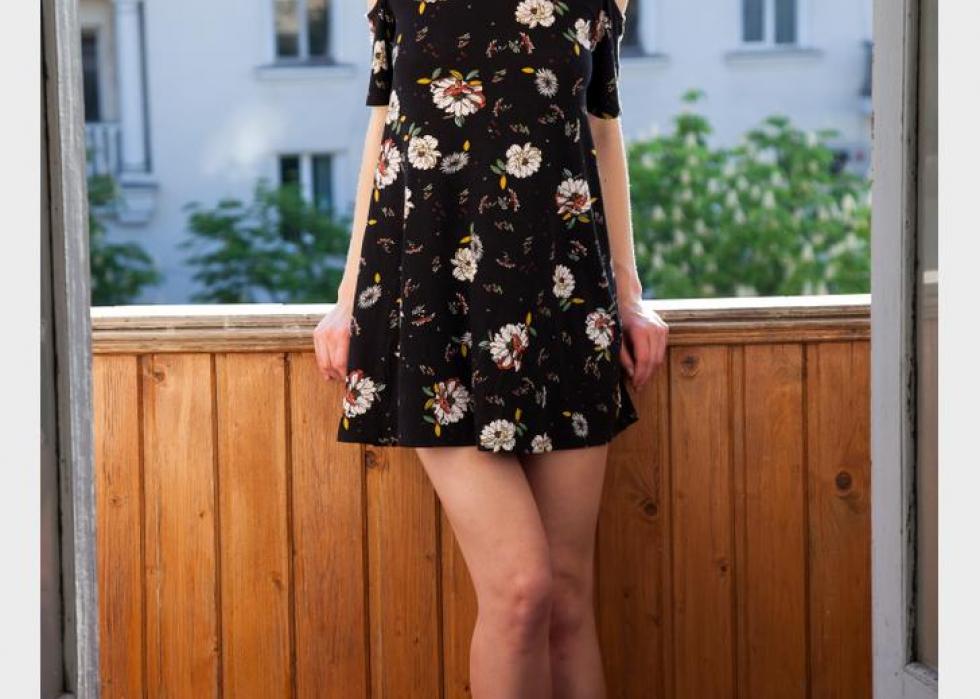
77 / 100
DMITRII SIMAKOV // Shutterstock
1994: Babydoll dresses
By the mid-1990s, girls and women across the country had rallied around babydoll dresses, which were adequately pocket-size, simply also exuded sex appeal. In 1994, the pop sensation supergroup Spice Girls formed, and Emma "Babe Spice" Bunton lived up to her stage proper noun by donning babydoll dresses.
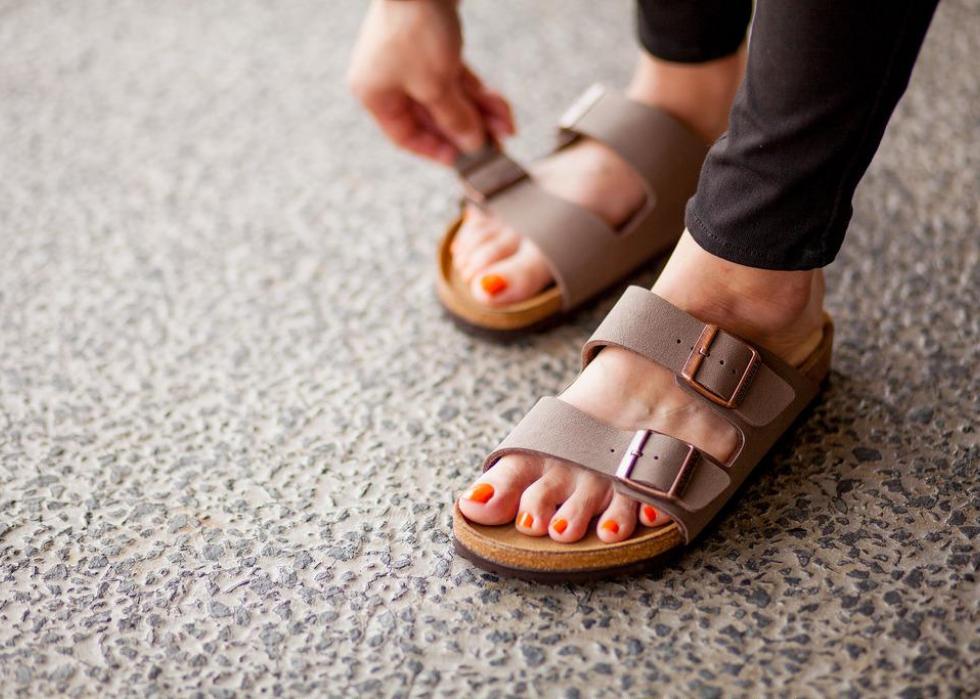
78 / 100
Imahinasyon Photography // Flickr
1995: Birkenstock sandals
Birkenstocks date all the way back to a German language shoemaker in the tardily 1700s, but the modern Birkenstock sandal was born in 1964. The familiar Arizona way debuted in 1973 and from concerts to campus, boardwalks to bistros, they seemed to exist on everybody's feet past the mid-'90s. In 1996, the company would offer more than 300 fashion and color combinations.
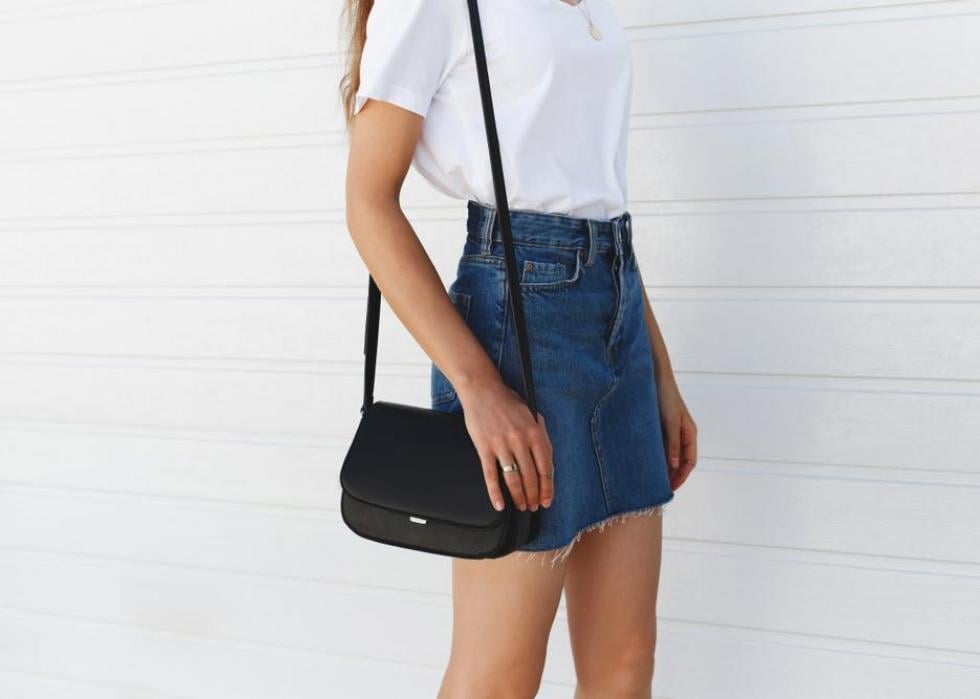
79 / 100
Nesolenaya Alexandra // Shutterstock
1996: Denim skirts
From dissever-fronts to blue pockets, button-fronts to red bombs, denim skirts in the mid-1990s seemed to exist more popular than full-length jeans for everyone from eye-school girls to onscreen celebrities. The year 1996, however, proved to be a watershed moment for the denim skirt when ultimate '90s sexual practice symbol and "Baywatch" baby Pamela Anderson rocked one with a skin-tight, girl-ability crop top.
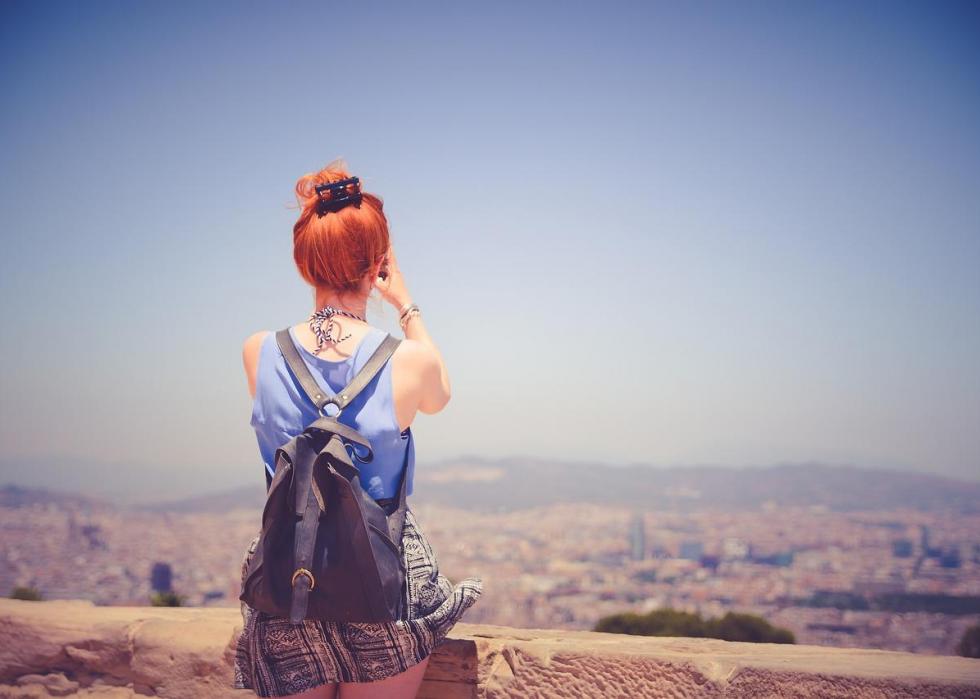
eighty / 100
1997: Backpack purses
It can't exist definitively stated that Alicia Silverstone's character in 1995'south "Clueless" started the tiny backpack craze, but by 1997, they were everywhere. Largely unflattering and horribly impractical, haversack purses, every bit they were frequently called, were a primal accessory of the era.
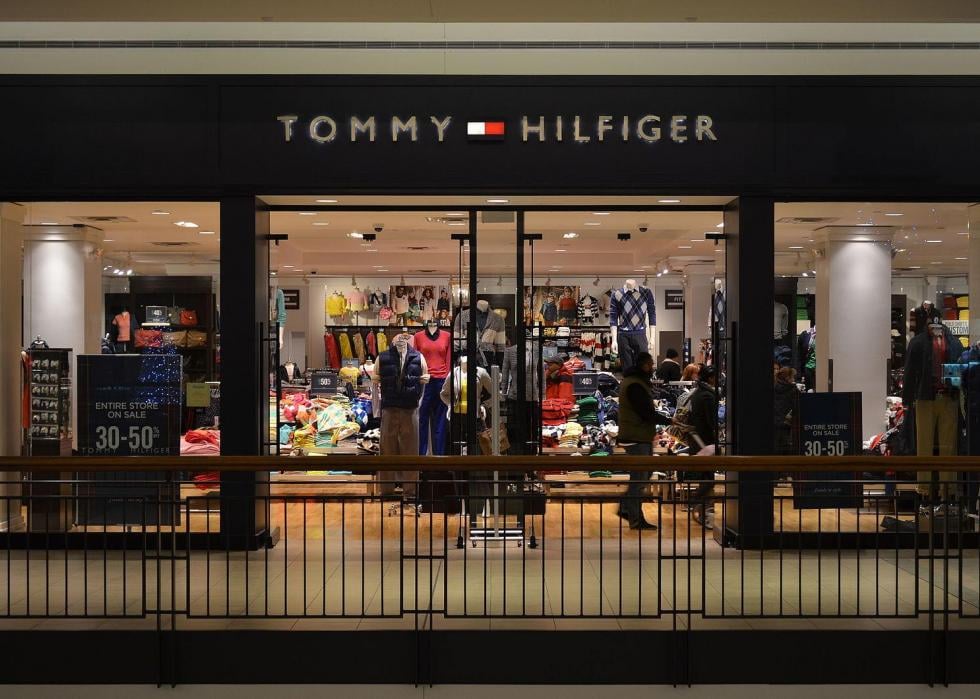
81 / 100
Raysonho @ Open Grid Scheduler // Wikimedia Commons
1998: Hilfiger everything
By the mid-1990s, Tommy Hilfiger had set his massively successful brand apart as a downstreet alternative to the chic stylings of competitors similar Calvin Klein and Ralph Lauren. Although the make went through several incarnations, the Hilfiger heydey was well-nigh certainly the 1990s, when the clothing was office of the uniform for both inner-metropolis hip-hop artists and the legions of pretenders in the suburbs who hung on their every move. The year 1998 was a watershed for Hilfiger thank you to supergroup Destiny'south Child, who flaunted the crimson, white, and blue every bit their brand of choice—Britney Spears, Gwen Stefani, TLC, and other headline acts got in on the craze also.
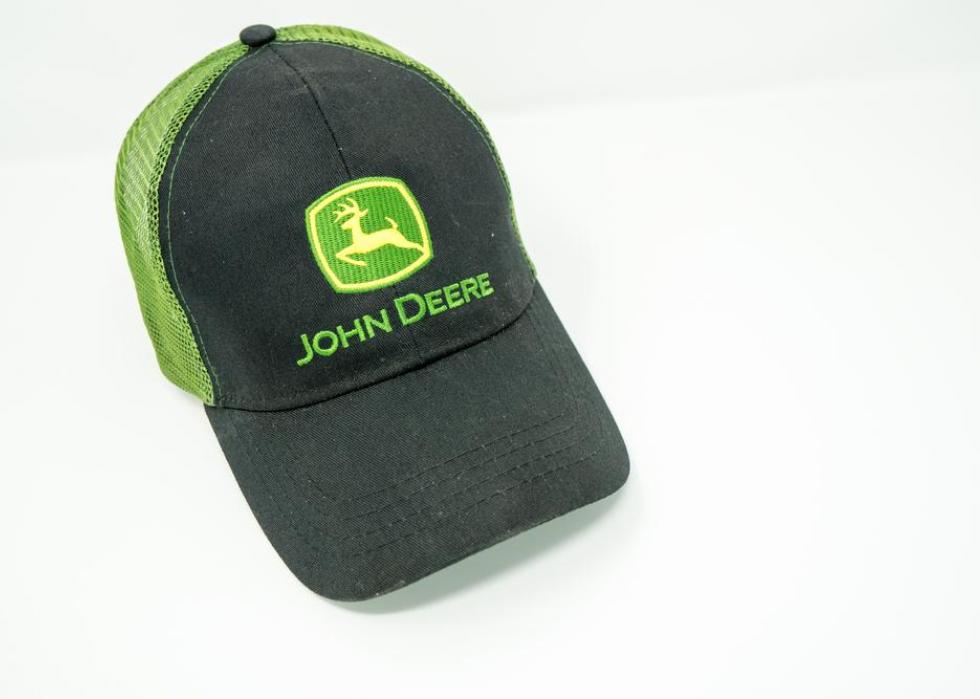
83 / 100
melissamn / Shutterstock.com
2000: Trucker hats
In 2000, the bear witness "Jackass" debuted and "That '70s Prove" was at the height of its popularity—and both Johnny Knoxville of the former and Ashton Kutcher of the latter were true believers in the trucker lid fad. Made from plastic mesh, foam, and little else, trucker hats were originally functional accessories built-in out necessity. But like flannel shirts, Dr. Marten boots, and so many trends that came before, blueish-collar Americans who had worn them forever were largely dumbfounded when trucker hats were co-opted by celebrities and hip trendsetters.
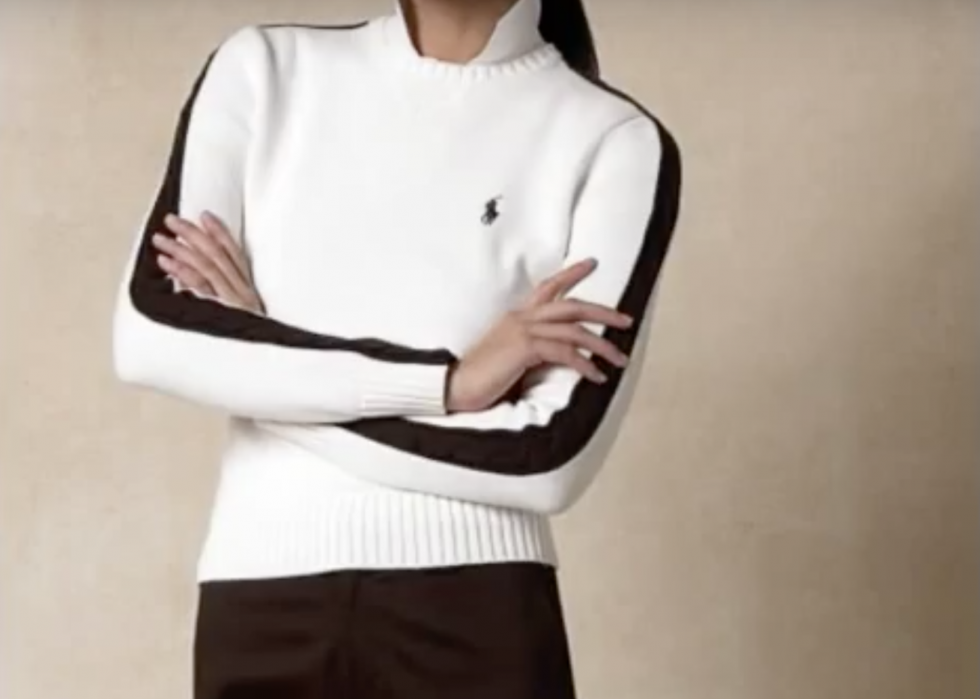
84 / 100
2001: Popped collars
Although Kanye West occasionally rocks a popped collar today, the controversial rapper by no ways blazed a fashion trail with that detail await. Collars intentionally raised on Polo shirts and button-downs was a trend among well-heeled country club yuppies—and the legions of pretenders—in the 1980s. But the tendency got another boost in 2001 from Usher's "Pop Ya Collar."
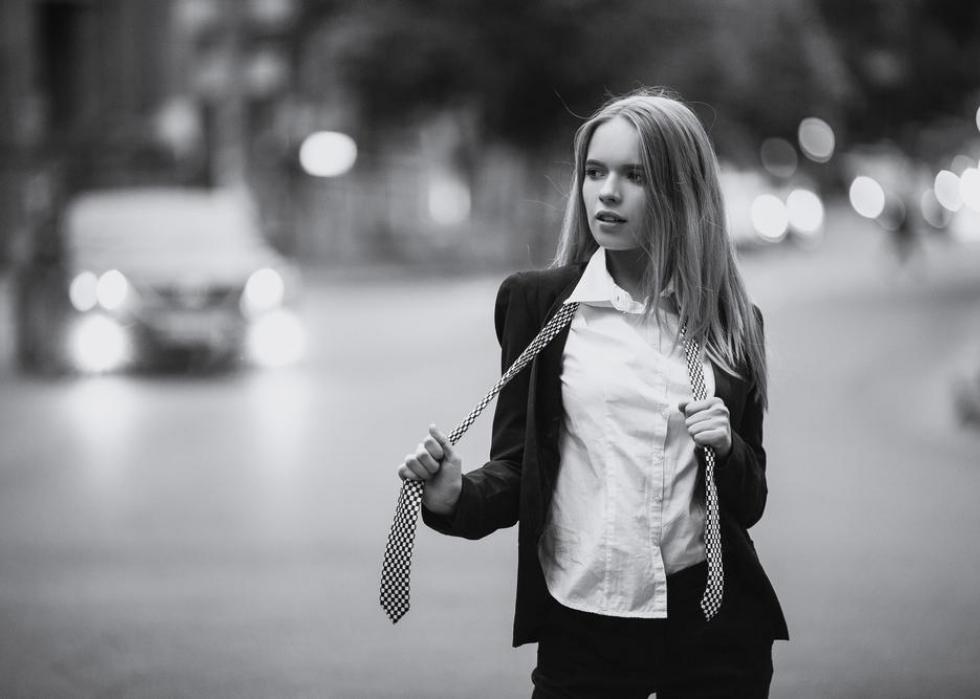
85 / 100
2002: Neckties for no reason
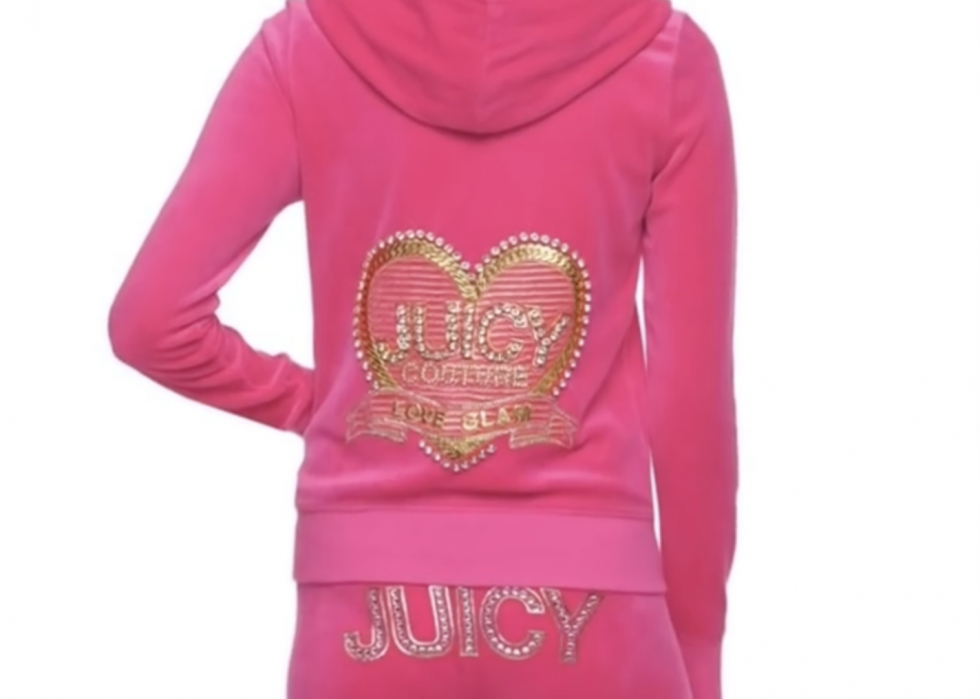
86 / 100
2003: Juicy rail pants
Juicy Couture brought the 1980s-1990s tracksuit movement dorsum into vogue, just with a twist. If you lot felt like you lot couldn't leave the business firm in the early 2000s without seeing allusion-laced writing on the butts of girls and women everywhere, you were not alone. The word "Juicy" sparked a cultural movement, making the seat of your pants the go-to spot to slap a logo.
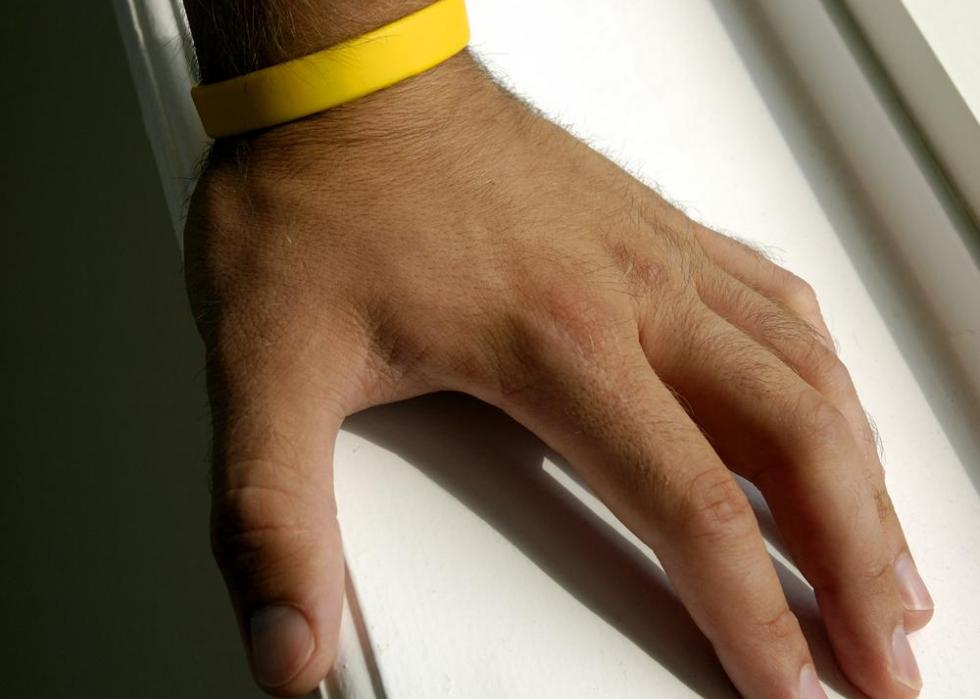
87 / 100
Norman Pogson // Shutterstock
2004: Livestrong bands
Before he was outed every bit a cheater, cancer survivor Lance Armstrong was the king of the cycling universe and the heed backside a well-intentioned fundraising prop that turned into a global way miracle. Yellow rubbery Livestrong bracelets were originally sold to raise money for cancer, only shortly became a must-have fashion statement that spawned a laundry list of associated bracelets with their ain colors and causes.
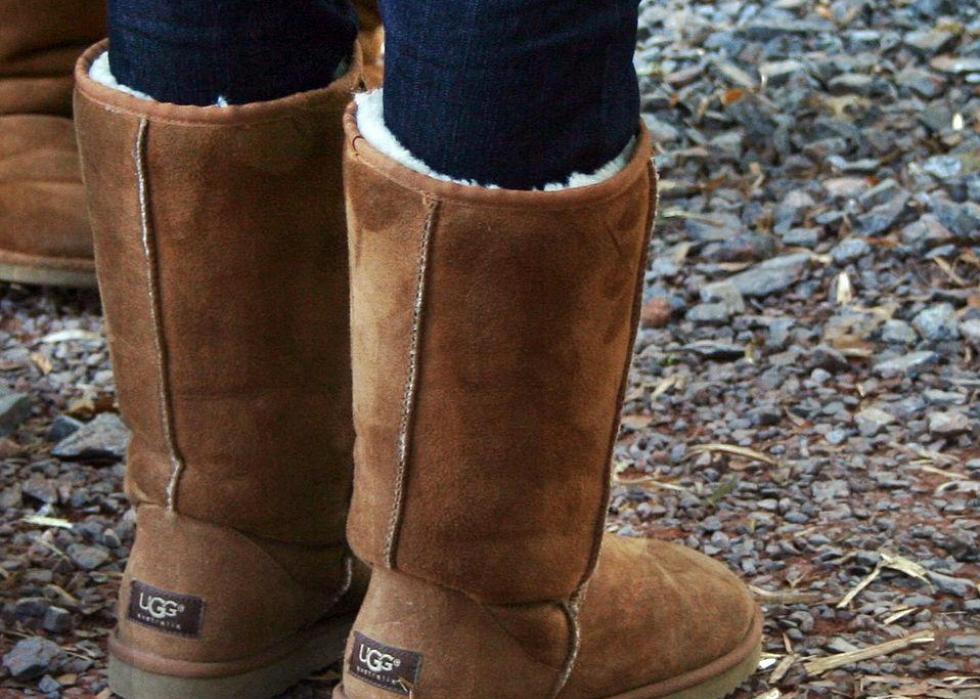
88 / 100
TexasDex // Wikimedia Eatables
2005: Ugg boots
Although Uggs were born in 1978 and go along to suffer to the nowadays 24-hour interval, the pinnacle of the sheepskin-lined boots' reign was in the mid-aughts. After Oprah named them as one of her favorite things in 2000, the boots spiked in popularity. Past 2005, everyone from Beyonce to Ben Affleck was wearing them—sometimes on the chore.
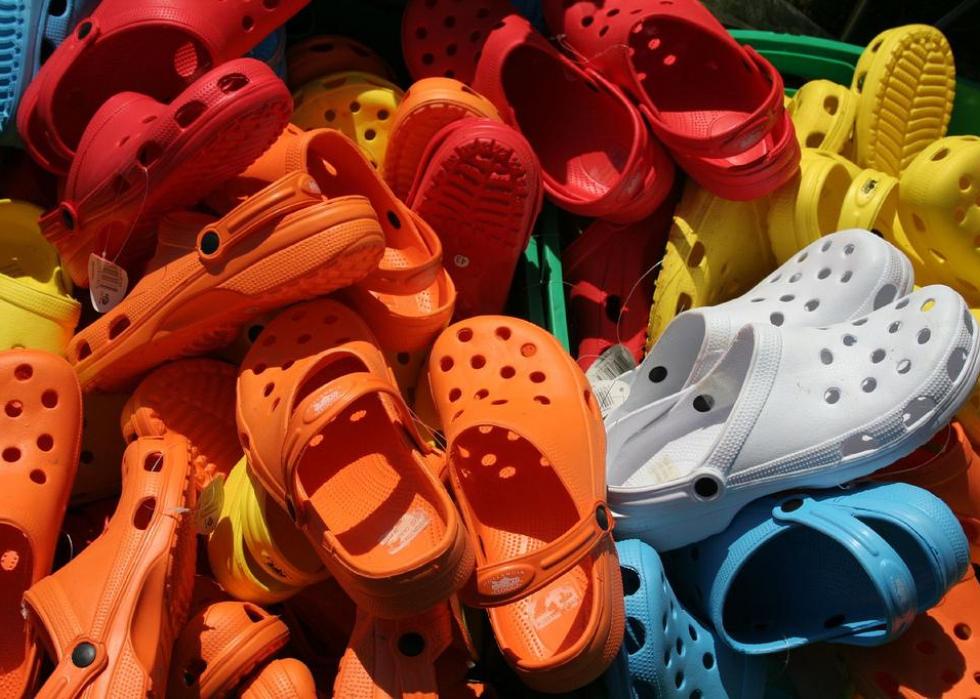
89 / 100
2006: Crocs
These cream, Swiss cheese-holed clogs first appeared in 2002. Simply four years later, the company went from niche to juggernaut equally Crocs made their stock marketplace debut.

90 / 100
De Repente // Shutterstock
2007: Fedoras again
A century after the end of the lid's heydey in the mid-1950s, the fedora returned with a vengeance. This time around, it was no longer the capstone on an elegant formal look that dominated men's wearable civilisation in the early 20th century, nor was it the trademark accessory of gangsters, Rat Packers, and sportswriters. Past 2007, the fedora had been co-opted by hip urbanites, popularized past idols like Brad Pitt, and no longer required formal habiliment to match.
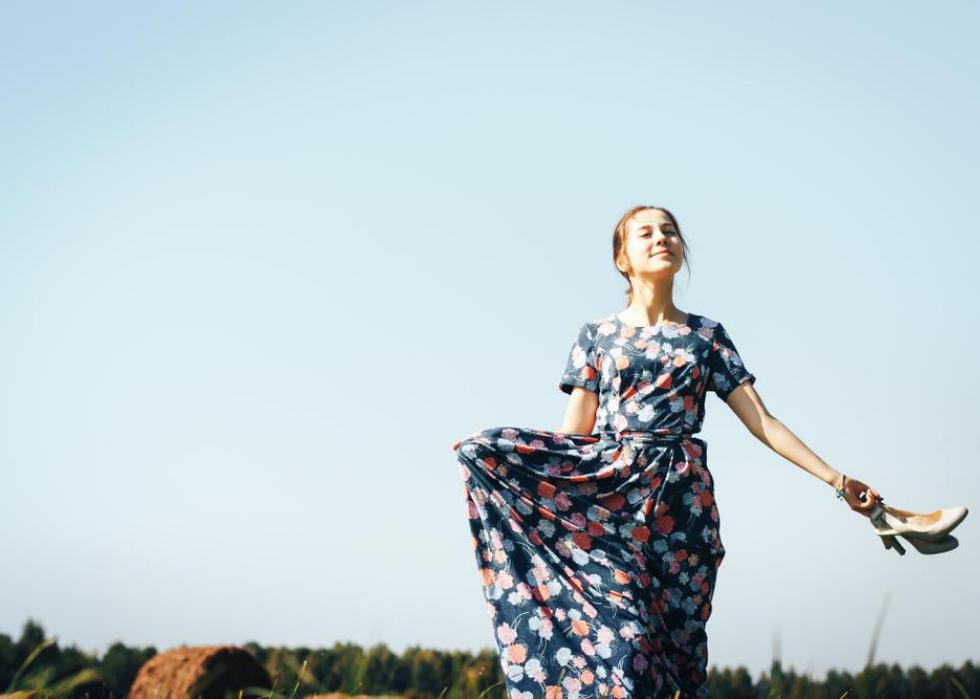
91 / 100
2008: Maxi dresses
Women embraced long, flowing maxi dresses during the bound and summer of 2008, thanks in part to the so-chosen "queen of the maxi dress," Angelina Jolie. Other celebs like Kate Moss joined the craze, leading fashion magazines to proclaim the return of the maxi.
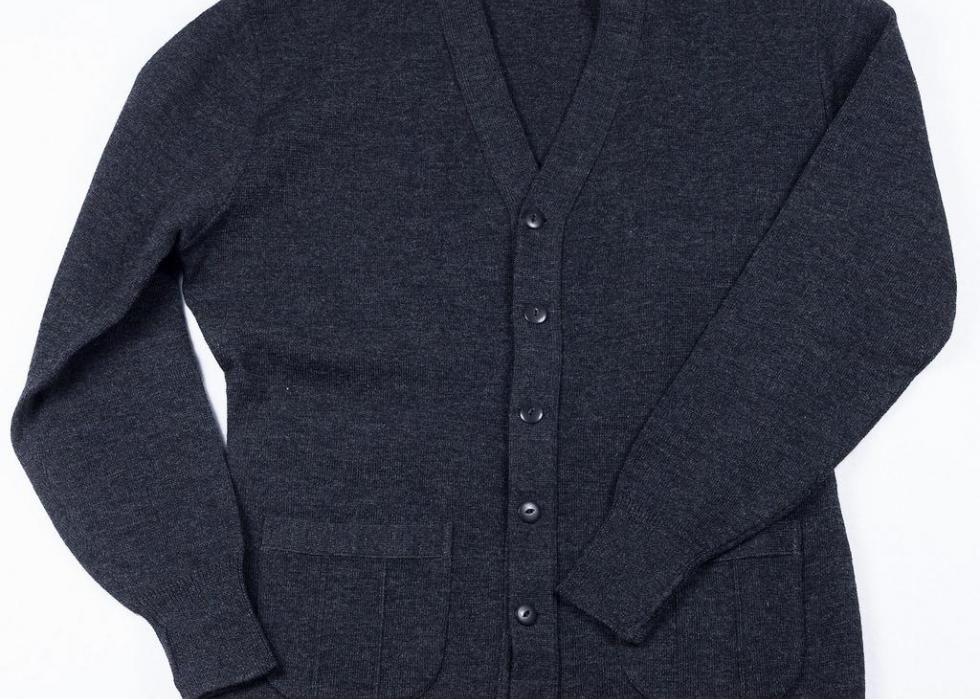
92 / 100
menswear-market.com // Flickr
2009: Cardigan sweaters
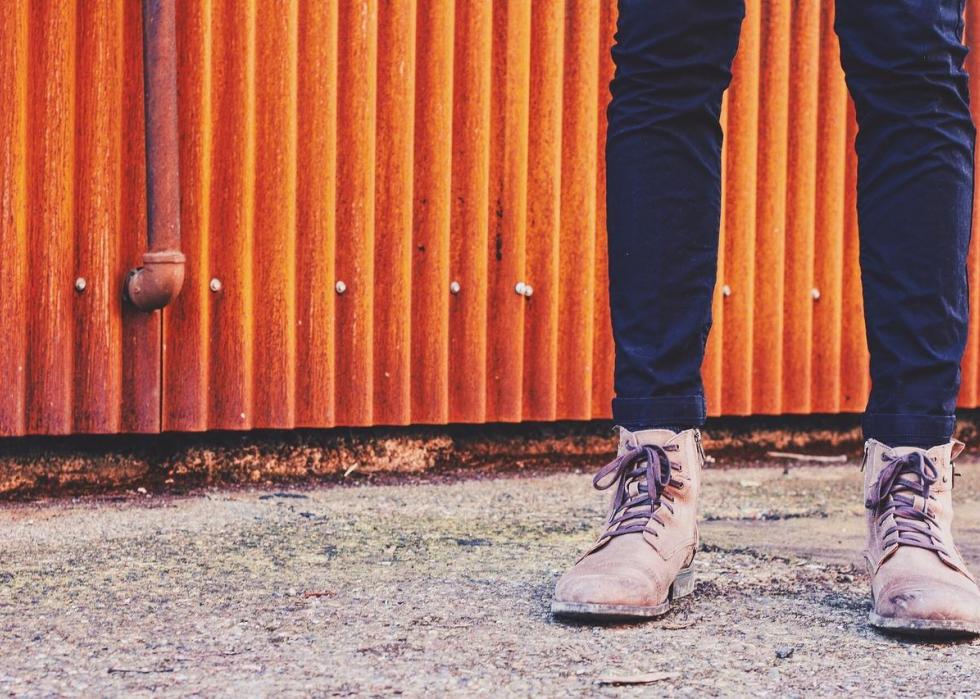
93 / 100
2010: Skinny jeans
Sid Vicious and the Ramones wore skinny jeans in the 1970s, while acts like The Strokes carried their manner into the early aughts. In 2010, however, NPR proclaimed skinny jeans the new "rock fashion." The pants likewise became associated with hipsters, normally in derisive mode. But the tendency got and so out of hand that eventually, fifty-fifty babies were sporting skinny jeans.
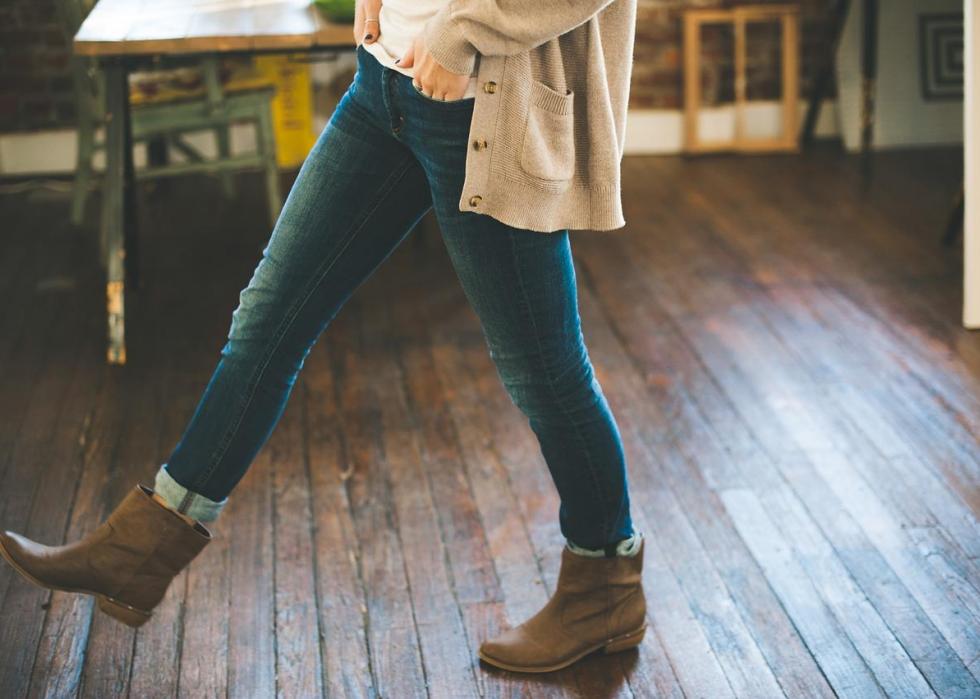
94 / 100
2011: Jeggings
History is unkind to many fashion trends, few more than ruthlessly than the much-maligned jeans/leggings combo known as jeggings, which stretched over legs of all shapes and sizes throughout 2011. The Daily Beast chosen them "denim-colored sausage casings" and "the 21st century'due south worst fashion trend," but it was the movement's adherents who got the last laugh. In 2011, the Concise Oxford English Dictionary added "jeggings" to the official American vocabulary.
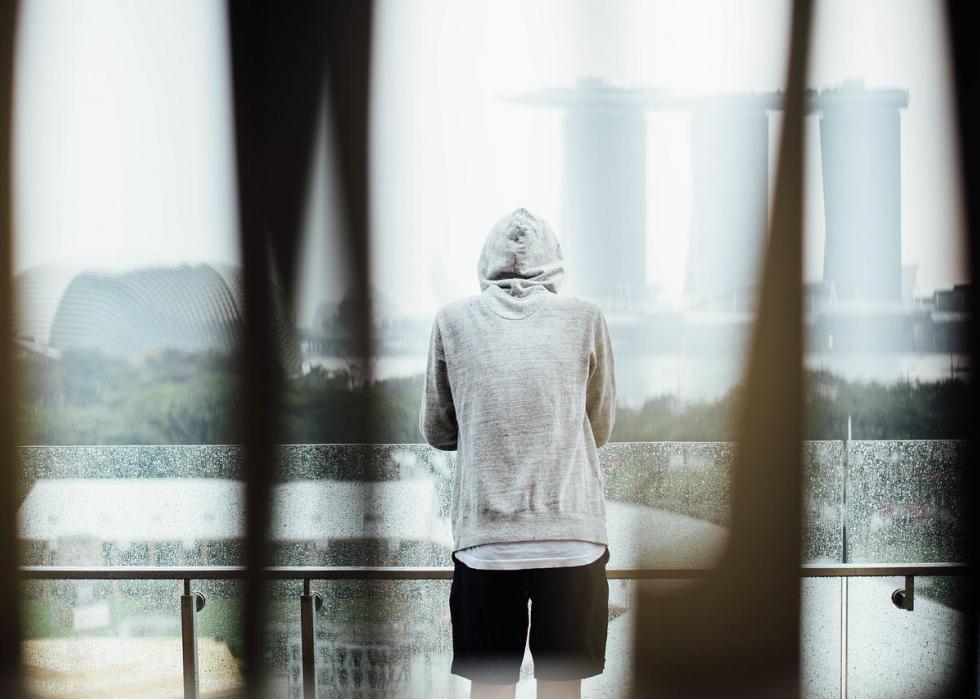
95 / 100
2012: Hoodies
The first hooded sweatshirt was produced in 1919 and served for decades as a utility shirt for outdoor workers, simply the hoodie became the uniform of a movement with the 2012 killing of Florida teenager Trayvon Martin. To supporters of gun-toting, stand-your-ground-law defendant George Zimmerman, who was somewhen acquitted of Martin's murder, the hoodie was a sign of trouble. To the Black Lives Matter movement and its supporters, hoodies represented a stand up against prejudice, racism, and inequality under the law.
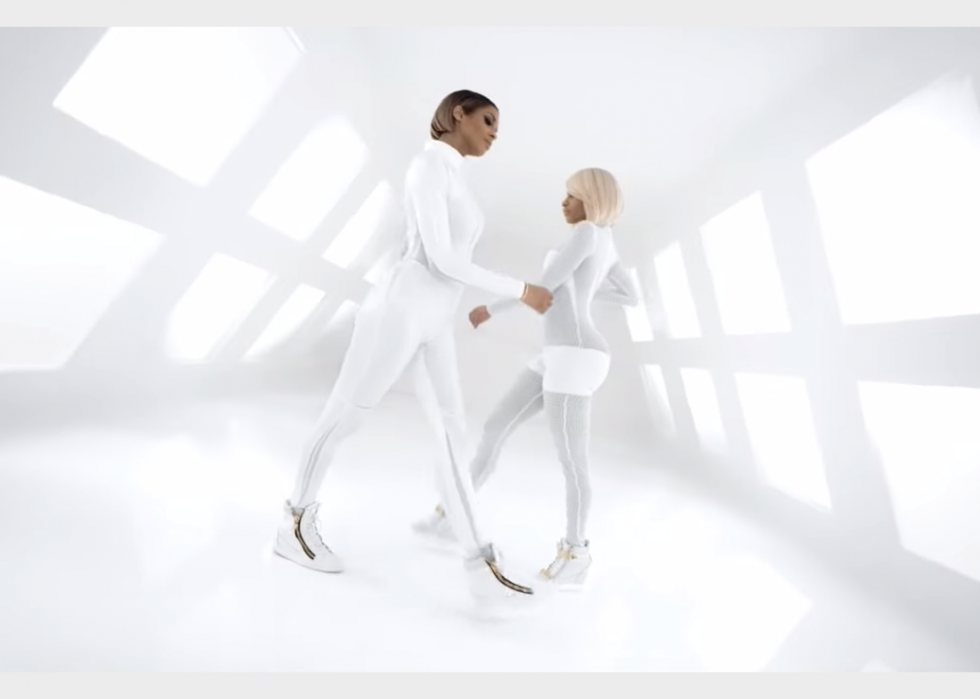
96 / 100
2013: Wedge sneakers
In 2012, Isabel Marant'south Willow Sneaker lit the spark that would plow into the wedge sneaker inferno, which engulfed America and much of the western earth the following year. They were a bona fide craze by 2013, equally Nicki Minaj and Ciara sported them in the music video for "I'm Out" and Alicia Keys launched a wedge sneaker collection with Reebok.
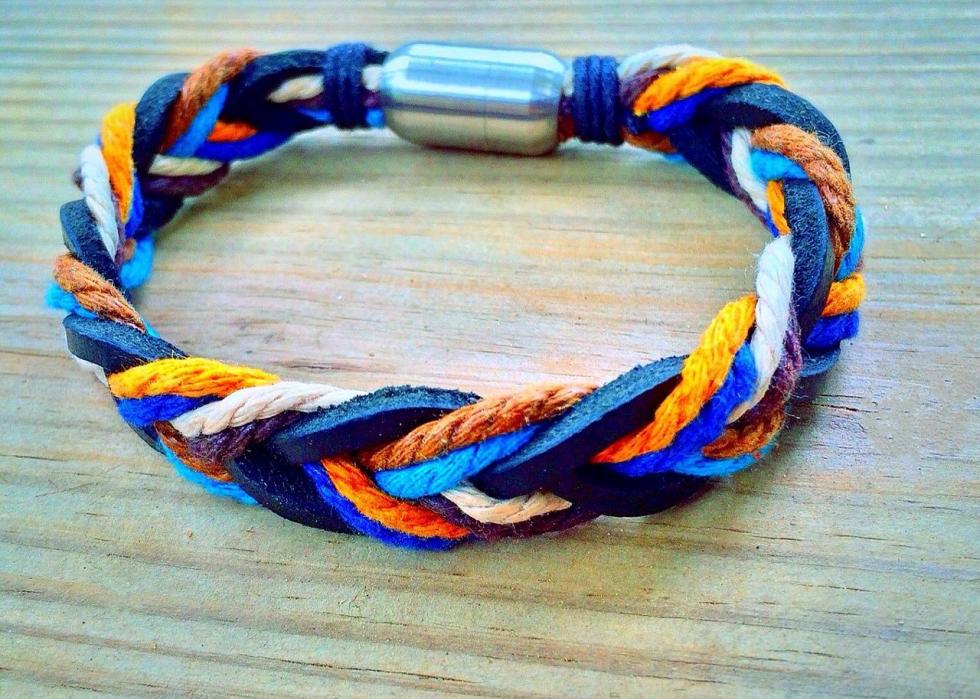
97 / 100
2014: Loom bands
The latest in a long and storied lineage of bracelets that aren't quite jewelry, loom bands dominated youth accessory civilization to a higher place most all else in 2014. Function of the reason the brightly colored interwoven arm-habiliment was then successful is that loom bands seemed to be loved as by both boys and girls.
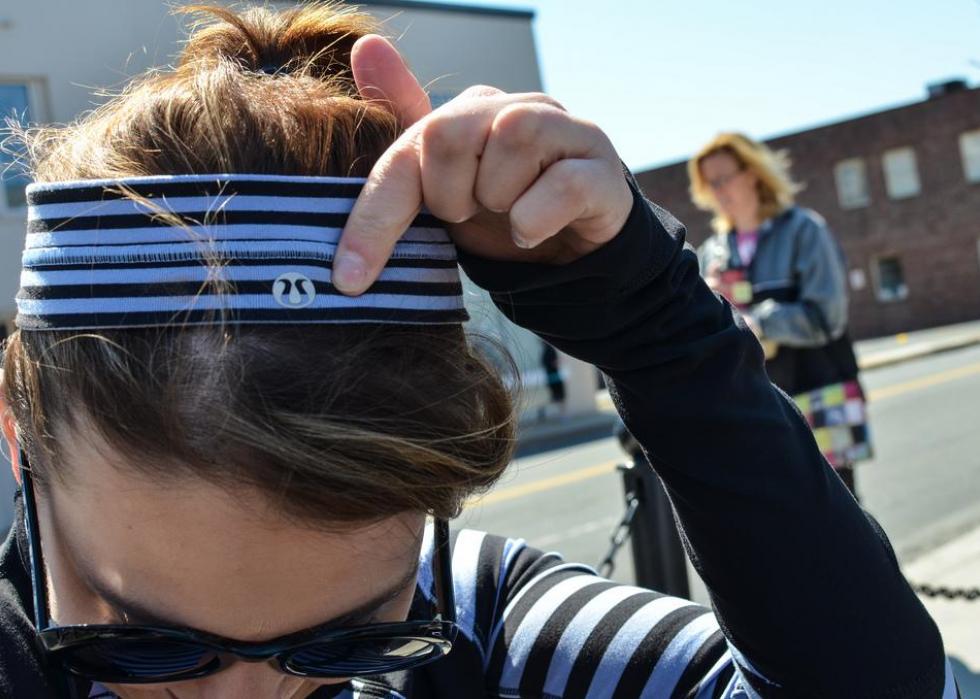
98 / 100
2015: Athleisure
By 2015, yoga pants were no longer just for yoga—or fifty-fifty more often than not for yoga, in a lot of cases. Information technology was the year of athleisure, when Under Armour and Nike surpassed the likes of Gap and Abercrombie & Fitch for millennial habiliment purchases. That twelvemonth, the #FitSpo hashtag dominated Instagram and stretch pants and sports bras became going-out dress.
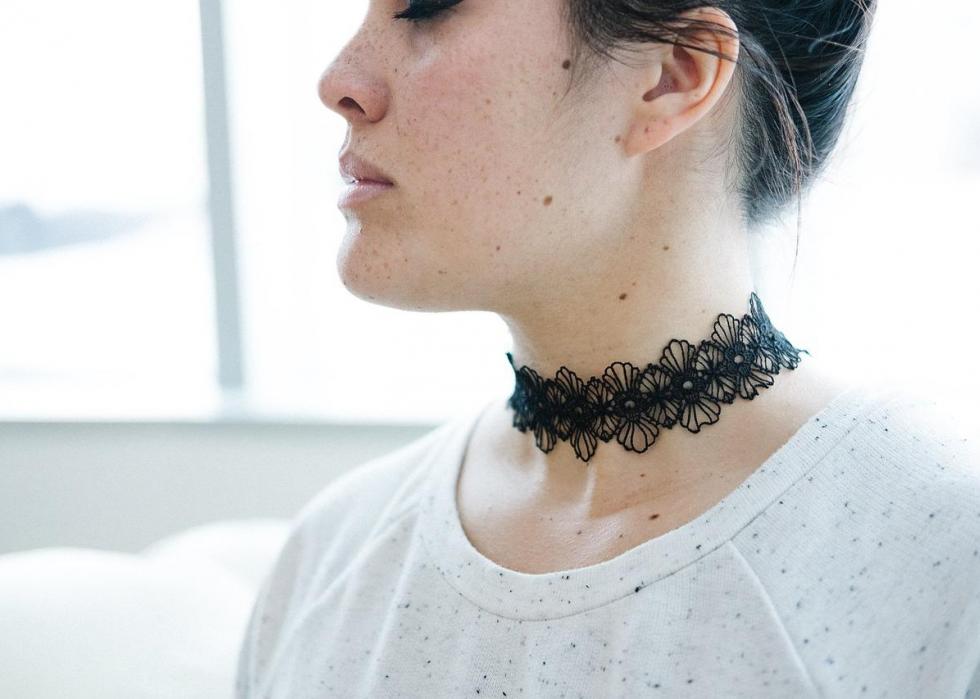
99 / 100
ragdolldesignz // Pixabay
2016: Chokers
Chokers take been hugging women's necks since at least the time of Anne Boleyn, who died in 1536—and they've endured through the ages. The year 2016, yet, might just have been the pinnacle of the fashion statement. Jewel-encrusted, manifestly, velvet, lace, or adorned with a nameplate, you didn't accept to wait far to discover a choker in 2016.
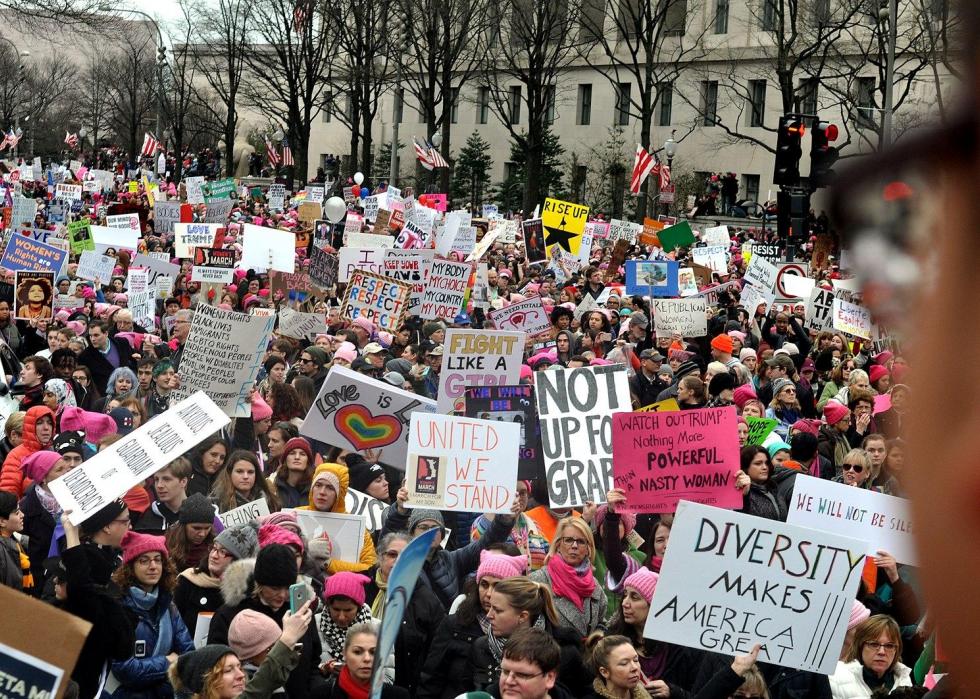
100 / 100
Edward Kimmel // Wikimedia Commons
2017: Girl-power shirts
In response to the election of Donald Trump and the #MeToo movement, masses of women began wearing feminist protest shirts as both a political statement and a style argument. Past 2017, daughter-power shirts were a mainstay, with companies making fortunes designing shirts with slogans like "Matriarch," "Fight like a daughter," and "Sushi rolls not gender roles."
Trending Now
© Stacker 2022. All rights reserved.
0 Response to "Kate Smith Fashion Trends of 1933"
Post a Comment